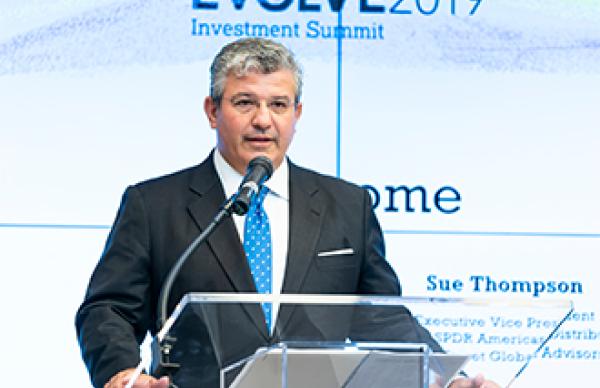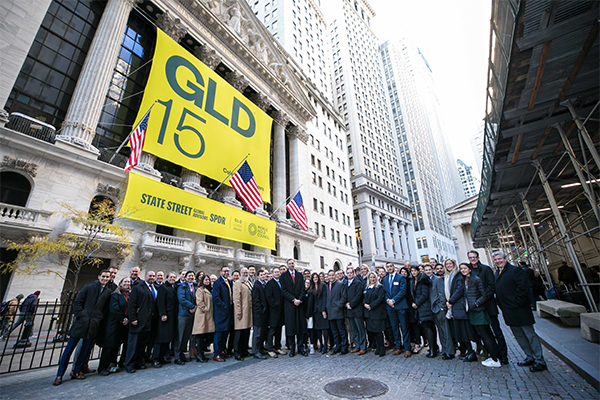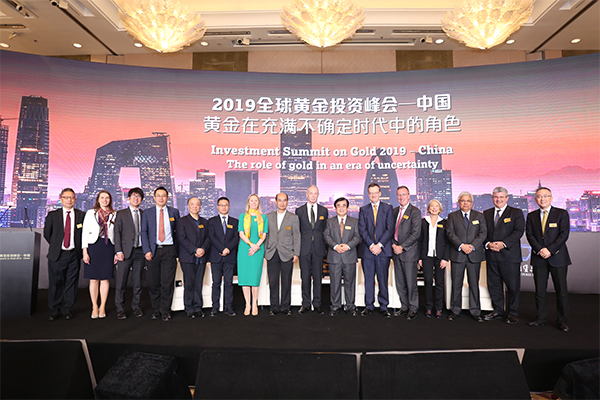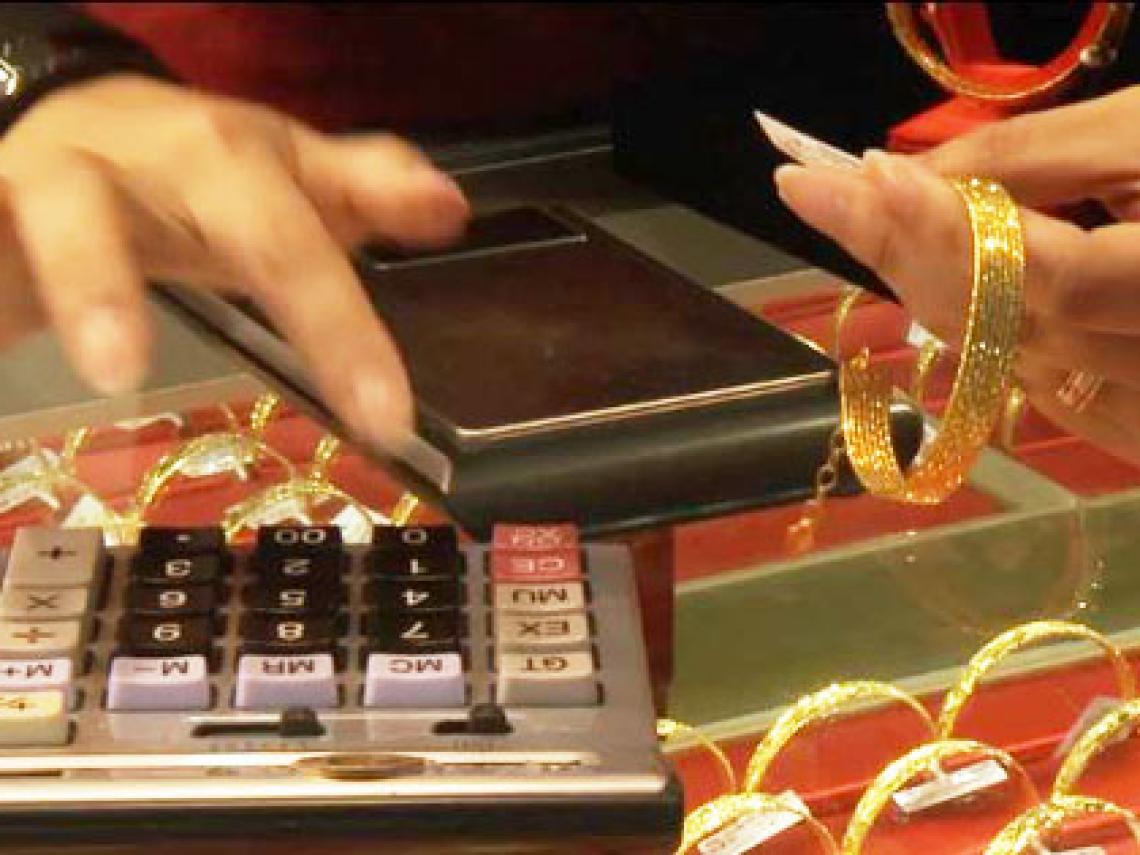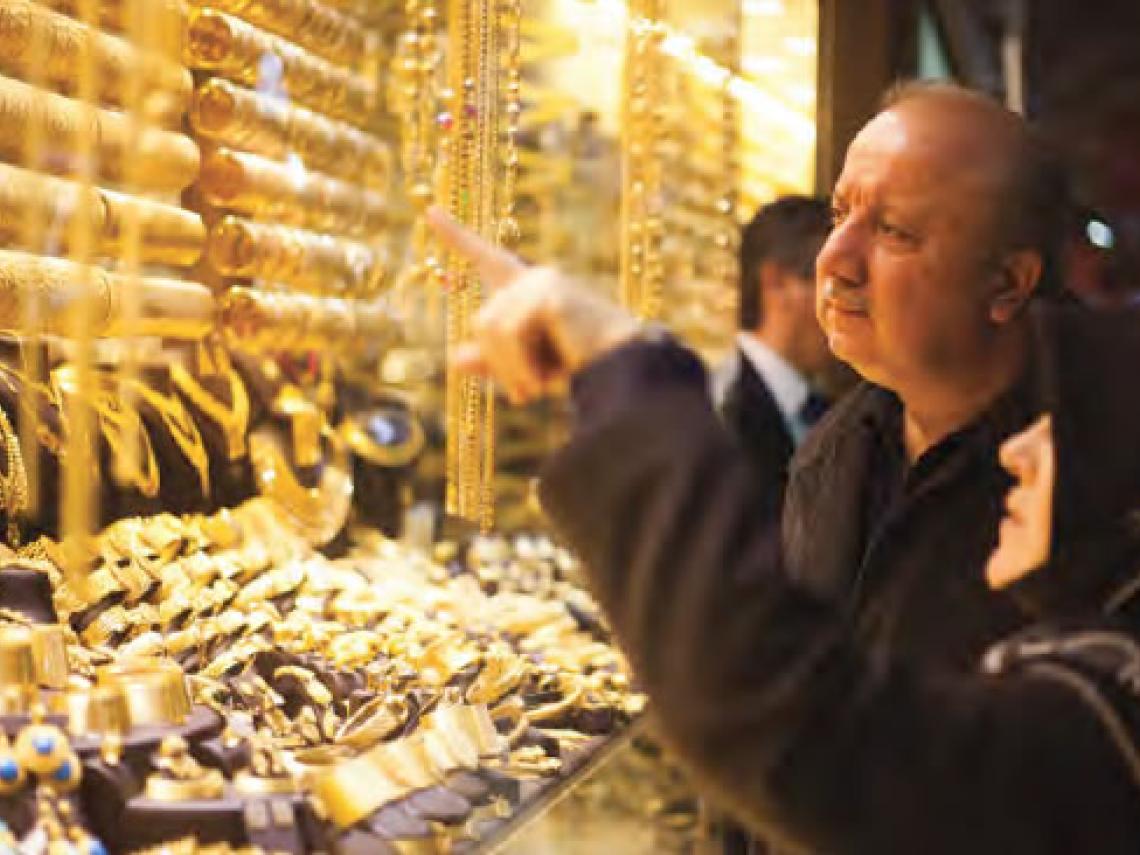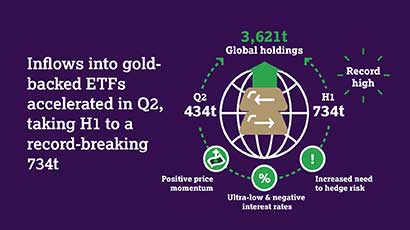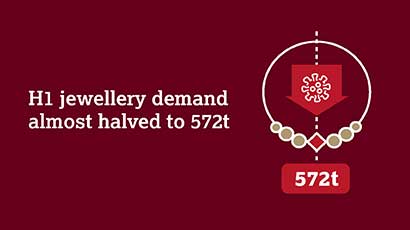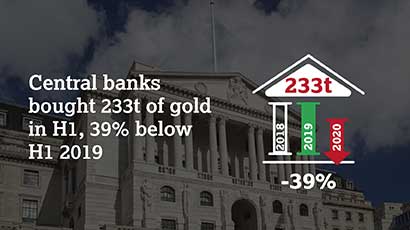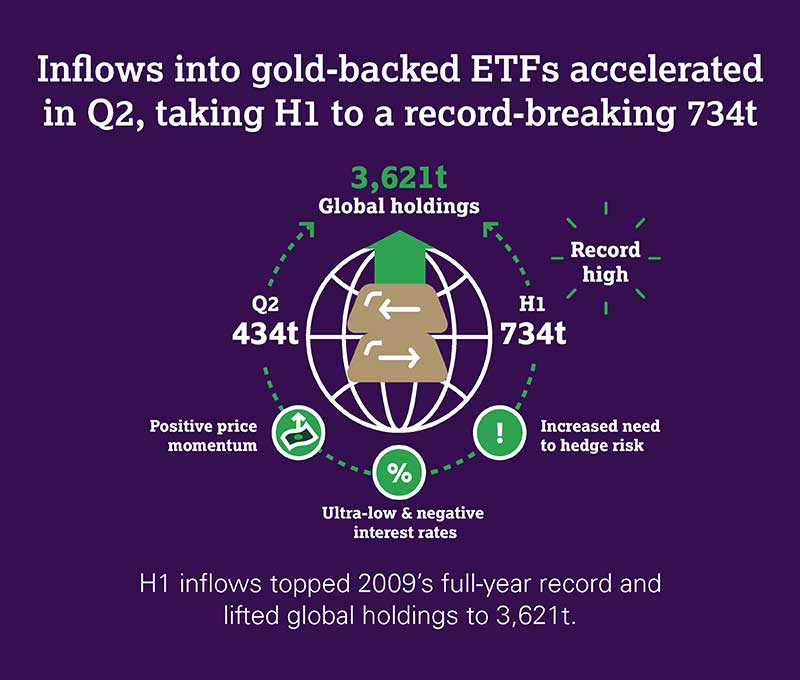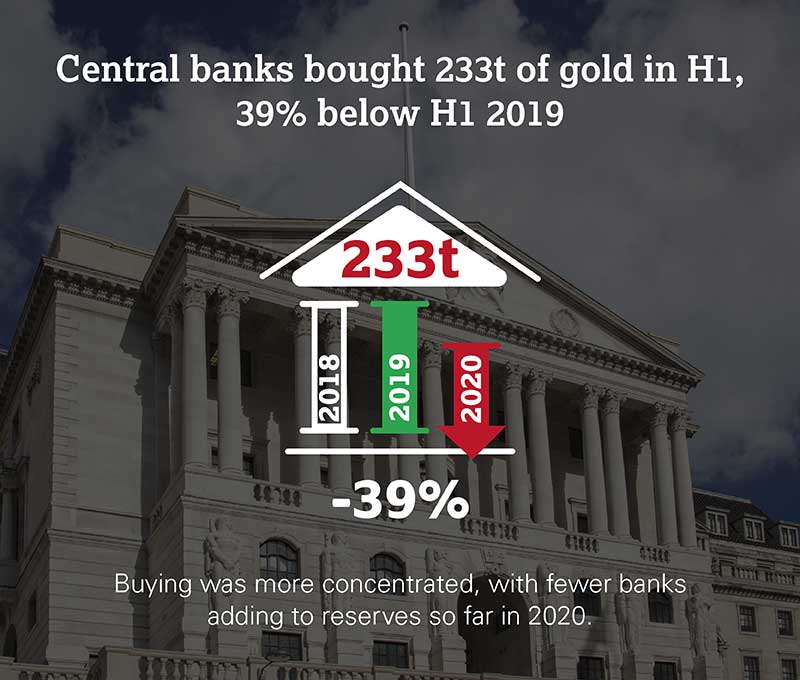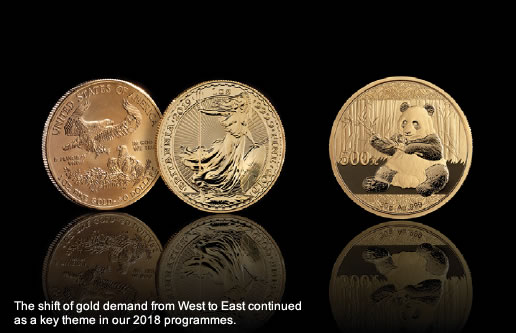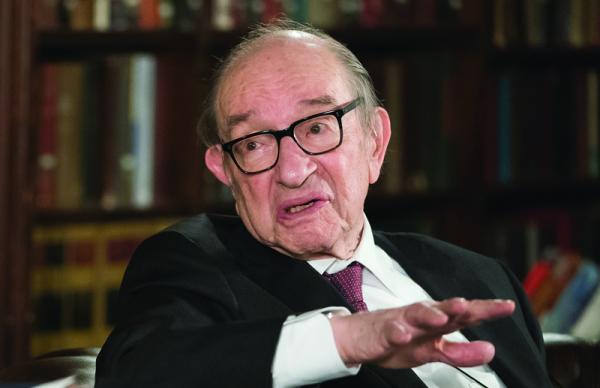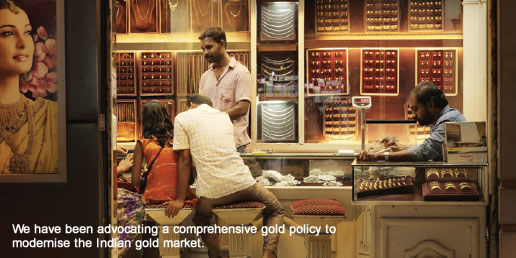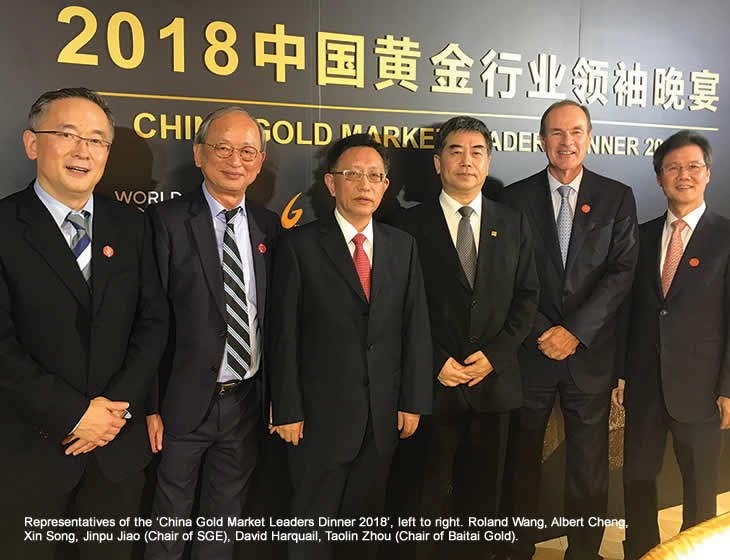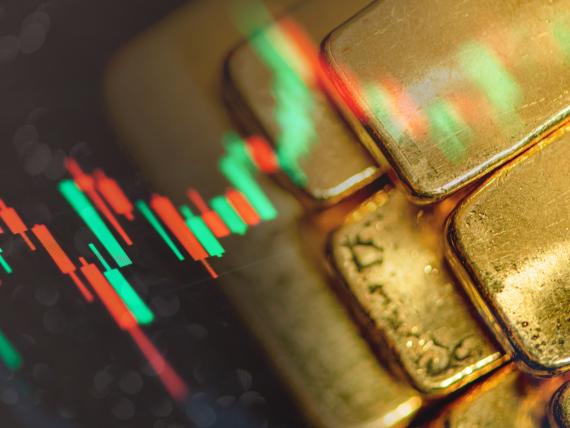World gold council
World gold council
What We Do
Supporting a vibrant and sustainable future for the gold market.
The World Gold Council was formed in 1987 by some of the world’s most forward-thinking mining companies.
There are three core pillars to our mission in serving the gold market and its participants. Learn more about our work in each of the following areas:
Improving Understanding
The comprehensive source of information on gold and its impact on society
Gold plays an important role in the financial system, healthcare, technology, and culture. We are keenly focused on increasing awareness of how gold is adapting to help navigate emerging challenges and changing societal needs.
The information and tools we provide help institutional and retail investors leverage gold as a strategic asset across a range of economic and geopolitical conditions.
Available in both English and Chinese, our website is the definitive source of gold data, insights, and analytical tools for professional investors.
This closed-door event convenes central banks, sovereign wealth funds, and government ministries for an intimate discussion on the key facets of gold reserve management and trends impacting official sector investments.
Beyond providing information for investors, we also create compelling content capturing the scope and depth of gold and the gold mining industry’s contributions to society.
This immersive, five-episode documentary series showcases gold’s impact on humanity’s past, present, and future. This is the story of gold: engineering super-material, biological instrument, symbolic creative medium, and economic pillar.
Our in-depth report explores the positive economic and social impact of gold mining in regions of operation around the globe.
Improving Access
Championing Industry Innovation
Discover how we drive positive change with a combination of new technologies, data, and partnerships with progressive organisations.
In partnership with State Street Global Advisors, the World Gold Council launched SPDR® Gold Shares (GLD) in 2004, providing a new, efficient way to invest in gold. Since then, more than 90 gold-backed ETFs have been launched around the world — including SPDR® Gold Mini Shares (GLDM SM ), the low-cost complement to GLD.
SafeGold
Supported by World Gold Council seed funding, this initiative catalysed the “digital gold” category in India — providing investors in the region with affordable and convenient access to gold.
The Insurance Asset Management Fund (IAMF)
Jointly designed by the World Gold Council and PICC Asset Management, the IAMF is the first-ever gold-driven fund of its kind in China. Launched in 2021, the IAMF opened a new chapter for multi-asset portfolios in the region.
Facilitating Greater Market Efficiency
Conceived in collaboration with policymakers, regulators, and industry experts, the following are examples of large-scale infrastructure projects intended to tackle investment barriers and unlock opportunities.
The Shanghai Gold Exchange
The World Gold Council played a key role in the evolution of China gold market with Shanghai Gold Exchange — now the world’s largest physical gold exchange.
The India Gold Spot Exchange
Launching in 2022, the gold spot exchange enables greater transparency and liquidity for the country’s gold market. The initiative was outlined in our Blueprint for Gold Spot Exchange report, developed along with key industry stakeholders in the region.
Improving Trust
Creators of Best Practices and Stewards of Industry Standards
Trust is earned when words and actions meet. In conjunction with our members and other market participants, we build confidence in the gold market by creating and upholding standards for transparency and integrity across the gold value chain.
The World Gold Council has partnered with the LBMA to develop and implement an international system of gold bar integrity. Participants from across the gold industry are piloting distributed ledger (blockchain) technology with the aim of expanding the trusted, closed-loop ecosystem which currently exists for the 400oz gold bar market to also include smaller bars, including kilo bars.
This framework, developed in consultation with industry stakeholders, sets out clear expectations for what constitutes responsible gold mining, considering environmental, social, and governance risks that need to be effectively managed.
We aim to create value and drive demand across the retail industry by introducing principles that raise the bar for gold product providers and encourage a greater level of trust among retail investors.
We provide gold producers with a common approach for assessing the way they extract their gold and assuring that they do not support or benefit from unlawful armed conflict or contribute to human rights abuses and breaches of international humanitarian law.
Strongly supported by the World Gold Council — coupled with the launch of the assaying training institute — hallmarking of gold jewellery became mandatory in India in 2021.
For more information on these initiatives and other work related to best practices, visit our dedicated Industry Standards page.
Read our latest press releases to learn more about recent activities.
World gold council
Discover the data you need to analyse and research gold. Utilise multiple charting tools and download options which allow you to work with the data.
Most Recently Updated
Gold ETFs holdings and flows
Central bank holdings
Annual central bank survey
Historical demand and supply
Gold spot prices
Returns
Price and premium
Benchmark gold prices, gold futures curves and local price premium/discount
Gold spot prices
A long-term time series of the gold price in a range of currencies from 1978.
Local gold price premium/discount
A time series of the difference between international US$ gold price and the local gold price paid by Indian and Chinese consumers in their respective markets.
Gold futures prices
Futures prices for gold across several key exchanges and future dates.
Performance metrics
Returns, volatility, correlations and trading volumes for gold, bonds, equities and other major asset classes
Returns
This data set provides monthly performance metrics for gold and various relevant asset classes in multiple currencies.
Volatility
LBMA Gold price volatility: Annualised daily return volatility based on LBMA gold price.
Correlations
A cross-sectional look at the correlation of gold to other major asset classes.
Trading volume
Overview/ aggregation of gold trading volumes across trading venues.
Demand and supply
Data on various sectors of gold demand and supply, as well as productions costs and futures market positioning
Historical demand and supply
A comprehensive time series of gold demand – broken down by sector and country – and gold supply – broken down by mine production, recycling and producer hedging.
Gold ETFs holdings and flows
Gold-backed ETFs and similar products account for a significant part of the gold market, with institutional and individual investors using them to implement many of their investment strategies.
Global mine production
A time series of global gold mine production by country.
Production costs
A time series of the global all-in sustaining cost (AISC) of gold production and cost curve for the most recent quarter.
Futures positioning
Current futures open interest on the nine major global gold futures exchanges.
Above-ground stocks
A breakdown of the above-ground stock of gold, including a time series of how it has evolved since 2010, and the latest year-end estimate of below-ground stocks.
Central banks
Data on central bank gold holdings, sales and purchases, as well as insights from annual surveys into central bank attitudes towards gold.
Central bank holdings
A time series of official holdings of gold including an attribution of sales under the Central Bank Gold Agreement (CBGA).
Annual central bank survey
Gold continues to be viewed favourably by central banks as a reserve asset. According to the 2022 Central Bank Gold Reserves (CBGR) survey, 25% of respondents intend to increase their gold reserves in the next twelve months, an uptick from 21% of respondents in 2021.
Press Releases
An SRO for India’s gold industry
India’s gold industry has evolved and matured over recent years. Initiatives have been taken to create greater cohesion and consistency, improve compliance and foster confidence. That is why the time is right to establish a self-regulatory organisation (SRO) for India’s gold industry.
Gold demand defies Q2 headwinds with year-on-year recovery in first half of 2022
The World Gold Council’s latest Gold Demand Trends report reveals that gold demand (excluding OTC) in the second quarter was down 8% year-on-year to 948t. However, thanks to strong ETF inflows in Q1, gold demand for the first half of 2022 is up 12% compared to H1 2021 at 2,189t.
The World Gold Council welcomes Triple Flag Precious Metals as a new member
Triple Flag is a pure play, gold-focused, streaming and royalty company with proven execution capabilities and a focus on cash-generating mines and construction-ready, fully permitted projects.
aXedras Group AG Completes Series B Funding with Investment from The World Gold Council
aXedras Group AG (aXedras) announces it has concluded its Series B funding round, including a strategic investment from the World Gold Council (WGC) who will be represented on the Board of Directors by David Tait, CEO of WGC.
Gold remains resilient amid heightened global uncertainty
The global gold market saw a solid start to 2022, with first quarter demand (excluding OTC) up 34% year-on-year, thanks to strong ETF flows, reflecting gold’s status as a safe haven investment during times of geopolitical and economic uncertainty.
Gold Bar Integrity Programme
The London Bullion Market Association (LBMA) and the World Gold Council (WGC) are collaborating to develop and implement an international system of gold bar integrity, chain of custody and provenance.
ASGM report 2022 Press Release
In line with its commitment to promote formalisation of responsible artisanal and small-scale gold mining (ASGM), the World Gold Council has released a new report which looks at models for better managing the interactions between ASGM and large-scale mining (LSM).
Gold demand hits highest level in more than two years
The World Gold Council’s latest Gold Demand Trends Report revealed that annual demand (excluding OTC markets) has recovered many of the COVID-induced losses from 2020 to reach 4,021t for the full year in 2021.
28 January, 2022
Imports made up 86% of India’s gold supply between 2016-2020, continue to grow despite high import duty, highlights World Gold Council Report
The World Gold Council today launched a report titled ‘Bullion Trade in India’, as part of a series of in-depth analysis on the Indian gold market.
9 December, 2021
A new report by the World Gold Council highlights the role of its members, many of the world’s most forward-thinking gold mining companies, in contributing to socio-economic development in the countries and communities where they operate.
World Gold Council Governance
The World Gold Council is governed by our Board of Directors, comprised of member company representatives (Chairperson or Chief Executive Officer) and the World Gold Council’s Chief Executive Officer. The Board has a fiduciary responsibility to all Members in ensuring that the World Gold Council fulfills its mission and objectives.
The Board has established four committees; Administration, Audit,, Compensation and Governance and Nominations. For more information on their respective responsibilities, please see below.
The Administration Committee’s role is to advise the Board on business and financial plans developed by World Gold Council’s management as well as setting and assessing performance objectives. The committee is led by the Chair of the World Gold Council and includes the Vice Chair of World Gold Council and Chairs of the Audit, Compensation and Governance & Nomination Committees.
The Audit Committee assists the Board with responsibilities around financial reporting, systems and controls and processes for identifying, measuring and managing risk.
The Compensation Committee oversees compensation frameworks for World Gold Council employees. No employee plays a part in any discussion about their own remuneration.
The Nominations & Governance Committee is responsible for ensuring that Board governance processes are adhered to and spearheads the nomination process for selecting the Board Chair and Committee members.
Chairs of Board Committees
Randy Smallwood, President and CEO, Wheaton Precious Metals Corp.
Board Chair and Chair, Administration Committee
Sandeep Biswas, CEO, Newcrest Mining
Neal Froneman, CEO, Sibanye Stillwater
Chair, Nominations & Governance Committee
Scott Perry, President & CEO, Centerra Gold Inc.
Chair, Audit Committee
Tom Palmer, President & CEO, Newmont Corporation
Chair, Compensation Committee
For a full list of member companies, click here.
Additionally, the World Gold Council, through its US subsidiaries, operates as the sponsor of gold-backed ETF products including GLD®[1]. Each subsidiary company has its own Board of Directors, comprised of the Chief Executive Officer of the World Gold Council and three independent directors These Boards oversee the legal and regulatory responsibilities of the products.
Gold Mid-Year Outlook 2022
Balancing inflation, rate hikes and political uncertainty
Investors face a challenging environment during the second half of 2022, needing to navigate rising interest rates, high inflation and resurfacing geopolitical risks. In the near term, gold will likely remain reactive to real rates, driven by the speed at which global central banks tighten monetary policy in an effort to control inflation. Yet, in our view:
rate hikes may create headwinds for gold, but many of these hawkish policy expectations are priced in
concurrently, continued inflation and geopolitical risks will likely sustain demand for gold as a hedge
underperformance of stocks and bonds in a potential stagflationary environment may also be positive for gold.
Higher rates in 2022 outweighed inflation risks
Gold finished H1 0.6% higher, closing at US$1,817/oz. 1 The gold price initially rallied as the Ukraine war unfolded and investors sought high quality, liquid hedges amidst increased geopolitical uncertainty. But gold gave back some of those early gains as investors shifted their focus to monetary policy and higher bond yields. By mid-May, the gold price had stabilised in response to the tug of war between rising interest rates and a high-risk environment. The latter was a combination of persistently high inflation as well as likely support also from the extended conflict in Ukraine and its potential knock-off effects on global growth.
This was also reflected in both COMEX net long positioning and gold ETF flows. The latter saw strong investment early in the year before giving back some gains in May and June. Yet, by the end of June, gold ETFs had amassed US$15.3bn (242 tonnes) of inflows year-to-date.
Our Gold Return Attribution Model (GRAM) corroborates this. Rising opportunity costs – both from higher rates and a stronger dollar – were key headwinds to gold’s performance y-t-d, while rising risks – from inflation as well as geopolitics – pushed gold higher for much of the period (Chart 1).
Chart 1: Rates and inflation were two of the most important contributors to gold’s performance in 2022
Rates and inflation were two of the most important contributors to gold’s performance in 2022
Contributions from key drivers to monthly gold returns*
Sources: Bloomberg, ICE Benchmark Administration, World Gold Council; Disclaimer
*As of 30 June 2022. Our short-term model is a multiple regression model of monthly gold price returns (based on XAU), which we group into the four key thematic driver categories of gold’s performance: economic expansion, market risk, opportunity cost, and momentum. These themes capture motives behind gold demand; most saliently, investment demand, which is considered the marginal driver of gold price returns in the short run. ‘Unexplained’ represents the percentage change in the gold price that is not explained by factors currently included in the model. Results shown here are based on analysis covering an estimation period from February 2007 to June 2022. On Goldhub, see: GRAM.
We believe that the geopolitical risk premium is also represented in the larger than normal ‘unexplained’ element of our GRAM model in recent months, which has made a strong positive contribution to gold’s price performance in tandem with the prolonged Russia-Ukraine war. For example, an often-used simple model based solely on US real rates and the dollar suggests that gold would normally be significantly lower, contrasting with its actual marginally positive performance (Chart 2).
Chart 2: Gold was supported by heightened risk: real rates and the USD alone suggest gold would have been be lower in H1
Gold was supported by heightened risk: real rates and the USD alone suggest gold would be lower
Simple model of gold price explained using US 10-year TIP yield and Broad US dollar index*
Sources: Bloomberg, World Gold Council; Disclaimer
*As of 30 June 2022. Model estimated using OLS, in levels, using data from Jan 2007 to June 2022.
Notably, even though the appreciation of the US dollar against a wide variety of currencies has been a headwind to the gold price (when measured in US-dollar terms), it has at the same time propped up gold’s performance in many other currencies, including the euro, yen and pound sterling, among others (Table 1).
Table 1: Gold’s price performance was positive across major currencies
Gold price and annual return in key currencies*
| USD (oz) | EUR (oz) | JPY (g) | GBP (oz) | CAD (oz) | CHF (oz) | INR (10g) | RMB (g) | TRY (oz) | RUB (g) | ZAR (g) | AUD (oz) | |
|---|---|---|---|---|---|---|---|---|---|---|---|---|
| H1 2022 return | 0.6% | 9.4% | 18.7% | 12.2% | 2.8% | 5.7% | 6.9% | 5.7% | 26.5% | -26.6% | 3.3% | 6.4% |
| 30 June price | 1,817.0 | 1,738.0 | 7,936.4 | 1,496.2 | 2,343.8 | 1,739.5 | 46,134.0 | 391.1 | 30,337.5 | 3,198.4 | 957.0 | 2,642.3 |
| H1 high | 2,039.1 | 1,874.6 | 8,135.2 | 1,555.3 | 2,623.8 | 1,894.3 | 50,417.4 | 413.9 | 31,989.3 | 9,648.9 | 1,003.3 | 2,806.9 |
| H1 low | 1,788.2 | 1,570.1 | 6,621.7 | 1,317.1 | 2,271.8 | 1,645.4 | 42,708.4 | 365.9 | 23,543.8 | 3,124.0 | 880.1 | 2,493.6 |
*As of 30 June 2022. Based on the LBMA Gold Price PM in local currencies: US dollar (USD), euro (EUR), Japanese yen (JPY), pound sterling (GBP), Canadian dollar (CAD), Swiss franc (CHF), Indian rupee (INR), Chinese yuan (RMB), Turkish lira (TRY), Russian rouble (RUB), South African rand (ZAR), and Australian dollar (AUD).
Source: Bloomberg, ICE Benchmark Administration, World Gold Council
Further, at first glance, gold’s flat year-to-date performance may seem dull, but gold was nonetheless one of the best performing assets during H1. It not only delivered positive returns, but it did so with below average volatility (Chart 3).
As such, gold has actively helped investors mitigate losses during this volatile period. Especially considering that both equities and bonds, which usually make up the largest portion of investors’ portfolios, posted negative returns during the period.
Chart 3: Gold has held up well so far in 2022
Gold has held up well so far in 2022
Year-to-date nominal asset returns and annualised volatilities in USD*
Sources: Bloomberg, World Gold Council; Disclaimer
Looking ahead: investors walking a tightrope
We believe that investors will continue to face significant challenges during the second half of the year. As such, they will need to balance several competing risks compounded by a fair degree of uncertainty about their magnitude.
Monetary policy uncertainty will likely ramp up volatility
Most central banks were expected to lift policy rates this year, but many have stepped up their actions in response to persistently high inflation. 2 The Fed hiked its funding rate by 1.5% so far this year, the Bank of England has increased its base rate five times since November 2021, to 1.25%, and the Swiss National Bank hiked rates for the first time in 15 years. And although the ECB hasn’t yet raised rates, it has indicated it is prepared to do so. Among developing economies, the Royal Bank of India is also expected to considerably increase its repo rate by the end of the year.
These actions have had a significant impact on financial markets, including gold. Indeed, data suggests that investor expectations of future monetary policy decisions – expressed through bond yields – have historically been a key influence on gold price performance. And as we discussed in our Gold Outlook 2022, historical analysis shows that gold has underperformed in the months leading up to a Fed tightening cycle, only to significantly outperform in the months following the first rate hike (Chart 4). Contrastingly, US equities had their strongest performance ahead of a tightening cycle but delivered softer returns thereafter.
Chart 4: Gold has typically outperformed following the first rate hike of a Fed tightening cycle
Gold has typically outperformed following the first rate hike of a Fed tightening cycle
Median return of gold, US stocks, and the US dollar over the past four Fed tightening cycles*
Sources: Bloomberg, ICE Benchmark Administration, World Gold Council; Disclaimer
*Median returns based on the past four tightening cycles starting in February 1994, June 1999, June 2004, and December 2015. US dollar performance based on the Fed trade-weighted dollar index prior to 1997 and the DXY index thereafter, due to data availability.
It’s also worth noting that, while most market participants still expect significant policy rate increases, some analysts argue that central banks may not tighten monetary policy as much as expected. Their reasons include potential economic slowdowns that may result in contractions, but also in some cases a switch from supply constraints to supply surpluses in non-commodity consumer sectors.
Inflation may linger even if it peaks
Inflation remains at historically high levels, and while investors expect inflation to cool down eventually, we believe it will remain high.
In particular, due to:
Gold has historically performed well amid high inflation. In years when inflation was higher than 3%, gold’s price increased 14% on average, and in periods where US CPI averaged over 5% on a y-o-y basis – currently at
Chart 5: Gold historically performs well in periods of high inflation
Gold historically performs well in periods of high inflation
Gold and commodity nominal returns in US dollars as a function of annual inflation*
Sources: Bloomberg, ICE Benchmark Administration, World Gold Council; Disclaimer
*Based on y-o-y changes of the LBMA Gold Price, Bloomberg Commodity Index and US CPI between 1971 and 30 June 2022. Number of observations for each tranche: Low = 12, Moderate = 27, High = 12. The buckets were determined based on a 2% Fed target rating, a recent CPI number above 5% and a proportional amount of observations in each tranche.
Amid opposing forces, real rates will likely remain low
Despite forthcoming rate hikes by various central banks, nominal rates will remain low from a historical perspective (Chart 6). This is important for gold since gold’s short- and medium-term performance often tends to respond to real rates, which combine two important drivers of gold performance: “opportunity cost” and “risk and uncertainty”.
Chart 6: Both nominal and real interest rates are at or near historically low levels
Both nominal and real interest rates are at or near historically low levels
US 10-year Treasury nominal and real yield*
Sources: Bloomberg, Bureau of Labour Statistics, World Gold Council; Disclaimer
*As of 30 June 2022. Real yield computed using US 10-year Treasury nominal yield minus seasonally adjusted US CPI y-o-y change.
Investors are facing difficult choices in terms of asset allocation
Further stock market pullbacks are likely in the face of faltering economic growth combined with persistent high inflation against a backdrop of simmering geopolitical tensions. Similarly, the risk of a stagflationary environment has increased materially. And our analysis shows that while gold has tend to lag during reflationary periods, it still has performed well and it has also significantly outperformed in stagflationary periods (Chart 7).
Chart 7: Major asset returns per cycle phase since 1973: gold a clear winner in stagflation
Major asset returns per cycle phase since 1973: gold a clear winner in stagflation
AAAR % for major asset classes since Q1 1973*
Sources: Bloomberg, World Gold Council; Disclaimer
* As of Q2 2021. AAAR % – annualised average (stagflation) adjusted returns. Please see Appendix A.2 for AAAR definition.
Further, questions remain on the ability of bonds to provide the diversification that investors need. High-quality government bonds have been a favoured safe-haven asset over the last 20 years because of low inflation and interest rates. But higher inflation weakens the appeal of government bonds as a diversifier, increasing both yields and the correlation to stocks.
At the same time inflation-linked bonds, designed to track CPI, may not provide investors with the refuge they need. Since the start of the year inflation-linked bonds have fallen despite the rapid rise in CPI levels. The Bloomberg Global Inflation-linked Bond Index has declined 18% year-to-date (Chart 8).
Chart 8: Inflation-linked bonds have unperformed y-t-d as rate increases have curtailed inflation-contributed gains
Inflation-linked bonds have unperformed y-t-d as rate increases have curtailed inflation-contributed gains
Bloomberg Global Inflation-Linked Total Return Index Value Unhedged USD*
Sources: Bloomberg, World Gold Council; Disclaimer
*As of 30 June 2022.
Consumer demand will likely face hurdles
The challenging environment also has implications for consumer demand for gold over the rest of the year. While many markets should continue to benefit from the post-COVID recovery, we expect widespread economic slowdown to pressure consumer demand for gold, particularly with many markets seeing notably higher local gold prices.
China is especially susceptible to weakness as the government pursues its zero-COVID policy, with possible mobility restrictions which cast a shadow over future growth.
Indian demand is also facing challenges, although to a lesser degree than those in China. High local inflation, uncertainty about the economic outlook and the surprise increase of the import duty for gold – aimed in part to mitigate the impacts of rupee weakness – will likely weigh on the recovery of gold consumer demand.
Gold’s behaviour will depend on which factors tip the scale
We believe that gold will face two key headwinds during the second half of 2022:
However, the negative effect from these two drivers may be offset by other, more supportive factors, including:
In this context, gold’s both strategic and tactical role will likely remain relevant to investors, particularly while uncertainty stays elevated.
Download the Gold Mid-Year Outlook for 2022
Footnotes
1 Based on the LBMA Gold Price PM as of 30 June 2022.
2 In contrast, the Bank of Japan has maintained its accommodative stance despite increased pressure on the yen, and the PBoC has cut lending rates to provide support for the economic recovery on the back of COVID-led lockdowns in major cities.
4 Qaurum is a web-based quantitative tool powered by the Gold Valuation Framework (GVF). An academically validated methodology, GVF is based on the principle that the price of gold and its performance can be explained by the interaction of demand and supply. In turn, demand and supply are influenced by macroeconomic scenarios that can be customised to calculate gold’s implied performance based on these hypothetical conditions over various time periods. See Important information and disclosures at the end of this report.
Important information and disclosures
© 2022 World Gold Council. All rights reserved. World Gold Council and the Circle device are trademarks of the World Gold Council or its affiliates.
All references to LBMA Gold Price are used with the permission of ICE Benchmark Administration Limited and have been provided for informational purposes only. ICE Benchmark Administration Limited accepts no liability or responsibility for the accuracy of the prices or the underlying product to which the prices may be referenced. Other content is the intellectual property of the respective third party and all rights are reserved to them.
Reproduction or redistribution of any of this information is expressly prohibited without the prior written consent of World Gold Council or the appropriate copyright owners, except as specifically provided below. Information and statistics are copyright © and/or other intellectual property of the World Gold Council or its affiliates (collectively, “WGC”) or third-party providers identified herein. All rights of the respective owners are reserved.
The use of the statistics in this information is permitted for the purposes of review and commentary (including media commentary) in line with fair industry practice, subject to the following two pre-conditions: (i) only limited extracts of data or analysis be used; and (ii) any and all use of these statistics is accompanied by a citation to World Gold Council and, where appropriate, to Metals Focus, Refinitiv GFMS or other identified copyright owners as their source. World Gold Council is affiliated with Metals Focus.
WGC does not guarantee the accuracy or completeness of any information nor accepts responsibility for any losses or damages arising directly or indirectly from the use of this information.
This information is for educational purposes only and by receiving this information, you agree with its intended purpose. Nothing contained herein is intended to constitute a recommendation, investment advice, or offer for the purchase or sale of gold, any gold-related products or services or any other products, services, securities or financial instruments (collectively, “Services”).
This information does not take into account any investment objectives, financial situation or particular needs of any particular person.
Diversification does not guarantee any investment returns and does not eliminate the risk of loss. Past performance is not necessarily indicative of future results. The resulting performance of any investment outcomes that can be generated through allocation to gold are hypothetical in nature, may not reflect actual investment results and are not guarantees of future results. WGC does not guarantee or warranty any calculations and models used in any hypothetical portfolios or any outcomes resulting from any such use. Investors should discuss their individual circumstances with their appropriate investment professionals before making any decision regarding any Services or investments.
This information may contain forward-looking statements, such as statements which use the words “believes”, “expects”, “may”, or “suggests”, or similar terminology, which are based on current expectations and are subject to change. Forward-looking statements involve a number of risks and uncertainties. There can be no assurance that any forward-looking statements will be achieved. WGC assumes no responsibility for updating any forward-looking statements.
Information regarding Qaurum SM and the Gold Valuation Framework
Note that the resulting performance of various investment outcomes that can be generated through use of Qaurum, the Gold Valuation Framework and other information are hypothetical in nature, may not reflect actual investment results and are not guarantees of future results. Neither WGC nor Oxford Economics provides any warranty or guarantee regarding the functionality of the tool, including without limitation any projections, estimates or calculations.
Our History
Our history timeline
2007-2017 Open/Close timeline
Launched LMEprecious reinvigorating the London gold market
Launched the SPDR® Long Dollar Gold Trust ETF (GLDW)
Collaborated with the Shanghai Gold Exchange on the launch of the Shanghai Gold Benchmark
Executive Programme in Reserve Asset Management at University of Cambridge Judge Business School
Announced partnership with Shanghai Gold Exchange to develop the Shanghai Free Trade Zone
Launch Singapore Gold Kilobar Contract in collaboration with the Singapore Exchange
Convened cross-industry workshops on the modernisation of the London Gold Fix
Launched LoveGold jewellery marketing in the digital age
Launched Gold for Health film and campaign on World Malaria Day
Published first series of reports detailing gold’s socio-economic contribution
Launched first Chinese gold investment gifting bar with Industrial and Commercial Bank of China
Announced investment in online gold platform BullionVault
Announced strategic partnership with Industrial and Commercial Bank of China to further develop China’s gold market
Announced India Post gold coin scheme
Launched Gold Expressions in Japan and Russia
Launched Only Gold jewellery marketing campaign in US, China and Italy
Launched coin programme with Dubai Multi Commodities Centre in Dubai
Launched the Reliance pure gold coin in India
1997-2006 Open/Close timeline
Launched Gold Investment Bars in China
Launched Gold Accumulation Plan in Vietnam
Launched Utilise Gold online platform to encourage wider usage of gold as a technical material
Launched Gold Pension and Inheritance initiative in Japan
Launched Gold Expressions Italian Jewellery collection
Sponsored prototypes demonstrating gold as a catalyst and anti-pollutant
Launched Gold Bullion Securities ETF in London
Trading commenced on the Shanghai Gold Exchange
James Burton appointed as CEO
Publication of Deregulation of gold in India
Establishment of the China Gold Association
Abolition of China’s retail price controls
Joint publication, with China’s State Development Research Centre, of Opening China’s gold market in a new era: Related policy research and suggestions, proposing liberalisation of the country’s gold market
World Gold Council Members
The World Gold Council’s 32 Members are some of the world’s most forward-thinking gold mining companies. They are headquartered across the world and have mining operations in over 45 countries.
Our Members share our vision of ensuring a sustainable gold mining industry, based on a deep understanding of gold’s role in society, now and in the future.
We support our Members in many of their endeavours to ensure modern gold mining is demonstrating their commitment to responsible and sustainable business practices, and high standards of environmental, social and governance performance. We also support their place in a vibrant and sustainable gold supply chain by stimulating demand in new and existing markets through research, insight and partnerships with leaders in investment, jewellery, industry and academia. We work across the entire supply chain, from sustainable and responsible gold mining through to the consumer marketplace.
World Gold Council Member Operations
Members mining map
Data as of 10 June, 2020
Note: Some assets of WGC Member streaming and royalty companies may not be included; China mine/project details are not comprehensive. ‘Other’ productive mines are those owned by companies that are not members of the World Gold Council.
Agnico-Eagle Mines Limited
Agnico-Eagle Mines operates mines and exploration activities in Canada, Finland, Mexico and the United States. Listed on the Toronto and New York Stock Exchanges, Agnico-Eagle’s 2016 production was almost 1.6m ounces.
Alamos Gold Inc.
Alamos Gold operates mines and exploration activities in Canada, Mexico, Turkey and the US. Listed on the Toronto and New York Stock Exchanges, the company was formed from the merger of Alamos Gold and AuRico Gold in 2015. Annual production totalled 392,000 ounces in 2016.
AngloGold Ashanti
Headquarters: South Africa
AngloGold Ashanti is the third largest mining company in the world, with 17 gold mines in nine different countries and exploration programmes across the globe. Quoted on the Johannesburg, Australian and New York Stock Exchanges, AngloGold Ashanti produced more than 3.6m ounces of gold in 2016.
Aura Minerals
Aura is a gold and copper production company focused on the development and operation in the Americas with operations in Brazil, Honduras, Mexico and USA and projects in Brazil and Colombia. Aura Combines fast growth with robust dividend policy and aims to be one of the most trusted, responsible, well respected and results driven mining companies.
B2Gold
B2Gold is a low-cost international senior gold producer headquartered in Vancouver, Canada. Founded in 2007, today, B2Gold has three operating gold mines and numerous development and exploration projects in various countries including Mali, the Philippines, Namibia, Colombia, Finland and Uzbekistan.
Barrick Gold Corporation
Barrick is the largest gold mining company in the world, with a portfolio of 27 operating mines and with advanced exploration and development projects across the globe. Listed on the Toronto and New York Stock Exchanges, Barrick’s annual production totalled more than 5.5m ounces in 2016.
Compania de Minas Buenaventura S.A.A.
Compania de Minas Buenaventura is the largest, publicly traded precious metals company in Peru. Engaged in the processing, development and exploration of gold, Buenaventura is quoted on the Lima and New York Stock Exchanges. Directly and through minority stakes, Buenaventura’s annual production was more than 627,000 ounces in 2016.
Calibre Mining Corp
Calibre Mining is a Canadian-listed gold mining and exploration company with two 100%-owned operating gold mines in Nicaragua. The Company is focused on sustainable operating performance and a disciplined approach to growth.
Centerra Gold Inc.
Centerra is a gold mining and exploration company engaged in the operation, exploration, development and acquisition of gold properties in Kyrgyz Republic, Mongolia, Turkey and several other markets across the world. Quoted on the Toronto Stock Exchange, Centerra produced almost 600,000 ounces of gold in 2016.
中国黄金集团公司
China National Gold Corporation (China Gold) is the largest producer of gold in China. Involved in exploration, development and production, China Gold also refines and processes gold, including the manufacture of gold bars for investment. China Gold’s president Song Xin, also chairs the China Gold Association.
Eldorado Gold Corporation
Eldorado Gold is engaged in operating mines and development and exploration programmes in Brazil, China, Greece, Romania and Turkey. Quoted on the Toronto and New York Stock Exchanges, Eldorado produced more than 485,000 ounces of gold in 2016.
Endeavour Mining Corporation
Equinox Gold
Equinox Gold is growth-focused gold producer that operates entirely in the Americas, with a portfolio of producing mines and expansion projects in the United States, Mexico and Brazil.
Franco-Nevada Corporation
Franco-Nevada Corporation is a gold-focused royalty company with additional interests in platinum metals, oil and gas and other assets. Quoted on the Toronto and New York Stock Exchanges, Franco-Nevada has one of the largest and most diversified portfolios of cash-flow producing assets in the royalty sector.
Gold Fields Limited
Gold Fields Limited is a globally diversified gold producer with nine operating mines and one project in Australia, Chile, Ghana (including our Asanko Joint Venture), Peru and South Africa, with total attributable annual gold-equivalent production of 2.24Moz. It has attributable gold-equivalent Mineral Reserves of 52.1Moz and gold Mineral Resources of 116.0Moz. Gold Fields has a primary listing on the Johannesburg Stock Exchange and an additional listing on the New York Stock Exchange.
Hummingbird Resources
Hummingbird Resources engages in the exploration, evaluation and development of mineral properties in West Africa with a primary focus on gold. Founded in 2005, Hummingbird listed on the London Stock Exchange in 2010. The company currently has two operations, Yanfolila, a high grade, producing mine in south west Mali; and Dugbe, a large undeveloped gold deposit in Liberia.
IAMGOLD
Headquarters: Canada
IAMGOLD has four operational gold mines in North and South America and West Africa. It is also involved in development and exploration and seeks to grow through acquisition. Listed on the Toronto and New York Stock Exchanges, IAMGOLD produced more than 810,000 ounces of gold in 2016.
Kinross Gold Corporation
Kinross Gold is a gold mining company with mines and projects in Brazil, Canada, Chile, Ecuador, Ghana, Mauritania, Russia and the US. Quoted on the Toronto and New York Stock Exchanges, the company employs approximately 8,000 people worldwide and produced more than 2.7m ounces of gold in 2016.
Newcrest
Headquarters: Australia
Newcrest is one of the world’s largest gold mining companies. Headquartered in Melbourne, Australia, Newcrest owns and operates a portfolio of mines in Australia, Canada, and Papua New Guinea. Newcrest is listed on the Australian Stock Exchange (ASX) and the Port Moresby Stock Exchange (POMSoX).
Newmont
Headquarters: United States
Newmont is the world’s leading gold company and a producer of copper, silver, zinc and lead. The Company’s world-class portfolio of assets, prospects and talent is anchored in favorable mining jurisdictions in North America, South America, Australia and Africa. Newmont is the only gold producer listed in the S&P 500 Index and is widely recognized for its principled environmental, social and governance practices. The Company is an industry leader in value creation, supported by robust safety standards, superior execution and technical proficiency. Newmont was founded in 1921 and has been publicly traded since 1925.
OceanaGold
OceanaGold is a global gold mining company with a strong presence in the Philippines, New Zealand and the US. Quoted on the Toronto and Australian Stock Exchanges, OceanaGold produced more than 416,000 ounces of gold in 2016.
Resolute
Headquarters: Australia
Resolute is a gold producer with over 25 years’ experience of continuous gold production, exploration, development and innovation. Resolute currently operates mines in Mali, West Africa and Queensland, Australia, and is one of the largest gold producers listed on the Australian Securities Exchange
Royal Gold Inc.
Royal Gold is engaged in the acquisition, and management of precious metals royalties. Quoted on Nasdaq, Royal Gold’s portfolio includes 38 producing and 22 development-stage royalties or similar interests.
Sandstorm Gold Royalties
Sandstorm Gold Royalties is a growth company providing financing for precious metal mining companies in the form of royalty transactions. An upfront payment to companies in need of capital gives Sandstorm the right to a percentage of mine production. Sandstorm’s growing portfolio of over 200 royalties consists of a stable base of cash-flowing assets providing significant upside for investors.
Shandong Gold Group
Headquarters: China
Shandong Gold Group was established in 1996 and converted in 2015 into a state-owned capital investment company directly under Provincial Government. As a large state-owned enterprise, the Group takes the lead in China’s gold industry in terms of gold output, resource reserve, economic benefits, scientific and technological level and talent advantages.
Website:
Sibanye Stillwater
Sibanye-Stillwater is a global precious metal mining group, producing a unique mix of metals that includes gold and the platinum group metals (PGMs). Domiciled in South Africa, and quoted on the New York and Johannesburg Stock Exchanges, Sibanye-Stillwater is the third largest producer of palladium and platinum and features among the world’s top ten gold producing companies.
Torex Gold Resources Inc
Headquarters: Canada
Torex Gold Resources Inc. is an intermediate gold producer based in Canada, engaged in the exploration, development and operation of its 100% owned Morelos Gold Property in the highly prospective Guerrero Gold Belt in Mexico. Listed on the Toronto Stock Exchange (TSX:TXG), Torex is currently the second-largest gold producer in Mexico.
Triple Flag
Triple Flag is a pure play, gold-focused, streaming and royalty company with proven execution capabilities and a focus on cash-generating mines and construction-ready, fully permitted projects.
Wheaton Precious Metals
Wheaton Precious Metals is the largest precious metals streaming company in the world.
Yamana Gold Inc.
Yamana Gold is a gold producer with significant gold production, development, exploration activities and land positions in Argentina, Brazil, Chile and Mexico. Quoted on the Toronto Stock and New York Stock Exchanges, Yamana produced approximately 1.27m ounces of gold in 2016.
Zhaojin Group
Shandong Zhaojin Group undertakes gold mining and related activities, including the largest gold smelter in China. Zhaojin Mining Co., Ltd., a subsidiary has been listed on the Hong Kong stock exchange since 2006. In 2019, the Group Company achieved sales revenue of RMB65.7 billion yuan, with a focus on safe and environmentally-friendly production. Zhaojin has been listed as one of China’s top 500 enterprises.
Zijin Mining Group Co., Ltd.
Zijin Mining Group Co., Ltd. is a multinational mining group principally engaged in the exploration and mining of gold, copper and other mineral resources. The company has a dual listing in Hong Kong Stock Exchange and Shanghai Stock Exchange. Zijin Mining ranked 778th in the list of “Forbes Global 2000” in 2020, of which 3rd among global gold corporations. Zijin Mining has gold resource reserves of more than 2,300 tonnes.
Agnico-Eagle Mines operates mines and exploration activities in Canada, Finland, Mexico and the United States. Listed on the Toronto and New York Stock Exchanges, Agnico-Eagle’s 2016 production was almost 1.6m ounces.
Alamos Gold operates mines and exploration activities in Canada, Mexico, Turkey and the US. Listed on the Toronto and New York Stock Exchanges, the company was formed from the merger of Alamos Gold and AuRico Gold in 2015. Annual production totalled 392,000 ounces in 2016.
Headquarters: South Africa
AngloGold Ashanti is the third largest mining company in the world, with 17 gold mines in nine different countries and exploration programmes across the globe. Quoted on the Johannesburg, Australian and New York Stock Exchanges, AngloGold Ashanti produced more than 3.6m ounces of gold in 2016.
Aura is a gold and copper production company focused on the development and operation in the Americas with operations in Brazil, Honduras, Mexico and USA and projects in Brazil and Colombia. Aura Combines fast growth with robust dividend policy and aims to be one of the most trusted, responsible, well respected and results driven mining companies.
B2Gold is a low-cost international senior gold producer headquartered in Vancouver, Canada. Founded in 2007, today, B2Gold has three operating gold mines and numerous development and exploration projects in various countries including Mali, the Philippines, Namibia, Colombia, Finland and Uzbekistan.
Barrick is the largest gold mining company in the world, with a portfolio of 27 operating mines and with advanced exploration and development projects across the globe. Listed on the Toronto and New York Stock Exchanges, Barrick’s annual production totalled more than 5.5m ounces in 2016.
Compania de Minas Buenaventura is the largest, publicly traded precious metals company in Peru. Engaged in the processing, development and exploration of gold, Buenaventura is quoted on the Lima and New York Stock Exchanges. Directly and through minority stakes, Buenaventura’s annual production was more than 627,000 ounces in 2016.
Calibre Mining is a Canadian-listed gold mining and exploration company with two 100%-owned operating gold mines in Nicaragua. The Company is focused on sustainable operating performance and a disciplined approach to growth.
Centerra is a gold mining and exploration company engaged in the operation, exploration, development and acquisition of gold properties in Kyrgyz Republic, Mongolia, Turkey and several other markets across the world. Quoted on the Toronto Stock Exchange, Centerra produced almost 600,000 ounces of gold in 2016.
China National Gold Corporation (China Gold) is the largest producer of gold in China. Involved in exploration, development and production, China Gold also refines and processes gold, including the manufacture of gold bars for investment. China Gold’s president Song Xin, also chairs the China Gold Association.
Eldorado Gold is engaged in operating mines and development and exploration programmes in Brazil, China, Greece, Romania and Turkey. Quoted on the Toronto and New York Stock Exchanges, Eldorado produced more than 485,000 ounces of gold in 2016.
Equinox Gold is growth-focused gold producer that operates entirely in the Americas, with a portfolio of producing mines and expansion projects in the United States, Mexico and Brazil.
Franco-Nevada Corporation is a gold-focused royalty company with additional interests in platinum metals, oil and gas and other assets. Quoted on the Toronto and New York Stock Exchanges, Franco-Nevada has one of the largest and most diversified portfolios of cash-flow producing assets in the royalty sector.
Gold Fields Limited is a globally diversified gold producer with nine operating mines and one project in Australia, Chile, Ghana (including our Asanko Joint Venture), Peru and South Africa, with total attributable annual gold-equivalent production of 2.24Moz. It has attributable gold-equivalent Mineral Reserves of 52.1Moz and gold Mineral Resources of 116.0Moz. Gold Fields has a primary listing on the Johannesburg Stock Exchange and an additional listing on the New York Stock Exchange.
Hummingbird Resources engages in the exploration, evaluation and development of mineral properties in West Africa with a primary focus on gold. Founded in 2005, Hummingbird listed on the London Stock Exchange in 2010. The company currently has two operations, Yanfolila, a high grade, producing mine in south west Mali; and Dugbe, a large undeveloped gold deposit in Liberia.
Headquarters: Canada
IAMGOLD has four operational gold mines in North and South America and West Africa. It is also involved in development and exploration and seeks to grow through acquisition. Listed on the Toronto and New York Stock Exchanges, IAMGOLD produced more than 810,000 ounces of gold in 2016.
Kinross Gold is a gold mining company with mines and projects in Brazil, Canada, Chile, Ecuador, Ghana, Mauritania, Russia and the US. Quoted on the Toronto and New York Stock Exchanges, the company employs approximately 8,000 people worldwide and produced more than 2.7m ounces of gold in 2016.
Headquarters: Australia
Newcrest is one of the world’s largest gold mining companies. Headquartered in Melbourne, Australia, Newcrest owns and operates a portfolio of mines in Australia, Canada, and Papua New Guinea. Newcrest is listed on the Australian Stock Exchange (ASX) and the Port Moresby Stock Exchange (POMSoX).
Headquarters: United States
Newmont is the world’s leading gold company and a producer of copper, silver, zinc and lead. The Company’s world-class portfolio of assets, prospects and talent is anchored in favorable mining jurisdictions in North America, South America, Australia and Africa. Newmont is the only gold producer listed in the S&P 500 Index and is widely recognized for its principled environmental, social and governance practices. The Company is an industry leader in value creation, supported by robust safety standards, superior execution and technical proficiency. Newmont was founded in 1921 and has been publicly traded since 1925.
OceanaGold is a global gold mining company with a strong presence in the Philippines, New Zealand and the US. Quoted on the Toronto and Australian Stock Exchanges, OceanaGold produced more than 416,000 ounces of gold in 2016.
Headquarters: Australia
Resolute is a gold producer with over 25 years’ experience of continuous gold production, exploration, development and innovation. Resolute currently operates mines in Mali, West Africa and Queensland, Australia, and is one of the largest gold producers listed on the Australian Securities Exchange
Royal Gold is engaged in the acquisition, and management of precious metals royalties. Quoted on Nasdaq, Royal Gold’s portfolio includes 38 producing and 22 development-stage royalties or similar interests.
Sandstorm Gold Royalties is a growth company providing financing for precious metal mining companies in the form of royalty transactions. An upfront payment to companies in need of capital gives Sandstorm the right to a percentage of mine production. Sandstorm’s growing portfolio of over 200 royalties consists of a stable base of cash-flowing assets providing significant upside for investors.
Headquarters: China
Shandong Gold Group was established in 1996 and converted in 2015 into a state-owned capital investment company directly under Provincial Government. As a large state-owned enterprise, the Group takes the lead in China’s gold industry in terms of gold output, resource reserve, economic benefits, scientific and technological level and talent advantages.
Website:
Sibanye-Stillwater is a global precious metal mining group, producing a unique mix of metals that includes gold and the platinum group metals (PGMs). Domiciled in South Africa, and quoted on the New York and Johannesburg Stock Exchanges, Sibanye-Stillwater is the third largest producer of palladium and platinum and features among the world’s top ten gold producing companies.
Headquarters: Canada
Torex Gold Resources Inc. is an intermediate gold producer based in Canada, engaged in the exploration, development and operation of its 100% owned Morelos Gold Property in the highly prospective Guerrero Gold Belt in Mexico. Listed on the Toronto Stock Exchange (TSX:TXG), Torex is currently the second-largest gold producer in Mexico.
Triple Flag is a pure play, gold-focused, streaming and royalty company with proven execution capabilities and a focus on cash-generating mines and construction-ready, fully permitted projects.
Wheaton Precious Metals is the largest precious metals streaming company in the world.
Yamana Gold is a gold producer with significant gold production, development, exploration activities and land positions in Argentina, Brazil, Chile and Mexico. Quoted on the Toronto Stock and New York Stock Exchanges, Yamana produced approximately 1.27m ounces of gold in 2016.
Shandong Zhaojin Group undertakes gold mining and related activities, including the largest gold smelter in China. Zhaojin Mining Co., Ltd., a subsidiary has been listed on the Hong Kong stock exchange since 2006. In 2019, the Group Company achieved sales revenue of RMB65.7 billion yuan, with a focus on safe and environmentally-friendly production. Zhaojin has been listed as one of China’s top 500 enterprises.
Zijin Mining Group Co., Ltd. is a multinational mining group principally engaged in the exploration and mining of gold, copper and other mineral resources. The company has a dual listing in Hong Kong Stock Exchange and Shanghai Stock Exchange. Zijin Mining ranked 778th in the list of “Forbes Global 2000” in 2020, of which 3rd among global gold corporations. Zijin Mining has gold resource reserves of more than 2,300 tonnes.
Central Banks
Our central banks programme provides authoritative research, key statistical data, insightful commentary from trusted external experts, as well as education and training on the gold market to help stakeholders navigate changes and make informed decisions about using gold to meet reserve management, investment, or policy portfolio objectives.
Our work with central banks is centred on three pillars:
Engaging: We engage bilaterally with central banks and official sector investors, providing information and training on the gold market. We also organise gold training programmes exclusively for official institutions.
Informing: We are thought leaders on the gold market, providing research and insight into how gold matters for official institutions. This includes central bank surveys and research that focuses on the needs of official institutions.
Leading: We lead initiatives that provide guidance and clarity on gold matters for the official sector, including our Guidance on Accounting for Monetary Gold, Guidance on Domestic Purchase Programmes, or our previous work on the Central Bank Gold Agreement.
A Central Banker’s Guide to Gold as a Reserve Asset
We publish a compendium of all relevant information on gold as a reserve asset, available here.
Official Gold Holdings
Download the most up to date information available on the official gold holdings of 126 countries in the Official holdings section.
About Gold
Regional Diversity of Gold Demand
Gold is a precious metal bought by people across the world for different reasons, often influenced by socio-cultural factors, market conditions, and macro-economic drivers in their country.
Gold Market Structure and Flows
This set of infographics details the sources of gold supply and demand, demonstrating the structure and flows of the global gold market.
How Gold is Mined: The Lifecycle
Gold mining is a far longer, more complex process than most would think — on average, it takes between 10-20 years before a mine is even ready to produce material that can be refined. Find out more about this process here.
Yanacocha Mine, Peru, Newmont
Gold Mining
Gold Mining describes the process of extracting ore – metal-rich rock – from the earth’s crust. Find out more about gold mining and the geological processes involved here.
Meadowbank Complex, Nunavut Territory, Canada, Agnico Eagle
World gold council
Discover the data you need to analyse and research gold. Utilise multiple charting tools and download options which allow you to work with the data.
Most Recently Updated
Gold ETFs holdings and flows
Central bank holdings
Annual central bank survey
Historical demand and supply
Gold spot prices
Returns
Price and premium
Benchmark gold prices, gold futures curves and local price premium/discount
Gold spot prices
A long-term time series of the gold price in a range of currencies from 1978.
Local gold price premium/discount
A time series of the difference between international US$ gold price and the local gold price paid by Indian and Chinese consumers in their respective markets.
Gold futures prices
Futures prices for gold across several key exchanges and future dates.
Performance metrics
Returns, volatility, correlations and trading volumes for gold, bonds, equities and other major asset classes
Returns
This data set provides monthly performance metrics for gold and various relevant asset classes in multiple currencies.
Volatility
LBMA Gold price volatility: Annualised daily return volatility based on LBMA gold price.
Correlations
A cross-sectional look at the correlation of gold to other major asset classes.
Trading volume
Overview/ aggregation of gold trading volumes across trading venues.
Demand and supply
Data on various sectors of gold demand and supply, as well as productions costs and futures market positioning
Historical demand and supply
A comprehensive time series of gold demand – broken down by sector and country – and gold supply – broken down by mine production, recycling and producer hedging.
Gold ETFs holdings and flows
Gold-backed ETFs and similar products account for a significant part of the gold market, with institutional and individual investors using them to implement many of their investment strategies.
Global mine production
A time series of global gold mine production by country.
Production costs
A time series of the global all-in sustaining cost (AISC) of gold production and cost curve for the most recent quarter.
Futures positioning
Current futures open interest on the nine major global gold futures exchanges.
Above-ground stocks
A breakdown of the above-ground stock of gold, including a time series of how it has evolved since 2010, and the latest year-end estimate of below-ground stocks.
Central banks
Data on central bank gold holdings, sales and purchases, as well as insights from annual surveys into central bank attitudes towards gold.
Central bank holdings
A time series of official holdings of gold including an attribution of sales under the Central Bank Gold Agreement (CBGA).
Annual central bank survey
Gold continues to be viewed favourably by central banks as a reserve asset. According to the 2022 Central Bank Gold Reserves (CBGR) survey, 25% of respondents intend to increase their gold reserves in the next twelve months, an uptick from 21% of respondents in 2021.
Goldhub
The definitive source of gold data and insight
Latest Research
Looking for insight and analysis on gold? Our team of experts produce market-leading research and macroeconomic commentary on gold.
Investment Update: Gold amid higher inflation and rising bond yields in India
As food and fuel prices in India have risen, inflation has surged: in June, the wholesale price index (WPI) and the consumer price index (CPI) remained elevated at 15.18% and 7.01% respectively. Meanwhile, the 10-year Indian government bond rose by 1% between the end of November 2021 and July 2022.
Gold Market Commentary
Gold fell 3.5% in July, leaving it down 2.9% on the year at US$1,753/oz. A strong US dollar and sticky real yields weighted on gold in the first half of a July. But softer inflation expectations mid-month and jobless claims a few days later in the US nudged the dollar and real rates down. These reversals also coincided with extended positioning in futures markets for currencies, gold and to a lesser extent, rates.
Monthly ETF Commentary
Global gold ETFs registered outflows of 81t (-US$4.5bn) in July. This was the third consecutive month of outflows and the worst since March 2021. A stronger US dollar and COMEX net long positioning – the lowest since April 2019 – helped push the gold price down through the US$1,800/oz support level. Gold finished the month at US$1,753/oz, down 2.8% on the year.
Gold and ESG
In recent years, we have seen increased focus from a growing number of consumers and investors on environmental, social and governance (ESG) factors and the sustainability of our planet. An increasing number of consumers and investors want to understand if the products they buy have been responsibly produced and sourced and if they contribute to societal progress.
We firmly believe that responsible gold mining supports sustained socio-economic development in the countries and communities where gold is found. It creates well-paid jobs, valuable tax revenues for host governments and generates sustained benefits for local communities. In addition, there is a credible pathway for the gold mining industry to decarbonise and reach net zero by 2050, in alignment with the Paris Agreement.
Gold also plays an important role in supporting technologies that enable our daily lives, as well as supporting the transition to a low carbon economy. There is increasing evidence that including gold can make investment portfolios more robust and resilient in light of climate risks.
Responsible Gold Mining
Agnico Eagle Mines, Pinos Altos mine, Mexico
The WGC and our Members believe that it is important for investors, consumers and other stakeholders to understand that the gold they purchase has been ethically and sustainably sourced.
Gold’s contribution to society
Since 2013, Buenaventura Mining has been sponsoring the Aprender para Crecer (“Learning to grow”) programme in Peru as part of its work to contribute to SDG 4.
The WGC has long believed that responsible gold mining supports sustained socio-economic development in countries and communities that host gold mining operations, through its contribution to jobs, tax revenue and investment in local communities. The gold industry makes a meaningful contribution to the UN’s Sustainable Development Goals. Gold itself also plays a critical role in supporting societies’ needs and is considered important across cultures globally. It is deeply understood and recognised as a source of financial security and is critical to numerous technological and healthcare applications.
Gold and Climate Change
The World Gold Council and its members recognise that climate change imposes very substantial risks to the global economy and socio-economic development. We also believe that gold has a role to play in addressing these risks.
In order to provide a greater understanding of the role that gold and the gold mining industry can play, we have undertaken a programme of research, in collaboration with leading sustainability experts and academics. This research looks at the current emissions profile of the sector and the opportunities for decarbonisation in the gold sector, as well as the important role that gold can play in helping investors build portfolios that are more resilient in the face of climate impacts.
Artisanal and Small-Scale Gold Mining
The World Gold Council and our member companies support the responsible mining and trading of gold from all legitimate sources, including artisanal and small-scale mining (ASM). The responsible development of gold resources both through large-scale mining (LSM) and ASM, especially when coupled with sound governance, has the potential to deliver broad social and economic benefits to individuals, communities, and countries.
Research
Looking for insight and analysis on gold? Our expert team produces market-leading research and macroeconomic commentary on gold.
Latest
Investment update: Gold amid higher inflation and rising bond yields in India
As food and fuel prices in India have risen, inflation has surged: in June, the wholesale price index (WPI) and the consumer price index (CPI) remained elevated at 15.18% and 7.01% respectively.
Gold Market Commentary
Gold fell 3.5% in July, leaving it down 2.9% on the year at US$1,753/oz. A strong US dollar and sticky real yields weighted on gold in the first half of a July.
Monthly ETF Commentary
Global gold ETFs registered outflows of 81t (-US$4.5bn) in July. This was the third consecutive month of outflows and the worst since March 2021.
Gold Demand Trends Q2 2022
Gold demand softened in Q2. Despite Q2 weakness, strong first quarter ETF inflows fuelled a notable H1 recovery.
Investment Update: Why should Japanese investors own gold?
While major Japanese and global assets have witnessed declines in H1, gold has delivered a 19% return in local currency over the same period.
Gold Mid-Year Outlook 2022
Investors face a challenging environment during the second half of 2022, needing to navigate rising interest rates, high inflation and resurfacing geopolitical risks.
Gold refining and recycling: India gold market series
India’s gold refining industry has seen significant growth over recent years. It is estimated that from 2013 to 2021 capacity increased by 1,500t (500%).
Topics
Library
Investment Update: Gold amid higher inflation and rising bond yields in India
Gold Market Commentary
Gold fell 3.5% in July, leaving it down 2.9% on the year at US$1,753/oz. A strong US dollar and sticky real yields weighed on gold in the first half of July.
Strong gold ETF outflows in July, driven by a weaker gold price and momentum
Global gold ETFs registered outflows of 81t (-US$4.5bn) in July. This was the third consecutive month of outflows and the worst since March 2021. A stronger US dollar and COMEX net long positioning – the lowest since April 2019 – helped push the gold price down through the US$1,800/oz support level.
Gold Demand Trends Q2 2022
Gold demand softened in Q2. Despite Q2 weakness, strong first quarter ETF inflows fuelled a notable H1 recovery Gold demand (excluding OTC) was 8% lower y-o-y at 948t. Combined with Q1 this took H1 demand to 2,189t, up 12% y-o-y.
Investment Update: Why should Japanese investors own gold?
While major Japanese and global assets have witnessed declines in H1, gold has delivered a 19% return in local currency amid a combination of rising inflation, geopolitical risks and a weaker yen.
Gold Mid-Year Outlook 2022
Investors face a challenging environment during the second half of 2022, needing to navigate rising interest rates, high inflation and resurfacing geopolitical risks. In the near term, gold will likely remain reactive to real rates, which in turn will respond to the speed at which global central banks tighten monetary policy and their effectiveness in controlling inflation.
Gold ETF demand strong year-to-date despite outflows in June
Global gold ETFs registered 28t (US$1.7bn) of outflows in June. This was the second consecutive month of outflows, following the 53t (US$3.1bn) that left these funds in May. While the recent flows were enough to push Q2 into net outflows of 39t (US$2bn), year-to-date net inflows remained positive at 234t (US$14.8bn). Total holdings at the end of June stood at 3,792t (US$221.7bn), up 6% y-t-d.
Gold refining and recycling: India gold market series
As India’s demand for gold outpaces its domestic mine supply, demand is fulfilled by imports as well as gold recycled locally. Recycling in India is a Rs440bn industry making up 11% of the average local annual supply.
May outflows from gold ETFs partially reverse recent gains
Global gold ETFs ended their four-month run of positive inflows in May, with outflows of 53t (US$3.1bn). While this was the largest monthly outflow since March 2021, total holdings remain 8% higher year-to-date at 3,823t (US$226bn).
Gold Market Commentary
Weaker investor interest weighed on gold in May
About Gold Jewellery
Throughout history, gold has been treasured for its natural beauty and radiance. For this reason, many cultures have imagined gold to represent the sun.
Colour
Yellow gold jewellery is still the most popular colour, but today gold is available in a diverse palette. The process of alloying—mixing other metals with pure 24 carat gold—gives malleable gold more durability, but can also be used to change its colour.
White gold is created through alloying pure gold with white metals such as palladium or silver. In addition it is usually plated with rhodium to create a harder surface with a brighter shine. White gold has become the overwhelming choice for wedding bands in the US.
The inclusion of copper results in the soft pink complexion of rose gold while the more unusual colours such as blue and purple can be obtained from the addition of patinas or oxides on the alloy surface. Black gold for example derives its colour from cobalt oxide.
Caratage
The weight of gold is measured in troy ounces (1 troy ounce = 31.1034768 grams), however its purity is measured in ‘carats’.
‘Caratage’ is the measurement of purity of gold alloyed with other metals. 24 carat is pure gold with no other metals. Lower caratages contain less gold; 18 carat gold contains 75 per cent gold and 25 per cent other metals, often copper or silver.
The minimum caratage for an item to be called gold varies by country. In the US, 10 carat is the legal minimum accepted standard of gold caratage, 14 carat being the most popular. In France, the UK, Austria, Portugal and Ireland, 9 carat is the lowest caratage permitted to be called gold. In Denmark and Greece, 8 carat is the legal minimum standard.
Fineness
Fineness is another way of expressing the precious metal content of gold jewellery, and represents the purity in parts per thousand. When stamped on jewellery, usually this is stated without the decimal point.
This chart shows some examples of the composition of various caratages of gold.
| Caratage | Gold(Au) | Silver (Ag) | Copper (Cu) | Zinc (Zn) | Palladium (Pd) | |
| Yellow Gold | 9k | 37.5% | 42.50% | 20% | ||
| Yellow Gold | 10k | 41.70% | 52% | 6.30% | ||
| Yellow Gold | 14k | 58.30% | 30% | 11.70% | ||
| Yellow Gold | 18k | 75% | 15% | 10% | ||
| Yellow Gold | 22k | 91.70% | 5% | 2% | 1.30% | |
| White Gold | 9k | 37.5% | 62.5% | |||
| White Gold | 10k | 41.7% | 47.4% | 0.9% | 10% | |
| White Gold | 14k | 58.30% | 32.20% | 9.50% | ||
| White Gold | 18k | 75% | 25% (or Pt) | |||
| White Gold | 22k | N/A | N/A | N/A | N/A | N/A |
| Rose Gold | 9k | 37.5% | 20% | 42.5% | ||
| Rose Gold | 10k | 41.70% | 20% | 38.3% | ||
| Rose Gold | 14k | 58.30% | 9.2% | 32.5% | ||
| Rose Gold | 18k | 75% | 9.2% | 22.2% | ||
| Rose Gold | 22k | 91.7% | 8.40% |
Notes:
The alloying metal compositions above are typical of those used by the jewellery industry to arrive at the colour/caratage combinations shown, but these are not the only ways to arrive at these combinations.
White gold compositions listed here are nickel free. Nickel-containing white gold alloys form a small/very small percentage of white gold alloys and generally contain other base metals such as copper and zinc.
The following are the common standards of fineness that are used:
.375 = 9 carat (England and Canada)
.583 (.585) = 14 carat
.833 = 20 carat (Asia)
.999 (1000) = 24 carat pure gold
Similarly, 24 carat should be 1.0 (24/24 = 1.00). However, in practice, there is likely to be a very slight impurity in any gold, and it can only be refined to a fineness level of 999.9 parts per thousand. This is stated as 999.9.
Accepted tolerances on purity vary from market to market. In China, Chuk Kam (which is Cantonese for ‘pure gold’ or literally ‘full gold’) still comprises the majority of sales and is defined as 99.0 per cent minimum gold, with a 1.0 per cent negative tolerance allowed.
Что такое Всемирный Совет по Золоту
Лидеры мировой добычи и производства желтого металла объединены в некоммерческую ассоциацию, именуемую Всемирным советом по золоту (eng. World Gold Council, аббревиатура: WGC). В эту структуру входят 25 добывающих и иных компаний, стремящихся развивать и контролировать рынки драгметалла.
Всемирный совет по золоту создан для развития рынка в золотодобывающей промышленности. Сама организация видит свою цель в том, чтобы стимулировать и поддерживать спрос на золото, обеспечивать лидерство в отрасли и быть мировым авторитетом на рынке золота.
Другими словами Всемирный золотой совет был сформирован, чтобы лоббировать интересы своих членов, исследовать рыночную ситуацию, проводить активную маркетинговую политику в поддержку составляющих его компаний и манипулировать спросом и предложением на рынке золота. Головной офис организации размещен в Лондоне. Отсюда контролируется примерно 3/4 золотого оборота в мире.
Всемирный совет по золоту стремится активизировать потребление. Его задача — защищать, поддерживать и увеличивать имеющийся спрос на драгметалл для дальнейшего развития отрасли. С этой целью структура выделяет средства для мониторинга рынков, исследовательских программ в области продвижения золотосодержащих продуктов и поиска новых сфер применения для драгметалла. Это направление деятельности Всемирного золотого совета уже позволило получать металл с чистотой выше 99%.
Историки считают, что впервые золото было выплавлено и использовано в качестве драгоценного металла еще в XXXVII веке до нашей эры в Древнем Египте. Дойдя в этом качестве до наших дней, сегодня оно применяется для производства ювелирных украшений, медицинского оборудования, электроники, а также используется, как эффективный инструмент инвестиций.
По данным Всемирного совета по золоту, наибольший объем добычи желтого металла пришелся на период после II Мировой войны и современное время. Сегодня разработка месторождений драгметалла ведется повсеместно на всей планете, за исключением Антарктики. С каждым новым десятилетием растет число золотодобывающих государств. Поэтому добыча уже не имеет такой узкой локальной концентрации, как в прошлом и равномерно распределена по всему миру. Активно добывают золото в Перу, Китае, Южно-Африканской Республике, Австралии, Канаде, России и Соединенных Штатах Америки.
Привлекательность золота обусловлена, как его товарными свойствами, так и инвестиционным использованием. Минимальная востребованность желтого металла поддерживается его применением в стоматологии, электронной промышленности и ювелирном деле. Это нефинансовая сфера. Остальная часть спроса обеспечивается за счет крупных и мелких инвесторов, видящих в золоте надежный актив, способный защитить сбережения и капитал от инфляции и экономических кризисов.
Золото не подлежит подделке. Его запасы на земле и в ее недрах ограничены. А обесценивание драгметалла может быть вызвано лишь резким увеличением добываемых объемов, чего практически не наблюдалось.
Всемирный золотой совет инициировал появление таких структур, как оперирующие золотом биржевые фонды (ETF). Суть их деятельности заключается в выпуске ценных бумаг для фондового рынка, доходность которых зависит от котировок индексных фондов, отдельных категорий активов, облигаций и товарных индексов. Ценные бумаги занимающихся золотом биржевых фондов котируются, как традиционные акции. Привлекательность такого альтернативного способа вложения денег для частных инвесторов обусловлена тем, что ETF превосходят ценные бумаги взаимных фондов по ежедневной ликвидности и не обременены высокими комиссиями. Вся изменчивость цены ETF умещается в дневной сессии торгов. А управлением активами занимаются профессиональные трейдеры, что повышает эффективность инвестирования.
Gold Outlook 2021
Economic recovery and low interest rates set the tone
The COVID-19 pandemic raised uncertainty by compounding existing risks and creating new ones. But by the end of last year, investors were optimistic that the worst was over.
Looking ahead, we believe that investors will likely see the low interest rate environment as an opportunity to add risk assets in the hope that economic recovery is on the immediate horizon. That said, investors will likely also be navigating potential portfolio risks including:
ballooning budget deficits
inflationary pressures
market corrections amid already high equity valuations.
In our outlook for gold, we believe investment demand will remain well supported while gold consumption should benefit from the nascent economic recovery, especially in emerging markets.
A new gold market outlook is available
Explore the key trends that we expect will influence gold’s performance in 2021.
Gold gained from risk, rates and momentum
Gold was one of the best performing major assets of 2020 driven by a combination of:
Gold also had one of the lowest drawdowns during the year, thus helping investors limit losses and manage volatility risk in their portfolios (Chart 1).
By early August, the LBMA Gold Price PM reached a historical high of US$2,067.15/oz as well as record highs in all other major currencies (Table 1). While the gold price subsequently consolidated below its intra-year high, it remained comfortably above US$1,850/oz for most of Q3 and Q4, finishing the year at US$1,887.60/oz.
Interestingly, gold’s price performance in the second half of the year seemed to be linked more to physical investment demand – whether in the form of gold ETFs or bar and coins – rather than through the more speculative futures market. For example, COMEX net long positioning reached an all-time high of 1,209 tonnes (t) in Q1 but ended the year almost 30% below this level. We believe this was due to the dislocation that COMEX futures experienced in March relative to the spot gold price, making it more expensive to hold futures compared to other choices.
Investors’ preference for physical and physical-linked gold products last year further supports anecdotal evidence that, this time around, gold was used by many as a strategic asset rather than purely as a tactical play.
Gold Outlook Chart 1: Gold outperformed major assets in 2020
Gold outperformed major assets in 2020
Yearly returns and maximum drawdowns of select assets*
Sources: Bloomberg, ICE Benchmark Administration, World Gold Council; Disclaimer
*As of 31 December 2020. Returns based on the LBMA Gold Price, Bloomberg Barclays US Treasury Index and Global Treasury Index ex US, Bloomberg Barclays US Corporate and High Yield Indices, MSCI EM Index, Bloomberg Commodity TR Index, MSCI EAFE Index, S&P 500 & NASDAQ Indices, and Bloomberg Oil TR Index. Maximum drawdown computed relative to the 2020 initial value for each respective index.
Gold Outlook Table 1: The gold price is near or above record highs across key currencies
Gold price and annual return in key currencies*
| USD (oz) | EUR (oz) | JPY (g) | GBP (oz) | CAD (oz) | CHF (oz) | INR (10g) | RMB (g) | TRY (oz) | RUB (g) | ZAR (g) | AUD (oz) | |
|---|---|---|---|---|---|---|---|---|---|---|---|---|
| 2020 return | 24.6% | 14.3% | 18.4% | 20.8% | 22.4% | 13.8% | 27.6% | 17.0% | 55.6% | 48.4% | 30.9% | 13.5% |
| Year-end price | 1,888 | 1,543 | 6,266 | 1,381 | 2,405 | 1,669 | 44,343 | 396.9 | 14,030 | 4,489 | 891 | 2,446 |
| Record high | 2,067 | 1,746 | 7,013 | 1,573 | 2,749 | 1,883 | 49,803 | 461.5 | 16,518 | 4,907 | 1,165 | 2,863 |
| Date† | 6 Aug | 6 Aug | 6 Aug | 6 Aug | 6 Aug | 6 Aug | 6 Aug | 6 Aug | 6 Nov | 2 Nov | 6 Aug | 6 Aug |
Source: Bloomberg, ICE Benchmark Administration, World Gold Council
*As of 30 December 2020. Based on the LBMA Gold Price PM in local currencies: US dollar (USD), euro (EUR), Japanese yen (JPY), pound sterling (GBP), Canadian dollar (CAD), Swiss franc (CHF), Indian rupee (INR), Chinese yuan (RMB), Turkish lira (TRY), Russian rouble (RUB), South African rand (ZAR), and Australian dollar (AUD).
† All dates correspond to 2020.
Gold investment to react to rates and inflation
Global stocks performed particularly well during November and December, with the MSCI All World Index increasing by almost 20% over the period. However, rising COVID-19 cases and a reportedly more infectious new variant of the virus created a renewed sense of caution. Yet, neither this nor the highly volatile US political events during the first week of 2021 have deterred investors from maintaining or expanding their exposure to risk assets.
The S&P 500 price-to-sales ratio is at unprecedented levels (Chart 2) and analysis by Crescat Capital suggests that the 15 factors that make up their S&P 500 valuation model are at – or very near – record highs. Going forward, we believe that the very low level of interest rates worldwide will likely keep stock prices and valuations high. As such, investors may experience strong market swings and significant pullbacks. These could occur, for example, if vaccination programmes take longer to distribute – or are less effective – than expected, given logistical complexities or the high number of mutations reported in some strains.
Gold Outlook Chart 2: Equity market valuations continue to climb
Equity market valuations continue to climb
Price-to-sales ratio for the S&P 500*
Sources: Bloomberg, World Gold Council; Disclaimer
*As of 11 January 2021. Based on weekly data.
In addition, many investors are concerned about the potential risks resulting from expanding budget deficits, which, combined with the low interest rate environment and growing money supply, may result in inflationary pressures. This concern is underscored by the fact that central banks, including the US Federal Reserve and European Central Bank, have signalled greater tolerance for inflation to be temporarily above their traditional target bands. 1
Gold has historically performed well amid equity market pullbacks as well as high inflation. In years when inflation was higher than 3%, gold’s price increased 15% on average. Notably too, research by Oxford Economics 2 shows that gold should do well in periods of deflation. Such periods are typically characterised by low interest rates and high financial stress, all of which tend to foster demand for gold.
Further, gold has been more effective in keeping up with global money supply over the past decade than US T-bills, thus better helping investors preserve capital (Chart 3).
Gold Outlook Chart 3: Gold has kept up with money supply growth
Gold has kept up with money supply growth
Global M2 growth, US 3m T-bill total return, gold price*
Sources: Bloomberg, ICE Benchmark Administration, Oxford Economics, World Gold Council; Disclaimer
*As of 31 December 2020. Based on global M2 cumulative growth measured in USD, total return index of 3-month US T-bill and LBMA Gold Price PM USD.
EM economic recovery to benefit consumer demand
Market surveys indicate that most economists expect growth to recover in 2021 from its dismal performance during 2020. 3 And although global economic growth is likely to remain anaemic relative to its full potential for some time, gold’s more stable price performance since mid-August may foster buying opportunities for consumers.
The economic recovery may particularly realise in countries like China, which suffered heavy losses in early 2020 before the spread of the pandemic was controlled more effectively than in many western countries. Given the positive link between economic growth and Chinese demand, we believe that gold consumption in the region may continue to improve.
Similarly, the Indian gold market appears to be on a stronger footing. Initial data from the Dhanteras festival in November suggest that while jewellery demand was still below average, it had substantially recovered from the lows seen in Q2 of last year.
However, with the global economy operating well below potential and with gold prices at historical high levels, consumer demand may remain subdued in other regions.
Central bank demand not going away
After positive gold demand in H1, central bank demand became more variable in the second half of 2020, oscillating between monthly net purchases and net sales. This was a marked change from the consistent buying seen for many years, driven in part by the decision of the Central Bank of Russia to halt its buying program in April. Nonetheless, central banks are on course to finish 2020 as net purchasers (although well below the record levels of buying seen in both 2018 and 2019). And we don’t expect 2021 to be much different. There are good reasons why central banks continue to favour gold as part of their foreign reserves (see our Central Bank Gold Reserve Survey 2020) which, combined with the low interest rate environment, continue to make gold attractive.
Mine production likely to improve
Recovery in mine production is likely this year after the fall seen so far in 2020. Production interruptions peaked during the second quarter of last year and have since waned.
While there is still uncertainty about how 2021 may evolve, it seems very likely that mines will experience fewer stoppages as the world recovers from the pandemic. This would remove a headwind that companies experienced in 2020 but that is not commonly part of production drivers. Even if potential second waves impact producing countries, major companies have introduced protocols and procedures that should reduce the impact of stoppages compared to those seen in the early stages of the pandemic.
Putting it all together
The performance of gold responds to the interaction of the various sectors of demand and supply, which are, in turn, influenced by the interplay of four key drivers (Focus 1). In this context, we expect that the need for effective hedges and the low-rate environment will keep investment demand well supported, but it may be heavily influenced by the perceptions of risk linked to the speed and robustness of the economic recovery.
Focus 1: Drivers of gold performance
Gold’s behaviour can be explained by four broad sets of drivers:
At the same time, we anticipate that the economic recovery in some emerging markets, such as China and India, may limit some of the headwinds the gold market experienced in 2020 caused by extremely weak gold consumption.
Using Qaurum, our gold valuation tool (Focus 2), we analysed the performance of gold as implied by five different hypothetical macroeconomic scenarios provided by Oxford Economics. These are: 4
The results of the analysis suggest that, in general, gold may see a positive, though more subdued, performance in 2021. 5 This may be driven primarily by a recovery of consumer demand relative to 2020 as economic conditions improve. In addition, gold’s performance may be boosted further by the prolonged low interest rate environment which would all but remove the opportunity cost of investing in gold.
Alternatively, our valuation model suggests that a global economic relapse from COVID-19 or any other unforeseen risks could result in weak consumer demand, thus creating a headwind for gold’s performance. However, a risk-off environment such the one captured by Oxford Economics’ “deep financial crisis” or “global second wave” may result in strong gold investment demand, which could offset low consumption as it did during 2020. Historically, this behaviour has occurred as investors look for high quality, liquid assets, such as gold, in these risk-off environments.
Focus 2: Qaurum SM – Your gateway to understanding gold performance
Qaurum is a web-based quantitative tool that helps investors intuitively understand the drivers of gold performance.
Behind its user-friendly interface, Qaurum is powered by the Gold Valuation Framework (GVF). An academically validated methodology, GVF is based on the principle that the price of gold and its performance can be explained by the interaction of demand and supply.
Accessible from Goldhub.com, the World Gold Council’s data and research site, Qaurum allows investors to assess how gold might react across different economic environments in three easy steps:
Based on these, investors can use Qaurum to calculate the hypothetical performance of gold over the next five years as well as long-term 30-year returns implied by GVF and the available (or user-constructed) scenarios.
Additional details on GVF methodology can be found at Goldhub.com.
Download the Gold Market Outlook for 2021
2 Oxford Economics is a leader in global forecasting and quantitative analysis and a specialist in modelling.
3 Bloomberg consensus forecasts are available by using the function ECFC in its data terminals.
4 Visit Qaurum for important disclosure about Oxford Economics’ data, as well as a detailed description of each scenario; the assumptions underlying and data used for each scenario; and its respective hypothetical impact on gold demand, supply and performance.
5 This is not an exhaustive list of possible outcomes. These five scenarios reflect key investor concerns captured by Oxford Economics’ Global Risk Survey. Hypothetically, improving market sentiment – for example, due to effective vaccination programmes or the containment of the more transmissible COVID-19 variant – could put downward pressure on gold’s price performance relative to the scenarios currently available on Goldhub.com. Investors can modify the inputs using Qaurum’s customisation function.
Important disclaimers and disclosures
© 2021 World Gold Council. All rights reserved. World Gold Council and the Circle device are trademarks of the World Gold Council or its affiliates.
All references to LBMA Gold Price are used with the permission of ICE Benchmark Administration Limited and have been provided for informational purposes only. ICE Benchmark Administration Limited accepts no liability or responsibility for the accuracy of the prices or the underlying product to which the prices may be referenced. Other content is the intellectual property of the respective third party and all rights are reserved to them.
Reproduction or redistribution of any of this information is expressly prohibited without the prior written consent of World Gold Council or the appropriate copyright owners, except as specifically provided below. Information and statistics are copyright © and/or other intellectual property of the World Gold Council or its affiliates (collectively, “WGC”) or third-party providers identified herein. All rights of the respective owners are reserved.
The use of the statistics in this information is permitted for the purposes of review and commentary (including media commentary) in line with fair industry practice, subject to the following two pre-conditions: (i) only limited extracts of data or analysis be used; and (ii) any and all use of these statistics is accompanied by a citation to World Gold Council and, where appropriate, to Metals Focus, Refinitiv GFMS or other identified copyright owners as their source. World Gold Council is affiliated with Metals Focus.
WGC does not guarantee the accuracy or completeness of any information nor accepts responsibility for any losses or damages arising directly or indirectly from the use of this information.
This information is for educational purposes only and by receiving this information, you agree with its intended purpose. Nothing contained herein is intended to constitute a recommendation, investment advice, or offer for the purchase or sale of gold, any gold-related products or services or any other products, services, securities or financial instruments (collectively, “Services”).
This information does not take into account any investment objectives, financial situation or particular needs of any particular person.
Diversification does not guarantee any investment returns and does not eliminate the risk of loss. The resulting performance of any investment outcomes that can be generated through allocation to gold are hypothetical in nature, may not reflect actual investment results and are not guarantees of future results. WGC does not guarantee or warranty any calculations and models used in any hypothetical portfolios or any outcomes resulting from any such use. Investors should discuss their individual circumstancs with their appropriate investment professionals before making any decision regarding any Services or investments.
This information may contain forward-looking statements, such as statements which use the words “believes”, “expects”, “may”, or “suggests”, or similar terminology, which are based on current expectations and are subject to change. Forward-looking statements involve a number of risks and uncertainties. There can be no assurance that any forward-looking statements will be achieved. WGC assumes no responsibility for updating any forward-looking statements.
Information regarding QaurumSM and the Gold Valuation Framework
Note that the resulting performance of various investment outcomes that can generated through use of Qaurum, the Gold Valuation Framework and other information are hypothetical in nature, may not reflect actual investment results and are not guarantees of future results. Neither WGC nor Oxford Economics provides any warranty or guarantee regarding the functionality of the tool, including without limitation any projections, estimates or calculations.
The Classical Gold Standard
The Gold Standard was a system under which nearly all countries fixed the value of their currencies in terms of a specified amount of gold, or linked their currency to that of a country which did so. Domestic currencies were freely convertible into gold at the fixed price and there was no restriction on the import or export of gold. Gold coins circulated as domestic currency alongside coins of other metals and notes, with the composition varying by country. As each currency was fixed in terms of gold, exchange rates between participating currencies were also fixed.
Central banks had two overriding monetary policy functions under the classical Gold Standard:
The classical Gold Standard existed from the 1870s to the outbreak of the First World War in 1914. In the first part of the 19th century, once the turbulence caused by the Napoleonic Wars had subsided, money consisted of either specie (gold, silver or copper coins) or of specie-backed bank issue notes. However, originally only the UK and some of its colonies were on a Gold Standard, joined by Portugal in 1854. Other countries were usually on a silver or, in some cases, a bimetallic standard.
In 1871, the newly unified Germany, benefiting from reparations paid by France following the Franco-Prussian war of 1870, took steps which essentially put it on a Gold Standard. The impact of Germany’s decision, coupled with the then economic and political dominance of the UK and the attraction of accessing London’s financial markets, was sufficient to encourage other countries to turn to gold. However, this transition to a pure Gold Standard, in some opinions, was more based on changes in the relative supply of silver and gold. Regardless, by 1900 all countries apart from China, and some Central American countries, were on a Gold Standard. This lasted until it was disrupted by the First World War. Periodic attempts to return to a pure classical Gold Standard were made during the inter-war period, but none survived past the 1930s Great Depression.
How the Gold Standard Worked
Under the Gold Standard, a country’s money supply was linked to gold. The necessity of being able to convert fiat money into gold on demand strictly limited the amount of fiat money in circulation to a multiple of the central banks’ gold reserves. Most countries had legal minimum ratios of gold to notes/currency issued or other similar limits. International balance of payments differences were settled in gold. Countries with a balance of payments surplus would receive gold inflows, while countries in deficit would experience an outflow of gold.
In theory, international settlement in gold meant that the international monetary system based on the Gold Standard was self-correcting. Namely, a country running a balance of payments deficit would experience an outflow of gold, a reduction in money supply, a decline in the domestic price level, a rise in competitiveness and, therefore, a correction in the balance of payments deficit. The reverse would be true for countries with a balance of payments surplus. This was the so called ‘price-specie flow mechanism’ set out by 18th century philosopher and economist David Hume.
This was the underlying principle of how the Gold Standard operated, although in practice it was more complex. The adjustment process could be accelerated by central bank operations. The main tool was the discount rate (the rate at which the central bank would lend money to commercial banks or financial institutions) which would in turn influence market interest rates. A rise in interest rates would speed up the adjustment process through two channels. First, it would make borrowing more expensive, reducing investment spending and domestic demand, which in turn would put downward pressure on domestic prices, enhancing competitiveness and stimulating exports. Second, higher interest rates would attract money from abroad, improving the capital account of the balance of payments. A fall in interest rates would have the opposite effect. The central bank could also directly affect the amount of money in circulation by buying or selling domestic assets though this required deep financial markets and so was only done to a significant extent in the UK and, latterly, in Germany.
The use of such methods meant that any correction of an economic imbalance would be accelerated and normally it would not be necessary to wait for the point at which substantial quantities of gold needed to be transported from one country to another.
The ‘Rules of the Game’
The ‘rules of the game’ is a phrase attributed to Keynes (who in fact first used it in the 1920s). While the ‘rules’ were not explicitly set out, governments and central banks were implicitly expected to behave in a certain manner during the period of the classical Gold Standard. In addition to setting and maintaining a fixed gold price, freely exchanging gold with other domestic money and permitting free gold imports and exports, central banks were also expected to take steps to facilitate and accelerate the operation of the standard, as described above. It was accepted that the Gold Standard could be temporarily suspended in times of crisis, such as war, but it also was expected that it would be restored again at the same parity as soon as possible afterwards.
In practice, a number of researchers have subsequently shown [1] that central banks did not always follow the ‘rules of the game’ and that gold flows were sometimes ‘sterilised’ by offsetting their impact on domestic money supply by buying or selling domestic assets. Central banks could also affect gold flows by influencing the ‘gold points’. The gold points were the difference between the price at which gold could be purchased from a local mint or central bank and the cost of exporting it. They largely reflected the costs of financing, insuring and transporting the gold overseas. If the cost of exporting gold was lower than the exchange rate (i.e. the price that gold could be sold abroad) then it was profitable to export gold and vice versa.
A central bank could manipulate the gold points, using so-called ‘gold devices’ in order to increase or decrease the profitability of exporting gold and therefore the flow of gold. For example, a bank wishing to slow an outflow of gold could raise the cost of financing for gold exporters, increase the price at which it sold gold, refuse to sell gold completely or change the location where the gold could be picked up in order to increase transportation costs.
Nevertheless, provided such violations of the ‘rules’ were limited, provided deviations from the official parity were minor and, above all, provided any suspension was for a clear purpose and strictly temporary, the credibility of the system was not put in doubt. Bordo [2] argues that the Gold Standard was above all a ‘commitment’ system which effectively ensured that policy makers were kept honest and maintained a commitment to price stability.
One further factor which helped the maintenance of the standard was a degree of cooperation between central banks. For example, the Bank of England (during the Barings crisis of 1890 and again in 1906-7), the US Treasury (1893), and the German Reichsbank (1898) all received assistance from other central banks.
[1] Bloomfield, A., Monetary Policy Under the Gold Standard, 1880 to 1914, Federal Reserve Bank of New York, (1959); Dutton J., The Bank of England and the Rules of the Game under the International Gold Standard: New Evidence, in Bordo M. and Schwartz A., Eds, A Retrospective on the Classical Gold Standard, NBER, (1984)
[2] Bordo, M., Gold as a Commitment Mechanism: Past. Present and Future, World Gold Council Research Study no. 11, December 1995
Gold spot prices
Price discovery is crucial for any market. Gold not only has a spot price, but it also has the LBMA Gold Price, as well as several regional prices. The LBMA Gold Price is used as an important benchmark throughout the gold market, while the other regional gold prices are important to local markets.
This data set provides the gold price over a range of timeframes (daily, weekly, monthly, annually) going back to 1978, and in the major trading, producer, and consumer currencies.
Downloads:
Gold prices
Data as of 26 August, 2022
Sources: FastMarkets, ICE Benchmark Administration, Thomson Reuters, World Gold Council; Disclaimer
Gold reference prices
Data as of 29 August, 2022
Sources: ICE Benchmark Administration, Shanghai Gold Exchange, World Gold Council; Disclaimer
Length and Frequency
The gold price in a range of frequencies (daily, weekly, monthly, quarterly, annually) and various currencies (including the major trading, producer, and consumer currencies) from 1978. Gold reference prices from the London Bullion Market Association and Shanghai Gold Exchange in a range of frequencies (daily, weekly, monthly, annually) back to 2015 or earlier where available
Update Schedule
Units
Prices are quoted in currency unit per troy ounce unless otherwise stated.
World gold council
This increased emphasis reflects growing pressure for businesses to actively monitor and manage ESG risks. It also supports the position that good ESG performance can lead to better long-term financial performance. The shift towards greater integration of ESG objectives within investment strategies has important implications for gold, can play a role in supporting ESG goals and managing associated risks within a portfolio. Of course, the gold itself should have been responsibly produced and responsibly sourced.
Resolute Mining’s Syma gold mine in Mali
Gold as a responsible and sustainable investment
The gold industry has put standards in place that can give investors confidence that gold has been responsible mined and responsibly sourced. The Responsible Gold Mining Principles were developed to address all the material ESG risks associated with gold mining; and the Responsible Gold Guidance is followed by all LBMA accredited refiners to ensure that they have appropriate responsible sourcing procedures in place. The gold industry also plays an important role in advancing the UN Sustainable Development Goals (SDGs). Furthermore, gold within a balanced portfolio has a role to play in reducing investor exposure to climate-related risks.
Gold and ESG – the most commonly asked questions
In our conversations with investors we are often asked about how the gold they buy has been responsibly sourced, the positive contribution gold mining can have on host countries and gold’s role within a portfolio from a climate perspective.
In this video series, with the help of our Members and experts, we answer the most commonly asked questions.
Terms and Conditions
The World Gold Council website (www.gold.org) and all its associated sites (together or alone, «Website») are operated and published by the World Gold Council, an Association, and its subsidiaries or affiliates (together or alone, “WGC”). Your use of this Website or any of its sections or pages (together or alone, “Services”) is governed by these terms and conditions and by our Privacy Policy (collectively, these «terms and conditions»). By accessing or using this Website you will be taken to have read and accepted these terms and conditions. If you do not agree to these terms and conditions, please do not use this Website.
WGC reserves the right, without notice, to change or modify any of these terms and conditions in any manner and at any time and changes to these terms and conditions will take effect when posted on this Website. You are responsible for reading these terms and conditions each time that you access or use this Website.
One is not eligible to register for Services if one is directly or indirectly considered a sanctioned person or affiliated with an entity identified on a UK, USA, EU or UN sanctions list, regulation, directive or law (“Sanctioned Person” or “Sanctioned Party”). Any and all information, data or documents available on the Website will not amount to direct or indirect investment advice or assistance. By registering for this Website, you affirm you are not a Sanctioned Person or affiliated with a Sanctioned Party and the data, information or documents made available will not be used and/or quoted in any prospectus or other documents made publicly available which relate to securities in which a Sanctioned Person or Sanctioned Party is involved including, for the avoidance of doubt, any marketing collateral or client information or documentation relating to gold lease/gold swap arrangements or securities.
The World Gold Council, An Association, is registered as an overseas company in England & Wales with UK establishment number BR012707. It is formed as a Verein in Switzerland with limited liability of its members and is registered with the Swiss Registre Du Commerce (identification number CH-660.0.534.987-6) and its principal trading address is at 7th Floor, 15 Fetter Lane, London EC4A 1BW, UK.
Use of this Website
You must not and must not attempt to:
All the above are forbidden regardless of the means used, including but not limited to, hacking or by the introduction of any worms, trojans, virus, unauthorised, malicious or harmful code or other harmful software (viruses). Some of the acts described above may be criminal acts.
You must not post or publish any copies or downloads of materials which come from this Website on any networked computer, or make any statements or undertake any actions which could result in liability for us.
Proprietary Rights
This Website and all information and materials on this Website are protected by international copyright and trademark laws and other intellectual property laws, and any unauthorised use of any information and materials on this Website may violate such laws. All intellectual property rights in this Website, and in and to all information and materials on this Website, (including, without limitation, copyrights, trademarks and rights in and to designs) are owned by WGC or are used by WGC with the permission of the third-party owner or provider of such information or materials. These terms and conditions are not intended to, and do not, transfer or grant any rights in or to this Website or the information and materials on this Website other than those which are specifically described in these terms and conditions, and all rights not expressly granted in these terms and conditions are reserved by WGC or by the third party owners or providers from whom WGC has obtained information and materials on this Website. All references to LBMA Gold Price and London Metals Exchange (LME) and LME precious pricing are used with the permission of the owners, ICE Benchmark Administration Limited and London Metals Exchange and LME Clear Limited (“LME Group”), pricing has been provided for informational purposes only. ICE Benchmark Administration Limited and the LME Group accepts no liability or responsibility for the accuracy of the prices or the underlying product to which the prices may be referenced. Certain market data is the property of the CME Group Inc.
ICE Data Disclaimer
SOURCE ICE DATA INDICES, LLC (“ICE DATA”), IS USED WITH PERMISSION. ICE® IS A REGISTERED TRADEMARK OF ICE DATA OR ITS AFFILIATES AND BOFA® IS A REGISTERED TRADEMARK OF BANK OFAMERICA CORPORATION LICENSED BY BANK OF AMERICA CORPORATION AND ITS AFFILIATES («BOFA») AND MAY NOT BE USED WITHOUT BOFA’S PRIOR WRITTEN APPROVAL. ICE DATA, ITS AFFILIATES AND THEIR RESPECTIVE THIRD PARTY SUPPLIERS DISCLAIM ANY AND ALL WARRANTIES AND REPRESENTATIONS, EXPRESS AND/OR IMPLIED, INCLUDING ANY WARRANTIES OF MERCHANTABILITY OR FITNESS FOR A PARTICULAR PURPOSE OR USE, INCLUDING THE INDICES, INDEX DATA AND ANY DATA INCLUDED IN, RELATED TO, OR DERIVED THEREFROM. NEITHER ICE DATA, ITS AFFILIATES NOR THEIR RESPECTIVE THIRD PARTY SUPPLIERS SHALL BE SUBJECT TO ANY DAMAGES OR LIABILITY WITH RESPECT TO THE ADEQUACY, ACCURACY, TIMELINESS OR COMPLETENESS OF THE INDICES OR THE INDEX DATA OR ANY COMPONENT THEREOF, AND THE INDICES AND INDEX DATA AND ALL COMPONENTS THEREOF ARE PROVIDED ON AN “AS IS” BASIS AND YOUR USE IS AT YOUR OWN RISK. ICE DATA, ITS AFFILIATES AND THEIR RESPECTIVE THIRD PARTY SUPPLIERS DO NOT SPONSOR, ENDORSE, OR RECOMMEND WORLD GOLD COUNCIL, OR ANY OF ITS PRODUCTS OR SERVICES.
You may not develop or create any product that uses, is based on, or is developed in connection with any of the material (including, without limitation, proprietary data and indices) available on this site without prior approval from CME Group. By accessing this site, you agree that you will not redistribute the website pages and/or the contents thereon to any third party, unless specifically permitted by CME Group or its affiliates in writing to do so.
The name of other actual companies and third party products or services identified on this Website may be the trade names, trademarks or service marks of their respective owners.
Changes and Access to this Website
You are responsible for making all arrangements necessary for access to this Website. WGC may change the arrangements or access to the Website, at any time, for any reason without telling you beforehand without liability. WGC grants you access to this Website on a temporary basis. WGC reserves the right, without notice, (i) to change, add, modify or remove any information and materials on this Website in any manner and at any time, and (ii) to suspend, limit, restrict and/or deny access to any aspect or part of this Website at any time for any reason, including, without limitation, for any scheduled or unscheduled maintenance, upgrades, improvements or corrections.
Neither WGC nor any of its third party providers shall have any duty or responsibility (i) to maintain, update, correct or remove any information and materials on this Website for any reason or (ii) to advise or identify any information and materials on this Website which may be outdated, incomplete, inaccurate or erroneous.
DISCLAIMERS AND LIMITATIONS
Disclaimer of Warranties and Limitation of Liability
WGC makes no express or implied condition, representation or warranty or other term concerning this Website or any information or material on this Website, including, without limitation, any condition, representation or warranty or other term as to noninfringement, satisfactory quality, fitness for a particular purpose or use, or as to the accuracy or completeness of any information or materials on or accessible through this Website. WGC hereby expressly excludes all express or implied conditions, representations, warranties and other terms of any kind relating to the availability or operation of this Website and any information or materials on or accessible through this Website to the extent permitted by law.
Neither WGC nor any director, officer or employee thereof shall be liable or have any responsibility for any loss, liability or damage, cost or expense that you may incur in connection with (i) your use of this Website and any information or materials on or accessible through this Website, (ii) any erroneous connection or communication between you and WGC made through this Website, (iii) the transmission of any computer viruses or other harmful components that may cause damage to another’s computer system or network although every reasonable effort has been made to ensure that the website is free from viruses, (iv) any aspect of the performance of this Website, including, without limitation, any failure, delay, interruption or disruption of this Website or your access to this Website, (v) the delivery of any information and materials or services available on or through this Website or the execution of any transactions made on or through this Website, (vi) any other cause relating to your access, or use of this Website and any of the information or materials on this Website, (vii) any unauthorised or fraudulent use of WGC’s intellectual property, whether in connection with this Website, any other website or otherwise and (viii) any unauthorised access, theft, operator errors, strikes or other labour problems or any force majeure, regardless of whether any of the foregoing circumstances in this paragraph giving rise to such loss, liability or damage may have been within the control of WGC or any third party servicing this Website. Without limiting any of the foregoing, in no event will WGC or any director, officer or employee thereof be liable, whether in tort (including, without limitation, negligence), contract or otherwise, for any loss of profits, income, goodwill, or contracts, loss or corruption of data, business interruption, consequential, special, punitive, incidental, indirect or similar losses or damages arising from, related to or connected with your access or inability to access this Website, your use of this Website and/or your reliance on the information and materials on this Website, even if notified or advised of the possibility of such losses or damages.
Breach of these Terms and Conditions
If WGC believes that you have breached these terms and conditions, they may take such action as they consider appropriate in the circumstances, including, but not limited to all or any of the following actions:
Security
Whilst every reasonable effort has been made to ensure that the content of this Website is secure, WGC makes no condition, representation or warranty or other term, express or implied, concerning the security of this Website, including, without limitation, with respect to the ability of unauthorised persons to access, intercept or use information or materials transmitted by you to this Website or from this Website to you.
Accuracy of Information
Although the information and materials on this Website were obtained or compiled from sources WGC believes to be reliable, WGC does not make any express or implied condition, representation, warranty or other term as to the accuracy, validity, reliability, timeliness or completeness of any such information or materials in general or in connection with any particular use or purpose.
WGC does not represent or endorse the accuracy or reliability of any third party advice, opinion, statement, information or materials on (including links from) or accessible through this Website
This Website and the information and materials on this Website are not a recommendation of, or an offer to buy or sell, any investment or other product or service or investment or other advice regarding any such product or service. You should consult with your professional advisers regarding any such product or service, take into account your individual financial needs and circumstances and carefully consider the risks associated with any investment decision. Projections or other information generated by third-party portfolios tools regarding the likelihood of various investment outcomes are hypothetical in nature, do not reflect actual investment results and are not guarantees of future results. WGC provides no warranty or guarantee regarding the functionality of the tool including without limitation projections, estimates or calculations.
Local Legal Restrictions
The information and materials on this Website are not directed to and may not be used by any person or entity in any jurisdiction where the direction or use of such information and materials is prohibited or would be contrary to applicable laws, rules or regulations of any governmental authority or regulatory organisation.
Use of Forward-Looking Statements
The use of the words ‘believes,’ ‘expects,’ ‘may,’ or ‘suggests’ or words of similar import, identifies a statement as ‘forward-looking.’ In light of the significant uncertainties inherent in the forward-looking information included herein, the inclusion of such information should not be regarded as a representation by WGC that the forward-looking statements will be achieved.
Third Party Links
This Website may contain links to websites owned, sponsored or maintained by third parties, including, without limitation, links to members of the World Gold Council and links to investment partners associated with WGC. These links are provided only as a convenience to you. The inclusion of any link on this Website to a third party website is not and does not imply any affiliation, sponsorship, endorsement, approval, investigation, verification or authorisation by WGC of such third party website or the information or materials on such third party website.
WGC makes no representations, warranties or guarantees with respect to, and is not responsible for, any third party website or the information and materials on such third party website or your use of or inability to use such third party website. Such websites, and third party services, are not under the control of WGC. If you have any queries about such websites, you should contact the operator of the website. You should always check the terms of use and privacy policies of any third party website before you use them.
Privacy & Cookies
We think it is important that you know exactly what personal details we collect from you and how we look after and use them. Read about our Privacy Statement. Read about our Cookies usage.
General
WGC is not responsible for the content, terms of use, or the privacy policies of websites to which it may provide links or the websites of its advertisers.
Nothing under the contract shall give rights to any person who is not a party to it (whether under the Contracts (Rights of Third Parties) Act 1999) or otherwise.
Governing Law
This Website is governed by and shall be construed in accordance with English law and any dispute as to its terms shall be submitted to the exclusive jurisdiction of the English courts.
Should any part of these terms and conditions be found to be illegal, invalid or unenforceable under any applicable law, such term shall, insofar as it is severable from the remaining terms and conditions, be deemed omitted from these terms and conditions and shall in no way affect the legality, validity or enforceability of the remaining terms and conditions.
Sanctions
Subject to sanctions means the following:
In each case, only if and to the extent that it does not result in a violation of any anti-boycott or blocking law, regulation or statute that is in force from time to time in the European Union (and/or any of its member states) that is applicable to such entity (including, without limitation, EU Regulation (EC) 2271/96 and Section 7 of the German Foreign Trade Regulation (Außenwirtschaftsverordnung).
Contact us
If you have any questions about these terms and conditions (including the privacy statement) you can contact us at [email protected] or by writing to us at the World Gold Council, 7th Floor, 15 Fetter Lane, London EC4A 1BW, United Kingdom. Please note that calls to the World Gold Council may be recorded.
History of Gold
Gold’s Role as Money and the Gold Standard
The history of gold is long connected with money, but gold relinquished this role in developed economies after the outbreak of the Second World War. At the end of the war, the Bretton Woods monetary system, a regime of fixed exchange rates, was created. This system broke down in 1971 when the US unilaterally ended its gold standard, which set the convertibility of gold and the dollar to US$35 per ounce.
References to the Gold Standard often refer to two key periods in history: that of the Classical Gold Standard and that of the post Bretton Woods gold-pegged exchange rate system.
The Classical Gold Standard
The Gold Standard was a system under which nearly all countries fixed the value of their currencies in terms of a specified amount of gold, or linked their currency to that of a country which did so. Domestic currencies were freely convertible into gold at the fixed price and there was no restriction on the import or export of gold. Gold coins circulated as domestic currency alongside coins of other metals and notes, with the composition varying by country. As each currency was fixed in terms of gold, exchange rates between participating currencies were also fixed.
The Bretton Woods system
It was clear during the Second World War that a new international system would be needed to replace the Gold Standard after the war ended. The design for it was drawn up at the Bretton Woods Conference in the US in 1944. US political and economic dominance necessitated the dollar being at the centre of the system. After the chaos of the inter-war period there was a desire for stability, with fixed exchange rates seen as essential for trade, but also for more flexibility than the traditional Gold Standard had provided. The system drawn up fixed the dollar to gold at the existing parity of US$35 per ounce, while all other currencies had fixed, but adjustable, exchange rates to the dollar. Unlike the classical Gold Standard, capital controls were permitted to enable governments to stimulate their economies without suffering from financial market penalties.
Gold Jewellery
Throughout history, gold has been treasured for its natural beauty and radiance. For this reason, many cultures have imagined gold to represent the sun.
Yellow gold is still the most popular colour, but today gold is available in a diverse palette.
Our Chairs
The biographies below provide details of the senior industry figures who have fulfilled the role of Chair of the World Gold Council.
Randy Smallwood
President & Chief Executive Officer, Wheaton Precious Metals Corp.
Randy Smallwood has been the Chief Executive Officer and President of Wheaton Precious Metals since 2011 and is one of the founding members.
Mr. Smallwood originally started as an exploration geologist with Wheaton River Minerals Ltd., and in 2001, was promoted to Director of Project Development, a role he held through the 2005 merger with Goldcorp (now Newmont).
Mr. Smallwood was an instrumental part of the team that built Wheaton River/Goldcorp into one of the largest and most profitable gold companies in the world. He is now focused on continuing to add to the impressive growth profile of Wheaton Precious Metals.
He is also the chairman of the board for Special Olympics BC, a member of the board of MineralsEd BC and a member of the organizing committee for Mining4Life, and previously on the board of the BC Cancer Foundation.
He holds a geological engineering degree from the University of British Columbia.
Kelvin Dushnisky
Kelvin Dushnisky is Chief Executive Officer of AngloGold Ashanti, a position he has held since September 2018. Mr Dushnisky was previously President and a Director of Barrick Gold Corporation.
He is a member of the International Advisory Board of the Shanghai Gold Exchange, the Accenture Global Mining Executive Council, member and principal business advisor to the Institute of Business Advisers Southern Africa and the Institute of Directors Southern Africa.
He is also a member of the Law Society of British Columbia, the Canadian Bar Association, the Business Council of Canada, the Institute of the Americas and the Canadian Council for the Americas.
David Harquail
David Harquail is the CEO of Franco-Nevada Corporation.
David Harquail has led the company since 2007 and previously held senior executive roles at Newmont Mining Corporation. Franco-Nevada is the leading gold-focused royalty and streaming company and is listed on the Toronto and New York stock exchanges.
He is a designated Professional Engineer with a Degree in Geological Engineering from the University of Toronto and a Masters of Business Administration from McGill University. David has served on many senior mining boards, industry associations and not-for-profits.
In 2016, his donation to Laurentian University in Sudbury underwrote both the Harquail School of Earth Sciences and its Mineral Exploration Research Centre. In 2017, he underwrote the Harquail Centre for Neuromodulation at Sunnybrook Health Sciences in Toronto.
Randall Oliphant
Randall Oliphant is the Executive Chairman of New Gold.
From 1999 to 2003, Randall was the President and Chief Executive Officer of Barrick Gold Corporation, and since that time he has served on the boards of a number of public companies and not-for-profit organizations.
In addition, Randall was the Chairman of Western Goldfields Inc. from 2006 until its business combination with New Gold in 2009, at which time he became the Executive Chairman of the combined company.
Randall presently serves on the advisory board of Metalmark Capital LLC, and on the board of directors of Franco-Nevada Corporation, WesternZagros Resources Ltd. and Newmarket Gold Inc.
Randall is a Chartered Professional Accountant, CA.
Ian Telfer
2009 – 2011
Ian Telfer is the Chairman of Goldcorp Inc.
Ian began serving as Goldcorp’s Chief Executive Officer in 2004 after the company acquired Wheaton River Minerals. In 2006, Ian transitioned into his current Chairman role at the company.
Ian is also a Fellow in the Institute of Chartered Accountants, a member of the National Association of Corporate Directors, and a member of the Institute of Corporate Directors.
Ian was recently inducted into the Business Laureates of British Columbia (BLBC) Hall of Fame and, in 2015, was inducted into the Canadian Mining Hall of Fame for his long-standing contribution to the industry. In 2007, he was awarded the Western Canada Entrepreneur of the year award by Ernst & Young.
A noted philanthropist; his donation to the University of Ottawa resulted in the Telfer School of Management, named in his honour.
Awarded a Bachelor of Arts in Political Science from the University of Toronto and a Master of Business Administration from the University of Ottawa.
Greg Wilkins
The late Greg Wilkins was President and Chief Executive Officer of Barrick between 2003 and 2008 and also served as its Executive Vice-Chairman. He was earlier the Vice Chairman of TrizecHahn Corporation, a real estate company, and also served as its President and Chief Operating Officer.
Greg was a director of Knightsbridge Human Capital Management and a member of the Cabinet for The Heart for University Health Network Campaign.
He was a Chartered Accountant in Ontario and held an undergraduate degree from Concordia University.
Pierre Lassonde
Pierre Lassonde is the co-founder and Chairman of Franco-Nevada Corp. Formerly, President, Newmont Mining Corp.
Designated a Professional Engineer by the Association of Profession Engineers of Ontario and a CFA by the CFA Institute, Pierre holds a Bachelor of Science degree by Ecole Polytechnic of Montreal and a Master of Business Administration by the University of Utah.
Pierre has received seven Honorary PhD’s from the Universities of Toronto, Montreal and Utah, as well as from Ryerson, Concordia, York and Western Universities.
Author of «The Gold Book: The Complete Investment Guide to Precious Metals» and a noted philanthropist. In spring 2014, his substantial donation to the University of Utah resulted in the creation of the Lassonde Entrepreneur Institute.
Pierre is a member of the Canadian Mining Hall of Fame and the Order of Canada.
Christopher M Thompson
2002 – 2005
Chief Executive Officer, Gold Fields Ltd, 1998 to 2002; Chairman Gold Fields Ltd, 1998 to 2005.
Chairman, Golden Star Resources Ltd, 2010 to 2012.
Bobby Godsell
Chief Executive Officer, AngloGold Ashanti, 1998 to 2007.
John Willson
President and Chief Executive Officer, Placer Dome, 1993 to 1999.
Donald M Morley
Executive Director, Western Mining Corporation.
Harry M Conger
Chairman, President and Chief Executive Officer of Homestake Mining Company.
Robin A Plumbridge
Chairman and Chief Executive Officer, Gold Fields of South Africa.
Fraser M Fell
Chairman and Chief Executive Officer of Dome Mines Ltd. and Chairman, Placer Dome Inc.
Hugh M Morgan
Chief Executive Officer, Western Mining Corporation.
Gordon R Parker
1987 – 1989
Chairman and Chief Executive Officer, Newmont Corporation.
Gold Outlook 2022
Despite potential rate hikes, real rates remain low
Gold may face similar dynamics in 2022 to those of last year, as competing forces support and curtail its performance.
Near term, the gold price will likely react to real rates in response to the speed at which global central banks tighten monetary policy and their effectiveness in controlling inflation.
Yet, in our view:
Higher rates in 2021 outweighed inflation risks
Gold finished the year approximately 4% lower, closing at US$1,806/oz. 1 The gold price rallied into year-end on the heels of the rapidly spreading Omicron variant, likely prompting flight-to-quality flows, but it was not enough to offset H1 weakness.
Early in 2021, as newly developed vaccines were rolled out, investor optimism likely fuelled a reduction in portfolio hedges. This negatively impacted gold’s performance and resulted in gold ETF outflows. The rest of the year was a tug of war between competing forces. Uncertainty surrounding new variants, combined with increasing risks of persistently high inflation and a rebound in gold consumer demand, pushed gold forward. Conversely, rising interest rates and a stronger US dollar continued to create headwinds. However, dollar strength led to positive gold returns in some local currency terms, such as the euro and yen among others (Table 1).
Our gold return attribution model corroborates this. Rising opportunity costs were one of the most important contributors to gold’s negative performance in Q1, and intermittently in H2, while rising risks – especially those linked to elevated inflation – pushed gold higher towards the end of the year (Chart 1).
Chart 1: Rates and inflation were some of the most important contributors to gold’s performance in 2021
Rates and inflation were some of the most important contributors to gold’s performance in 2021
Contributions of gold price drivers to periodic gold returns*
Sources: Bloomberg, ICE Benchmark Administration, World Gold Council; Disclaimer
*As of 31 December 2021. Our short-term model is a multiple regression model of monthly gold price returns (based on XAU), which we group into the four key thematic driver categories of gold’s performance: economic expansion, market risk, opportunity cost, and momentum. These themes capture motives behind gold demand; most poignantly, investment demand, which is considered the marginal driver of gold price returns in the short run. ‘Unexplained’ represent the percentage change in the gold price that is not explained by factors currently included in the model. Results shown here are based on analysis covering an estimation period from February 2007 to December 2021. On Goldhub, see: Short-term gold price drivers
Table 1: Gold’s price performance was mixed across currencies
Gold price and annual return in key currencies*
| USD (oz) | EUR (oz) | JPY (g) | GBP (oz) | CAD (oz) | CHF (oz) | INR (10g) | RMB (g) | TRY (oz) | RUB (g) | ZAR (g) | AUD (oz) | |
|---|---|---|---|---|---|---|---|---|---|---|---|---|
| 2021 return | -4.30% | 3.30% | 6.70% | -3.10% | -4.00% | -1.10% | -2.60% | -6.70% | 67.70% | -3.40% | 4.10% | 1.80% |
| Year-end price | 1,806 | 1,594 | 6,686 | 1,338 | 2,309 | 1,650 | 43,210 | 370.2 | 23,522 | 4,335 | 928 | 2,490 |
| Annual average | 1,799 | 1,521 | 6,350 | 1,308 | 2,256 | 1,644 | 42,757 | 373.1 | 15,999 | 4,263 | 855 | 2,396 |
| Annual high | 1,943 | 1,649 | 6,868 | 1,431 | 2,476 | 1,734 | 45,651 | 403.8 | 32,423 | 4,627 | 950 | 2,566 |
| Annual low | 1,684 | 1,417 | 5,885 | 1,221 | 2,125 | 1,570 | 39,730 | 353.2 | 12,396 | 3,996 | 801 | 2,194 |
*As of 30 December 2021. Based on the LBMA Gold Price PM in local currencies: US dollar (USD), euro (EUR), Japanese yen (JPY), pound sterling (GBP), Canadian dollar (CAD), Swiss franc (CHF), Indian rupee (INR), Chinese yuan (RMB), Turkish lira (TRY), Russian rouble (RUB), South African rand (ZAR), and Australian dollar (AUD).
Source: Bloomberg, ICE Benchmark Administration, World Gold Council
Looking ahead, rising rates pose risks but the devil will be in the details
As we enter 2022, the US Federal Reserve is signalling a more hawkish stance. Its projections indicate that the Fed expects to hike approximately three times 2 this year at a quicker pace than previously expected, while aiming to reduce the size of its balance sheet.
An analysis of previous tightening cycles, however, shows that the Fed has tended not to tighten monetary policy as aggressively as members of the committee had initially expected.
Chart 2: The Fed signalled a more hawkish stance in the previous tightening cycle than what was delivered
The Fed signalled a more hawkish stance in the previous tightening cycle than what was delivered
Projected mid Fed funds target rate versus actual*
Sources: Bloomberg, US Federal Reserve, World Gold Council; Disclaimer
*As of 31 December 2021. Actual mid Fed funds target rate compared to FOMC member projections from the year before. There may be up to four different end-of year projections if the FOMC members changed their expectations over the course of the year.
Dot-plot projections suggest that year-ahead Fed expectations have significantly exceeded actual target rates (Chart 2).
More importantly though, financial market expectations of future monetary policy actions – expressed through bond yields – have historically been a key influence on gold price performance.
Consequently, gold has historically underperformed in the months leading up to a Fed tightening cycle, only to significantly outperform in the months following the first rate hike (Chart 3). Gold may have partly been aided by the US dollar which exhibited the opposite pattern. Finally, US equities had their strongest performance ahead of a tightening cycle but delivered softer returns thereafter.
Chart 3: Gold has typically outperformed following the first rate hike of a Fed tightening cycle
Gold has typically outperformed following the first rate hike of a Fed tightening cycle
Median return of gold, US stocks and US Treasuries over the past four Fed tightening cycles*
Sources: Bloomberg, ICE Benchmark Administration, World Gold Council; Disclaimer
*Median returns based on the past four tightening cycles starting in February 1994, June 1999, June 2004, and December 2015. US dollar performance based on the Fed trade-weighted dollar index prior to 1997 and the DXY index thereafter, due to data availability.
Finally, while there’s a lot of emphasis on the relationship with US interest rates, gold is a global market. And not all central banks may move as quickly as the Fed.
For example, the European Central Bank has stated that it is “very unlikely” that interest rates will rise in 2022 despite recent record inflation prints. And while the Bank of England increased interest rates in December, its Policy Committee seemed to indicate only modest future rises.
The Reserve Bank of India has also signalled that it will maintain its accommodative monetary policy stance to revive and sustain economic recovery and mitigate the impact of COVID. And the People’s Bank of China cut one of its policy rates by 5bps in December shortly after lowering the required commercial banks reserve ratio to cushion the country’s economic slowdown.
While diverging monetary policies could result in a stronger dollar, steady or decreasing rates should support regional gold investment demand.
Opinion is divided, but inflation may linger
Many central banks initially played down inflation concerns, and while some, such as the Fed, have acknowledged upside risks, there’s an underlying expectation that inflation will dissipate. 3 Investors seem to be less sure, but opinions vary. 4 Anecdotally, these views were echoed in a LinkedIn poll we conducted last December. While the vast majority expected inflation to remain high, more than one in four respondents thought it would cool down.
We believe there are multiple reasons why inflation will remain high, partly stemming from the unprecedented monetary and fiscal policies put in place to alleviate the effects of the COVID-19 pandemic. In particular:
Gold has historically performed well amid high inflation. In years when inflation was higher than 3%, gold’s price increased 14% on average (Chart 4). 6 Further, in the long run, gold has outpaced US inflation and moved closer in pace to money supply, which has significantly increased in recent years (Chart 5).
Chart 4: Gold historically performs well in periods of high inflation
Gold historically performs well in periods of high inflation
Gold and commodity nominal returns in US dollars as a function of annual inflation*
Sources: Bloomberg, ICE Benchmark Administration, World Gold Council; Disclaimer
*As of 31 December 2021. Based on y-o-y changes in US dollars for ‘gold’: LBMA Gold Price PM, ‘commodities’: Bloomberg Commodity Index and ‘inflation’: US CPI since January 1971.
Chart 5: Gold has kept up with money supply growth
Gold has kept up with money supply growth
Gold (US$/oz), US M2, US CPI indexed: Q1 1971 = 100*
Sources: Bloomberg, ICE Benchmark Administration, Oxford Economics, World Gold Council; Disclaimer
*As of 31 December 2021. Based on US M2 cumulative growth, US CPI and LBMA Gold Price PM USD.
Amid opposing forces, real rates will likely remain low
Despite potential rate hikes by some central banks, nominal rates will remain low from a historical perspective. Even more so, elevated inflation will likely keep real rates depressed (Chart 6). This is important for gold since gold’s short- and medium-term performance tends to often respond to real rates, which combine two important drivers of gold performance: “opportunity cost” and “risk and uncertainty”.
Further, low interest rates – both nominal and real – are shifting investment portfolios more towards risk-on assets. And this, in turn, as we discuss in one of our recent reports, 7 increases the need for a high-quality liquid asset such as gold.
Chart 6: Both nominal and real interest rates are at or near historically low levels
Both nominal and real interest rates are at or near historically low levels
US 10-year Treasury nominal and real yield*
Sources: Bloomberg, Bureau of Labour Statistics, World Gold Council; Disclaimer
*As of 31 December 2021. Real yield computed using US 10-year Treasury nominal yield minus seasonally adjusted US CPI y-o-y change.
Investors are ready to turn the page on COVID, but market pullbacks may persist
It’s been two years since the start of the pandemic and the world seems ready to move on: global stock markets have strongly rebounded from their 2020 lows, albeit at different rates. But “tail events” have also been on the rise (Chart 7).
Chart 7: Pullbacks have become more frequent
Pullbacks have become more frequent
S&P 500 kurtosis*
Sources: Bloomberg, World Gold Council; Disclaimer
*As of 31 December 2021. 2-year rolling kurtosis based on weekly returns.
Pullbacks are likely to continue in the face of the seemingly endless stream of new variants, as well as simmering geopolitical tensions and overall buoyant equity valuations fuelled by a long-lasting ultra-low-rate environment. In this context, gold can be a valuable risk management tool in an investor’s arsenal. Gold has a proven historical record of mitigating the negative impact of equity market pullbacks in periods of systemic risk (Chart 8).
Chart 8: Gold tends to perform well in periods of significant market pullbacks
Gold tends to perform well in periods of significant market pullbacks
Performance of gold, US Treasuries and S&P 500 during VIX spikes*
Sources: Bloomberg, ICE Benchmark Administration, World Gold Council; Disclaimer
*As of 31 December 2021. Dates used: Black Monday: 9/1987–11/1987; LTCM: 8/1998; Dot-com: 3/2000–3/2001; September 11: 9/2001; 2002 recession: 3/2002–7/2002; Great recession:10/2007–2/2009; Sovereign debt crisis I: 1/2010–6/2010; Sovereign debt crisis II: 2/2011–10/2011; 2018 Pullback: 10/2018–12/2018; 2020 pullback: 2/2020–3/2020. The VIX is available only after January 1990. For prior events we used realised 30-day S&P 500 volatility.
Gold’s performance is not only linked to investment
It is often assumed that gold’s price behaviour is linked to investment demand, especially from financial instruments such as gold ETFs, over-the-counter contracts, or exchange-traded derivatives. This is only partly true. Shorter-term and more significant price movements do tend to respond to variables associated with these types of gold investments; for example, interest rates, inflation, exchange rates, and, more generally, flight-to-quality flows.
However, our analysis shows that gold’s performance is also linked to other components of demand, such as jewellery, technology, and central banks. While these do not typically result in the large price movements associated with investment, they help underpin gold price performance by either providing support, or creating headwinds.
We believe that gold can still receive positive – if modest – support in 2022 from key jewellery markets, such as India. However, there’s a chance that further Chinese economic slowdown may limit the contribution from local gold jewellery demand.
Finally, central bank gold demand, which rebounded in 2021, may remain an important source of demand. There are good reasons why central banks favour gold as part of their foreign reserves which, combined with the low interest rate environment, continue to make gold attractive. This was also evidenced by the fact that two developed market central banks last year joined the list of buyers which has been dominated by emerging market banks since 2010.
Gold’s behaviour will depend on which factors tip the scale
Gold will likely face two key headwinds during 2022:
However, the negative effect from these two drivers may be offset by other supporting factors, including:
Against this backdrop, gold’s performance during 2022 will ultimately be determined by which factors tip the scale. Yet, gold’s relevance as a risk hedge will be particularly relevant for investors this year.
Download the Gold Market Outlook for 2022
1 Based on the LBMA Gold Price PM as of 30 December 2021. It should be noted that while a closing price for the LBMA Gold Price PM is not available for 31 December, gold rallied that day. Based on XAU – a commonly used proxy for spot gold price – gold finished slightly higher and up 3% in December.
2 Dot-plot projections from the December 2021 meeting indicate a range between one and four hikes with a median of three.
6 Based on US CPI y-o-y changes from 1971 through 2021. There have been 25 observations each of greater than and less than 3% inflation.
8 Qaurum SM is a web-based quantitative tool powered by the Gold Valuation Framework (GVF). An academically validated methodology, GVF is based on the principle that the price of gold and its performance can be explained by the interaction of demand and supply. In turn, demand and supply are influenced by macroeconomic scenarios that can be customised to calculate gold’s implied performance based on these hypothetical conditions over various time periods. See Important information and disclosures at the end of this report.
Important disclaimers and disclosures
© 2021 World Gold Council. All rights reserved. World Gold Council and the Circle device are trademarks of the World Gold Council or its affiliates.
All references to LBMA Gold Price are used with the permission of ICE Benchmark Administration Limited and have been provided for informational purposes only. ICE Benchmark Administration Limited accepts no liability or responsibility for the accuracy of the prices or the underlying product to which the prices may be referenced. Other content is the intellectual property of the respective third party and all rights are reserved to them.
Reproduction or redistribution of any of this information is expressly prohibited without the prior written consent of World Gold Council or the appropriate copyright owners, except as specifically provided below. Information and statistics are copyright © and/or other intellectual property of the World Gold Council or its affiliates (collectively, “WGC”) or third-party providers identified herein. All rights of the respective owners are reserved.
The use of the statistics in this information is permitted for the purposes of review and commentary (including media commentary) in line with fair industry practice, subject to the following two pre-conditions: (i) only limited extracts of data or analysis be used; and (ii) any and all use of these statistics is accompanied by a citation to World Gold Council and, where appropriate, to Metals Focus, Refinitiv GFMS or other identified copyright owners as their source. World Gold Council is affiliated with Metals Focus.
WGC does not guarantee the accuracy or completeness of any information nor accepts responsibility for any losses or damages arising directly or indirectly from the use of this information.
This information is for educational purposes only and by receiving this information, you agree with its intended purpose. Nothing contained herein is intended to constitute a recommendation, investment advice, or offer for the purchase or sale of gold, any gold-related products or services or any other products, services, securities or financial instruments (collectively, “Services”).
This information does not take into account any investment objectives, financial situation or particular needs of any particular person.
Diversification does not guarantee any investment returns and does not eliminate the risk of loss. The resulting performance of any investment outcomes that can be generated through allocation to gold are hypothetical in nature, may not reflect actual investment results and are not guarantees of future results. WGC does not guarantee or warranty any calculations and models used in any hypothetical portfolios or any outcomes resulting from any such use. Investors should discuss their individual circumstancs with their appropriate investment professionals before making any decision regarding any Services or investments.
This information may contain forward-looking statements, such as statements which use the words “believes”, “expects”, “may”, or “suggests”, or similar terminology, which are based on current expectations and are subject to change. Forward-looking statements involve a number of risks and uncertainties. There can be no assurance that any forward-looking statements will be achieved. WGC assumes no responsibility for updating any forward-looking statements.
Information regarding QaurumSM and the Gold Valuation Framework
Note that the resulting performance of various investment outcomes that can generated through use of Qaurum, the Gold Valuation Framework and other information are hypothetical in nature, may not reflect actual investment results and are not guarantees of future results. Neither WGC nor Oxford Economics provides any warranty or guarantee regarding the functionality of the tool, including without limitation any projections, estimates or calculations.
Global Gold Demand
The modern gold market is a picture of diversity and growth. Since the early 1970s, the amount of gold bought annually has roughly trebled and gold markets have flourished across the globe.
Gold has emotional, cultural and financial value and is bought by different people across the globe for different reasons, often influenced by national socio-cultural factors, local market conditions and wider macro-economic drivers.
Gold’s diverse uses – in jewellery, technology and by central banks and investors – mean different sectors of the gold market rise to prominence at different points in the global economic cycle. This diversity of gold demand and self-balancing nature of the gold market underpin gold’s robust qualities as an investment asset.
World Gold Demand
The Global Financial Crisis coincided with a significant shift Eastwards in demand for gold. This was driven not only by cultural affinity, but also by wealth creation and income growth in some of the world’s most dynamic and rapidly growing economies.
Receive the newest data and research in your inbox
Helping you stay informed about the gold industry’s latest news and updates.
Above-ground stocks
“The best estimates currently available suggest that around 205,238 tonnes of gold has been mined throughout history, of which around two-thirds has been mined since 1950. And since gold is virtually indestructible, this means that almost all of this metal is still around in one form or another. If every single ounce of this gold were placed next to each other, the resulting cube of pure gold would only measure around 22 metres on each side.”
This breakdown of the above-ground stock of gold includes a time series of how it has evolved since 2010, and the latest year-end estimate of below-ground stocks.
Download:
Total above-ground stocks (end-2021): 205,238 tonnes
Source: Metals Focus, Refinitiv GFMS, US Geological Survey, World Gold Council
Length and Frequency
Annual volume of above-ground stocks of gold from 2010 to 2021
Update Schedule
This data is updated annually, in conjunction with the publication of our full-year Gold Demand Trends report.
Units
Volume of gold stocks is measured in tonnes.
Central bank holdings
Gold plays an important part in central banks’ reserves management, and they are significant holders of gold. This gold reserve data – compiled using IMF IFS statistics – tracks central banks’ reported purchases and sales along with gold as a percentage of their international reserves.
For more information see our Gold Demand Trends report.
Downloads:
Login or register to use the dashboard.
When not logged in, only limited features of the dashboard are available. Login to filter countries by characteristic, economic data category and geography, view data over a date range, compare dates and download data.
Register today and get free and unlimited access to all Goldhub market data, tools and analysis.
Central Banks Dashboard v2
Data as of 30 June, 2022
Sources: Central Banks, Federal Reserve Bank of St. Louis, International Monetary Fund, World Bank, World Gold Council; Disclaimer
This chart was updated in August 2022 and reports data available at that time. Data are taken from the International Monetary Fund’s International Financial Statistics (IFS), August 2022 edition, and other sources where applicable. IFS data are two months in arrears, so holdings are as of June 2022 for most countries, May 2022 or earlier for late reporters. Where the World Gold Council knows of movements that are not reported to the IMF or misprints, changes have been made.
The percentage share held in gold of total foreign reserves is calculated by the World Gold Council. The value of gold holdings is calculated using the end of quarter LBMA Gold Price, which is published daily by ICE Benchmark Administration for the value of other reserves are taken from IFS, table ‘Total Reserves minus Gold’.
Length and Frequency
Quarterly official gold holdings from 2000, as well as the latest available month-end data for the Top 100 holders.
Monthly and annual detailed changes in gold reserves from January 2002.
Annual sales by CBGA signatories from 1999.
Update Schedule
Monthly files are updated within the first 10 days of the month (with data two months in arrears). Quarterly data is updated a month after the end of the quarter.
Units
Holdings are given in tonnes, US$ value and % of total reserves. Changes in holdings are measured in tonnes.
О Всемирном совете по золоту
«Как главный сторонник и защитник всех интересов,
связанных с золотом, Всемирный совет по золоту
является важнейшей организацией, влияющей
на развитие по-настоящему устойчивой
золотодобывающей промышленности»
Всемирный совет по золоту (World Gold Council) создан в 1987 г. Главной миссией совета является стимулирование и поддержка спроса на золото, стабилизация его рыночных позиций в мире.
Организация представляет ведущие золотодобывающие компании, чей суммарный оборот составляет 60% от ежегодного мирового производства золота. Самыми известными среди них являются: AngloGold Ltd. (США), Barrick Gold Corporation (Канада), Newmont Corporation (США). Исполнительные директора и президенты этих предприятий формируют правление Совета.
Совет сотрудничает с многочисленными партнерами, занятыми в производстве и использовании золота. Цель этого взаимодействия — привнесение необходимых изменений в структуру отрасли и ее функционирование, а также способствование применению золота в различных сферах:
— в сфере инвестиций — с помощью открытия новых каналов рынка и обеспечения понимания того, насколько важно сохранить уровень ценности золота;
— в сфере производства драгоценностей — с помощью развития ювелирного рынка премиум-класса и защиты рынка массового спроса;
— в промышленности — с помощью развития рынка электроники и поддержки новых технологий;- в государственных делах — с помощью участия в решении макро-политических вопросов, связанных со снижением регуляционных барьеров на право владения золотом, а также продвижения этого металла в качестве резервных активов.
Всемирный совет по золоту (ВСЗ) — коммерческая организация, деятельность которой сосредоточена на создании золоту нового, выдающегося положения в разных сферах политики, экономики и жизни.
У Совета есть своя штаб-квартира, расположенная в Лондоне, а также отделы, находящиеся в ключевых центрах золотопромышленности: в Северной и Южной Америке (региональный офис в Нью-Йорке), на Дальнем Востоке (офисы в Сингапуре, Токио, Шанхае и Пекине), на Ближнем Востоке (офисы в Стамбуле и Дубае), Индии (офисы в Чинае и Мумбае).
Совет является главным источником независимой информации, данных и исследований о международном рынке золота, а также роли желтого металла в социальной и экономической жизни общества. Деятельность ВСЗ посвящена защите всей золотопромышленной отрасли, а также привнесению в нее образовательных, социальных, экологических, человеческих и этических аспектов.
ВСЗ действует как информационный источник для его членов и других предприятий, работающих в золотодобывающей и ювелирной промышленностях. В перечень информационных услуг входит обеспечение текущей информацией относительно рынка золота и обзор главных событий за предшествующие годы. Подборка данных (например, статистика по добыче золота и его запасам на территории 106 государств) производится информационными отделами Совета в Лондоне и Нью-Йорке, а также многочисленными офисами этой организации по всему миру.
Информационный отдел также содержит исторический архив ежемесячной статистики, который специально подготавливается Международным валютным фондом (МВФ) для определения уровня развития государств и выявления степени независимости национальной валюты. И главная информация — котировки цен на золото в различных валютах (доллар, евро, йена) и объем валового внутреннего продукта. К этому материалу прилагаются крупноформатные таблицы, которые можно посмотреть на сайте ВСЗ www.gold.org.
Влияние Совета, как главного представителя и защитника отрасли, благотворно сказывается на развитии по-настоящему устойчивой золотодобывающей промышленности. ВСЗ является инициатором различных конференций, на которых участники обмениваются опытом, знаниями, ведут успешный диалог. Все это очень помогает в решении проблем, с которыми сталкивается индустрия в частности, и все общество в целом.
Председателем ВСЗ в декабре 2009 г. был избран Ян Тэлфер, глава Goldcorp, имеющий 25-летний стаж работы на руководящих должностях в золотодобывающей отрасли. За это время он занимался управлением, развитием и финансированием месторождений в 12 странах мира (среди них Австралия, некоторые страны Америки и Азии). Мистер Тэлфер был директором и членом правления многих компаний, таких как Lihir Gold, TVX Gold, а также предшественника Goldcorp. — Wheaton River Minerals. Помимо этого, он является членом «Канадской ассоциации дипломированных бухгалтеров», имеет степень бакалавра университета Торонто, степень магистра делового администрирования Университета Оттавы.
В настоящее время членство в ВСЗ открыто только для крупных компаний, занимающихся золотодобычей, но не для организаций и людей, занимающихся бизнесом, связанным с золотом. Заявки на предоставление членства от индивидуальных предпринимателей, корпораций, партнерств, совместных предприятий, ассоциаций, акционерных обществ, трестов, а также других организаций, правительств, агентств или политических подразделений, занятых в горнопромышленном бизнесе, могут быть допущены на обсуждение правлением совета. Условием является лишь то, что общее производство кандидата за последние четыре календарных квартала (годовое производство) должно составлять не менее 3,1 т.
С помощью расширения состава своих участников Совет способ-ствует достижению большей открытости золотопромышленной индустрии, рынка и выработке общих решений, касающихся текущего положения в отрасли.
На данный момент членами ВСЗ являются 15 компаний:
— Канада: Agnico-Eagle, Alamos Gold, Barrick Gold Corp, Eldorado Gold Corp, Goldcorp Inc, IAMGold Corporation, Kinross Gold Corporation, New Gold Inc, Yamana Gold;
— США: Coeur d’Alene Mines Corp, Newmont Mining Corp;
— Перу: Buenaventura, Minera Yanacocha;
— ЮАР: AngloGoldAshanti, Gold Fields Ltd.
— Главные партнеры и компаньоны: China Gold Corp (Китай), Franco Nevada Corp (Канада), Hutti Gold Mines (Индия), Mitsubishi Materials (Япония), а также Royal Gold Corp (США).
Российские предприятия в Совете не представлены.
Всемирный совет по золоту — активный член двух известных и авторитетных организаций: «Международного совета по горной промышленности и металлам» (International Council on Mining & Metals, ICMM) и «Ответственного совета по драгоценностям» (Responsible Jewellery Council, RJC). В настоящее время ICMM занимается привлечением своих членов в программу «Структура устойчивого развития», которая представляет собой квинтэссенцию передовых мировых стандартов, публичности, открытости обществу, независимых гарантий, а также обмена опытом и успешной практикой. Целью же RJC является внедрение этических, социальных и экологических аспектов во всю цепочку создания алмазных и золотых драгоценностей: начиная от добычи сырья, заканчивая продажей.
Всемирный совет по золоту отмечает важность того факта, что расширение деятельности, связанной с золотом, приносит большую социальную и экономическую выгоду развивающимся странам. В докладе ВСЗ, представленном в 2005 г. и озаглавленном «Прикосновение золота», говорится о том, что желтый металл стал одной из важнейших статей экспорта бедных стран с большими долгами, а также о выгоде его производства для прогрессирующих экономик.
Совет имеет ряд основных инициатив, к реализации которых его члены подходят с наибольшим вниманием и участием. ВСЗ спонсирует и поддерживает ряд международных конференций, посвященных вопросу поиска новых способов приложения золота в индустрии. К наиболее успешным примерам подобных мероприятий можно отнести форум «Золото как катализатор», который прошел в Кейптауне (ЮАР) в апреле 2001 г., а также «Новые пути индустриального использования золота» в 2003 г. в Ванкувере (Канада) и в 2006 г. в Лимерике (Ирландия). Но особняком стоит генеральное собрание «Прогресс в науке и технике золота», которое состоялось в июне 1996 г. в Ханау (Германия) и объединило в себе обсуждение всех направлений использования золота.
К самым крупным мероприятиям последнего времени можно отнести конференцию «Золото 2009». Она состоялась в июле 2009 г. в городе Хайдельберг (Германия). Во время работы участники затронули все самые актуальные вопросы применения золота в сферах науки и технологий, касающиеся катализа, химии, сырья и нанотехнологий. В Совете уверены, что научное и производственное сообщество нуждается в такого рода мероприятиях. Они дают отличную возможность обсудить последние направления и разработки в области добычи и использования золота, таким образом, поддерживая коммерческое его использование и принося пользу обществу.
Следующей сферой интересов ВСЗ является поддержка инноваций. Эта организация дает уникальную возможность для облегчения и ускорения коммерциализации перспективных технологий и разработок. Процесс ведется двумя способами: через сотрудничество с компаниями, занятыми в сфере инноваций, и активную работу с небольшими, но быстро развивающимися предприятиями.
В работе с компаниями ВСЗ опирается на свою новую программу «Инновационных партнерств». Ее целью является поддержка и развитие исследований в области новых практических методов применения золота, соответствующих коммерческим требованиям рынка. Организациями-партнерами могут стать компании, которые занимаются драгоценными металлами, химией, биомедициной, электроникой (от совсем маленьких компаний до международных предприятий). С теми, кого заинтересовала эта деятельность, Совет готов выйти на контакт для обсуждения дальнейших перспектив сотрудничества.
В период 2009–2010 гг. Всемирный совет особо заинтересован в предложениях, касающихся технологий индустриального катализа (включая катализаторы контроля за загрязнением и химической обработки), биомедицины (включая медицинскую диагностику, терапию и материалы), передовой электроники (включая любые технологии, нацеленные на их использование в устройствах следующего поколения), систем топливных элементов, оптики (включая нанотехнологии, химикаты и покрытия).
Всемирный совет по золоту не обходит своим вниманием и компании, чьи разработки по применению золота открыты для лицензирования и коммерческого использования. В настоящее время в этом направлении ВСЗ работает с множеством организаций, например: с Университетом «Лихай» (технология использования золото-ванадиевой окиси для микромеханических переключателей), Project AuTEK (золото как катализатор водородной очистки в системах топливных элементов), Union Chemical Laboratories (золотой нанокатализ) и т.д.
И в заключение следует добавить, что Всемирный совет по золоту продолжает работу над реализацией своих старых инициатив и разработкой стратегий инвестирования капитала в сферу новых технологий.
На сайте Совета представлена полная информация обо всем, что касается его работы, последние новости рынка золота, разнообразные исследования, доклады, статистические данные, статьи информационного бюллетеня «Goldbulletin» и многое другое.
Всемирный совет по золоту
9 сентября 2011
Всемирный совет по золоту (World Gold Council, WGC) — это коммерческая организация, деятельность которой сфокусирована на создании особых условий для золота с целью стимулирования и поддержки спроса на золото, стабилизация его рыночных позиций в мире. Совет был создан в 1987 г. со штаб-квартирой в Лондоне.
Всемирный совет по золоту представляет интересы ведущих золотодобывающих компаний мира, чей суммарный оборот составляет 60% от ежегодного мирового производства золота. Самыми известными среди них являются: AngloGold Ltd. (США), Barrick Gold Corporation (Канада), Newmont Corporation (США). Исполнительные директора и президенты этих компаний формируют правление Совета. Российские предприятия в Совете не представлены.
Всемирный совет по золоту осуществляет свою деятельность в ключевых центрах с большим спросом на золото: в Северной и Южной Америке (региональный офис в Нью-Йорке), на Дальнем Востоке (офисы в Сингапуре, Токио, Шанхае и Пекине), на Ближнем Востоке (офисы в Стамбуле и Дубае), Индии (офисы в Чинае и Мумбае). Всемирный совет по золоту является ведущим источником независимых исследований и знаний по международному рынку золота и роли золота, которую оно играет в социальных и экономической сферах общества.
Так как Всемирный совет по золоту является ключевой организацией по развитию рынка золота, он сотрудничает с разными партнёрами для создания многоуровнего спроса на золото, а также способствует использованию золота в его разных формах: создание новых способов инвестирования в золото, разъяснение для лучшего понимания свойств золота с целью сохранения благосостояния, развитие сегмента премиум-класса в ювелирной промышленности и защита массового рынка ювелирных изделий.
В промышленности Всемирный совет по золоту способствует развитию рынка электронных приборов и поддерживает развивающиеся технологии. В правительственных делах Всемирный совет по золоту внедряет макроэкономические механизмы, снижающие регулирующие барьеры для владения золотом, а также позиционирует золото как резервный актив.
На официальном сайте Всемирного совета по золоту представлена полная информация обо всём, что касается его работы, последние новости мирового рынка золота, разнообразные исследования, доклады, статистические данные, статьи информационного бюллетеня «Goldbulletin» и многое другое.
Всемирный совет по золоту (WGC)
Что такое Всемирный совет по золоту (WGC)?
Понимание Всемирного совета по золоту (WGC)
WGC выступает за потребление золота. WGC стремится максимизировать потенциальный рост отрасли, отслеживая и защищая существующее потребление золота. Он также является одним из спонсоров исследований в области разработки новых применений золота или новых продуктов, содержащих золото. Например, успешные проекты, поддерживаемые золотодобывающей промышленностью, привели к разработке ювелирных изделий, содержащих 99% золота. Конкретная цель организации – стимулировать и поддерживать спрос на золото.
История золота
Истоки золота восходят к Древнему Египту, где оно было впервые выплавлено около 3600 г. до н.э. Сегодня золото используется в инвестиционных целях, а также используется в производстве многочисленных электронных и медицинских устройств. Большая часть золота в мире была добыта в современную послевоенную эпоху, и операции по добыче золота ведутся на всех континентах, кроме Антарктиды. В последние десятилетия производителей золота стало больше стран. В результате добыча золота стала менее географически сконцентрированной и более стабильной. Сегодня ведущими странами-производителями являются Китай, Австралия, Россия, США, Канада, Южная Африка и Перу.
ОГК и инвестиции в золото
Золото привлекательно как товар и как инвестиция. Поскольку золото используется в неденежных целях, например, в ювелирных изделиях, электронике и стоматологии, оно сохраняет минимальный уровень реального спроса. Также невозможно идеально подделать и иметь фиксированный запас ; на Земле только определенное количество золота, а инфляция ограничивается скоростью добычи.
World Gold Council как источник информации для инвесторов в золото
World Gold Council (всемирный совет по золоту) представляет собой коммерческую организацию, основным направлением деятельности которой является стабилизация позиции золота на мировом рынке и создание условий, позволяющих стимулировать спрос на золото. WGC был основан в 1987 году в Лондоне, и с тех пор расширил свое влияние по всему миру.
В Совет входят представители (прежде всего, президенты и директора) крупнейших золотодобывающих компаний
Влияние на World Gold Council распространено на Ближний Восток (Стамбул, Дубай), Дальний Восток (Токио, Пекин, Шанхай, Сингапур), американские страны (с центром в Нью-Йорке), Индии (Мумбай и Чинай). WGC регулярно издает независимые исследования по международному рынку золота, публикует статьи о роли драгоценного металла в экономике мира.
Всемирный совет по золоту работает со всеми направлениями инвестиций в золото (как спекулятивными, так и долгосрочными), развивает новые способы инвестирования в драгоценные металлы, защищает массовый рынок украшений из золота и развивает сегмент премиум-класса. Отдельным направлением деятельности является и развитие рынка технологий, где используется золото.
Официальный сайт и публикации World Gold Council могут стать бесценным источником информации для инвестора в золото. На сайте представлена статистика и информация о котировках драгоценного металла в разных валютах (в том числе, йенах), объемах ВВП в ведущих странах. Кроме того, здесь можно найти информацию о работе самого Совета, последние новости с международного рынка золота, доклады и исследования.
Совет выпускает и собственный бюллетень — «Goldbulletin», где можно узнать важную информацию о том или ином событии в сфере золотых инвестиций.
Какой информацией World Gold Council стоит воспользоваться?
Исследования и статистические данные World Gold Council можно увидеть в новостных обзорах и аналитических статьях в сети и печатных изданиях. Но лучше всего воспользоваться прямым источником — официальным порталом Совета.
Ценнейшей информацией для инвестора могут быть:
Сравнив только эти параметры за тот или иной период, можно сделать относительно точные прогнозы на ближайшее время или длительный срок, а также подтвердить или опровергнуть оправданность резкого повышения или падения котировок.
Исторический архив Совета должен в первую очередь заинтересовать инвестора — именно эта информация поможет ему провести параллели между усилением экономик и национальных валют и изменением котировок золота в мире. Впрочем, это не единственный вид информации, которую можно почерпнуть из публикаций Всемирного совета по золоту. В частности, регулярно совет проводит мероприятия, призванные укрепить тот или иной рынок, где востребовано золото, и публикует независимые исследования, с которыми стоит ознакомиться инвестору.
Конечно, нужно понимать, что World Gold Council является независимой лишь по отношению к фондовым рынкам и международным организациям: основной целью Совета является поддержка и повышение котировок золота, что стоит иметь ввиду.
World Gold Council: Падения добычи золота в 2020 году не избежать
В первом квартале основной движущей силой спроса были инвестиции. Глобальная пандемия COVID-19, которая охватила весь мир с начала 2020 года, стимулировала инвестиционный спрос на золото, как безопасное убежище, компенсируя заметную слабость в ориентированных на потребителя секторах рынка, отмечают эксперты World Gold Council (WGC).
Динамика спроса на золото, тонн:
— монеты и слитки
COVID-19 и взлетевшие цены на металл спровоцировали падение ювелирного спроса. В отчетный период почти все, без исключения, зафиксировали падение спроса на фоне мер по борьбе с распространением инфекции.
В Китае вспышка COVID-19 привела к сокращению ювелирного спроса до минимума за более чем 13 лет. Стимулирующие потребление правительственные меры и акции ювелирных ритейлеров могут стать причиной для увеличения спроса во втором квартале и в течение всего года.
В Индии спрос на золото у ювелиров упал до 11-летнего минимума, так как COVID-19 наложился на другие негативные факторы, таки как ослабление рупии и слабость внутренней экономики на фоне высокой цены на металл.
В США произошло первое снижение ювелирного спроса за период с четвертого квартала 2016 года. Из-за COVID-19 в стране почти полностью оборвался трёхлетний здоровый рост потребления ювелирных изделий.
Топ-7 стран по ювелирному спросу, тонн:
В Европе спрос на ювелирные изделия снизился на 15% до 10,8 тонны, в основном из-за его падения в Великобритании и Италии более чем на 20%.
ИНВЕСТИЦИОННЫЙ СПРОС
В первом квартале пандемия и глобальный ответ на неё имели далеко идущие последствия для инвестиций в золото. С одной стороны, опасения по поводу экономики и социальный негатив от воздействия вируса привели к притокам во многие инвестиционные продукты, в особенности в ETF и монеты, одновременно подстёгивая цену на драгоценный металл. Но, с другой стороны, мрачные экономические перспективы в сочетании с высокими ценами на золото побудили многих продавать свои запасы, либо для получения прибыли, либо для преодоления финансовых затруднений. А в некоторых юрисдикциях инвестиции прекратились вообще, поскольку для предотвращения распространения вируса были остановлены многие экономические процессы, в том числе закрылись и финансовые рынки.
В тоже время, спрос на золотые монеты в западных странах компенсировал азиатское снижение инвестиций в слитки. Спрос на небольшие слитки более распространен в Восточной Азии, но этот рынок был одним из первых, который пострадал от мер противодействия коронавирусу. К тому же местные, рекордно высокие цены на золото, способствовали фиксации прибыли.
В Китае спрос на монеты и слитки также стал жертвой COVID-19, обвалившись на 48% в сравнении с первым кварталом 2019 года. Традиционно высокие продажи во время празднования Китайского нового года, в первом квартале упали до минимальных уровней с 2010 года.
В Индии спрос на монеты и слитки сократился на 17%, до самого низкого уровня за четыре года.
Таиланд стал чемпионом в азиатском регионе, — спрос тут обвалился на 73% до 5,7 тонны.
Европа в свою очередь показала самые высокие розничные инвестиции с первого квартала 2017 года, — спрос подскочил на 53% до 65,1 тонны.
В США спрос на монеты и слитки вырос более чем в два раза. После распродаж в январе и феврале, в марте наблюдался резкий рост чистых покупок, так как на первый план вышли безопасные активы на фоне вспышки коронавируса и волатильности фондового рынка.
Спрос на монеты и слитки, тонны:
В России, по информации WGC, спрос на монеты и слитки в первом квартале снизился на 1% — до 0,8 тонны.
ОФИЦИАЛЬНЫЕ ПОКУПКИ
Спрос со стороны центральных банков на фоне сильной волатильности рынков и беспрецедентных мер финансового стимулирования снизился на 8% по сравнению с аналогичным кварталом 2019 года. Однако, 132,9 тонны — показатель все равно выше среднеквартальных за последние пять лет.
Пока центральные банки по всему миру были сосредоточены на мерах сдерживания экономического воздействия COVID-19, необходимость в надежных, ликвидных и диверсифицированных международных резервах оставалась очевидной. И положительные чистые покупки золота подтверждают, что оно остается важной составляющей резервов. Но покупателей золота стало меньше. В январе-марте 2020 года шесть центральных банков увеличили на тонну свои запасы золота, против десяти — первом квартале годом ранее.
Крупнейшим покупателем стала Турция, прибавив 72,7 тонны и увеличив резервы до 485,2 тонны золота.
«Главной новостью квартала было сообщение Центробанка России, крупнейшего покупателя золота с конца 2005 года, о прекращении закупок с 1 апреля. Банк не прокомментировал свое решение, но ранее постоянно повторял, что может рано или поздно свернуть программу покупок», — отметили в WGC.
В течение первого квартала ЦБ РФ купил 28 тонн, увеличив общие запасы золота до 2299,2 тонны. «Недавно банк сократил валютные резервы для поддержания рубля в условиях низких цен на нефть и сдерживания экономических последствий пандемии коронавируса, в результате чего доля золота в общих запасах увеличилась до 21%. В дальнейшем мы ожидаем, что отсутствие регулярных закупок российского золота, несомненно, окажет существенное влияние на статистику общих чистых закупок в мире. Банк не исключает перспектив приобретения золота в будущем, но отмечает, что такие решения будут зависеть от того, как будет развиваться ситуация», — говорится в обзоре.
Другие банки, нарастившие резервы:
Крупнейшим продавцом золота в отчетный период стал центральный банк Шри Ланки. Продажи составили 12,9 тонны, а резервы снизились до 6,7 тонны. Также резервы снизили Германия (2,3 тонны) и Таджикистан (2,1 тонны) в основном для программ по чеканке монет.
ПРЕДЛОЖЕНИЕ
Перебои в производстве из-за пандемии коронавируса в отчётный период привели к сокращению общего предложения золота. Показатель стал самым низким со второго квартала 2013 года. К такому негативу привело снижение производства как первичного, так и переработка вторичного металла.
Динамика предложения золота, тонны:
World Gold Council (WGC)
James Chen, CMT is an expert trader, investment adviser, and global market strategist. He has authored books on technical analysis and foreign exchange trading published by John Wiley and Sons and served as a guest expert on CNBC, BloombergTV, Forbes, and Reuters among other financial media.
Kirsten Rohrs Schmitt is an accomplished professional editor, writer, proofreader, and fact-checker. She has expertise in finance, investing, real estate, and world history. Throughout her career, she has written and edited content for numerous consumer magazines and websites, crafted resumes and social media content for business owners, and created collateral for academia and nonprofits. Kirsten is also the founder and director of Your Best Edit; find her on LinkedIn and Facebook.
What is the World Gold Council?
The World Gold Council or the WGC is a nonprofit association of the world’s leading gold producers. A market development organization for the gold industry, the World Gold Council includes 33 members and many members are gold mining companies. The WGC was established to promote the use of and demand for gold through marketing, research, and lobbying. Headquartered in London, the WGC covers the markets which comprise about three-quarters of the world’s annual gold consumption.
Understanding the World Gold Council (WGC)
The WGC is an advocate for gold consumption. The WGC aims to maximize the industry’s potential growth by monitoring and defending existing gold consumption. It also co-sponsors research in the development of new uses of gold, or of new products containing gold. For example, successful projects supported by the gold industry have led to the development of jewelry containing 99% gold. The organization’s specific purpose is to stimulate and sustain the demand for gold.
The Story of Gold
Gold traces its origins to Ancient Egypt, where they first smelted gold around 3600 B.C.E. Today, gold is sought after for investment purposes and is also used in the manufacturing of numerous electronic and medical devices. Much of the world’s gold was mined in the modern, postwar era and gold-mining operations take place on every continent except Antarctica. In recent decades, more countries have emerged as gold producers. As a result, gold mining has become less geographically concentrated and more stable. Today, the top producing countries are China, Russia, Australia, the U.S., Canada, Peru, and Ghana.
The WGC and Investing in Gold
Gold is attractive as a commodity and an investment. Because gold has non-monetary uses, such as jewelry, electronics, and dentistry, it retains a minimum level of real demand. It is also impossible to perfectly counterfeit and has a fixed stock; there is only so much gold on Earth, and inflation is limited to the speed of mining.
The WGC was the creator of the first gold exchange-traded fund. An exchange-traded fund or ETF is a marketable security that tracks an index, a commodity, bonds, or a basket of assets like an index fund. Unlike a mutual fund, an ETF trades like a common stock on a stock exchange. Considered an attractive alternative investment for individual investors, ETFs typically have higher daily liquidity and lower fees than mutual fund shares. In fact, ETFs experience price changes throughout the day as they are bought and sold. Gold experts manage the GLD ETFs, increasing the likelihood of a positive investment.
World Gold Council
Introduction
The WGC is active in promoting gold in a number of areas, including the jewellery sector, the financial industry and investment product sector, the official (central bank) sector, and the technology industry. The Council is headquartered in London but also has offices in New York, Singapore, Tokyo, Shanghai, Beijing and Mumbai. Although it was historically funded purely from the membership dues of its miner members, the Association has become increasingly funded by income from commercial investment products that it has either launched or co-launched. The best known example of such products is the SPDR Gold Trust.
Contents
The World Gold Council (WGC) was established in 1987 by a number of gold mining companies with the goal of promoting the ownership and use of gold across a number of sector such as jewellery, investment, technological and the central bank sector
The WGC has its headquarters in London with regional offices in New York, Singapore, Tokyo, China and India. The World Gold Council’s US subsidiary World Gold Trust Services is the founder and sponsor of the successful SPDR Gold Trust ETF (GLD)
The previous funding model of the WGC which was based on a combination of mining company contributions (dues) and commercial income from gold products has recently shifted to one of total reliance on commercial income from products such as the GLD
The WGC is one of the promoters behind a new suite of gold futures contracts to being launched by the London Metal Exchange (LME) and a handful of bullion banks that will use unallocated paper gold for delivery
Given its involvement with many synthetic gold or opaque gold initiatives, the World Gold Council is seen in some quarters as ineffective in achieving its original mandate of promoting the ownership of physical gold
History
According to its original Articles of Association, the WGC’s original purpose was:
Although only registering as a foreign company in the UK in 1988, the WGC opened its first office in Carlton Gardens in the St James district of London in 1987, and then moved offices close by to Haymarket in 1991, Pall Mall in 2000, then to Old Broad Street in the City of London in 2003, and most recently in 2010 to Old Bailey, also in the City of London. As the then CEO of the WGC stated in 2008 about the move from Pall Mall to Old Broad Street:
“We wanted to be in the City…We firmly believe that a central component of the gold story is investment.”
“We develop gold-backed solutions, together with industry partners, that create structural shifts in demand across key market sectors.”
Membership
The current membership of the WGC comprises 19 large and medium-sized gold mining and gold streaming companies from across the globe. In alphabetical order, the current members are: Acacia, Agnico Eagle, Alamos, Barrick, Buenaventura, Centerra, China Gold, Eldorado, Franco Nevada, Goldcorp, Golden Star Resources, Kinross, Newgold, Newmont, OceanaGold, Primero, Royal Gold, Silver Wheaton, and Yamana. OceanaGold is the most recent member.
The WGC’s membership base has changed frequently over the years in line with the fortunes of the gold mining industry, with various companies joining and leaving the association over time. For example, in 2012 there were 24 mining company members. Notably, in early 2015, Australian gold mining giant Newcrest Mining departed. This followed exits from the WGC in 2014 by two South African gold mining heavyweights, Anglogold Ashanti and GoldFields, both of whose predecessors had been WGC founding members. Canadian company IAMGOLD also left the organisation in 2015. All three of these companies stated that they left the organisation for cost saving reasons which would be understandable given the relatively weak gold price between 2013-2015, but less understandable since the WGC scrapped member dues as of early 2015, a decision which the departing members would have known about.
Between late 2013 and early 2014, two other companies, Mitsubishi Materials Corp, and Hutti Gold Mines also departed the WGC, while in 2012 Coeur d’Alene Mines also bowed out. Up until 2013 there were 2 categories of membership, full member and associate. From 2014, all associates became full members.
Organisational Structure
For a relatively small organisation, the World Gold Council comprises a diverse range of functional business areas and legal entities, and it has a physical presence in a number of major financial capitals around the world.
Functionally, the WGC is active in monitoring and interacting with the gold jewellery market, collaborating with companies and institutions to promote technological uses of gold, promoting gold as a reserve asset in central banker education and training settings through its public policy team, and developing and promoting gold investment products such as the SPDR Gold Trust. The WGC also creates and publishes statistical and marketing documentation about the global gold market and organises various events around the globe related to the gold market, such as the China Gold Congress.
Structurally, the World Gold Council is made up of a confusingly large number of company entities, 100% owned subsidiaries, branches and representative offices. As mentioned above, the main WGC Association entity is registered as a Swiss Verein in Geneva, Switzerland, and also registered as a foreign company in the UK. There is also a fully owned UK subsidiary called WGC (UK) Ltd through which the group holds various investments.
The Council’s offices in Singapore, Mumbai, Shanghai, Beijing and Tokyo are operated through respective local companies established in those jurisdictions, namely World Gold Council (Far East) Pte Ltd, World Gold Council (India) Private Ltd, World Gold Council China Co Ltd, and World Gold Council KK in Japan. See page 38 of 2015 WGC Annual Accounts for a full list of WGC subsidiaries.
Governance
A chief executive officer http://www.gold.org/about-us/our-team’ >[21] implements the board’s strategy, and is responsible for the day-to-day running of the Council, supported by an executive committee including a treasurer and company secretary. The current WGC CEO is Aram Shishmanian.
Funding and Financing
At inception in 1987, the World Gold Council’s funding was derived exclusively from member dues paid in by its gold mining company members. Over time, as the WGC became involved in launching commercial products tied to gold, it began generating commercial revenue streams to supplement its member dues. By 2014, the Council’s activities were funded via a combination of annual member dues and income from sponsor fees generated by the SPDR Gold Trust (GLD). World Gold Trust Services, a fully-owned subsidiary of the World Gold Council, is the sponsor of the SPDR Gold Trust. However, from 2015, a decision was made to set member dues to zero and to derive income purely from sponsor fees from the GLD, while also using retained cash. For a full discussion of WGC income and the shift away from member dues to sponsor fees, please see BullionStar blog article “The funding model of the World Gold Council: GLD Fees and Gold Miner Dues“.
Product Development
The WGC also owns a 50% shareholding in Metals Focus Data Limited through its UK subsidiary WGC (UK) Ltd. The other 50% is owned by Metals Focus Ltd, which is the provider of gold supply and demand data to the WGC for use in the WGC’s Quarterly Gold Demand Trends reports.
Although described as having a delivery type of ‘Physical’, the actual settlement of trades for these contracts will be in the form of unallocated gold or silver that will be transferred between LME Clear clearing accounts held at London Precious Metals Clearing Limited (LPMCL) member banks. LMEprecious is thus another from of paper trading using LPMCL’s AURUM clearing system. For full details of the LMEprecious plans, see BullionStar article “The Charade Continues – London Gold and Silver Markets set for even more paper trading”.
2019 Annual Review
Key programmes in 2019
2019 has been another fruitful year for our activities. From building relationships with central banks and institutional investors, through to large-scale research on retail investors, we have grown our relationships across the industry and advanced understanding of the case for gold.
Qaurum SM – powered by the World Gold Council’s Gold Valuation Framework
Developed in response to feedback from institutions that the lack of a framework is a key barrier to investment, Qaurum SM enables investors to assess how different economic environments may impact gold returns over time. By using Qaurum, SM investors can calculate how various macroeconomic and geopolitical environments might impact the implied performance of gold over the next five years for as well as long-term 30-year returns. The scenarios available in Qaurum SM are provided by Oxford Economics, an independent thinktank, considered a leader in global forecasting and quantitative analysis.
Accessible from Goldhub.com, Qaurum SM involves three simple steps:
Underlying Qaurum’s SM user-friendly interface is the Gold Valuation Framework (GVF), robust and academically-validated methodology developed by the World Gold Council and based on the principle that the price of gold and its performance can be reliably explained by the interaction of demand and supply. This approach is distinguished from traditional valuation models such as cash flow analysis which are not directly applicable as gold does not pay a coupon or dividend.
By providing investors with a framework to evaluate gold’s performance with a quantitative rigour comparable to other asset classes, Qaurum SM demystifies gold’s behaviour and can facilitate strategic and tactical allocation decisions.
Leading the dialogue on developments reshaping the investment management industry
On 12 September 2019, the World Gold Council held its EVOLVE Investment Summit in partnership with State Street Global Advisors at the historic Pratt House in New York City. Building on the World Gold Council’s inaugural summit in April 2018, EVOLVE aimed to further reinforce gold as a mainstream asset within the broader dialogue around developments reshaping the investment management industry. Branding the event EVOLVE aligned with its mission of driving ongoing dialogue around the constant regulatory, demographic, macro-economic shifts redefining the investor and asset manager agenda.
Attended by leading asset owners, asset managers and wealth managers, EVOLVE was a tremendous success convening multiple segments of the investment ecosystem to hear from preeminent thought leaders including:
In addition to covering relevant topics such as ESG, monetary policy, and global and emerging outlooks, EVOLVE served as the platform to introduce our Gold Valuation Framework and Responsible Gold Mining Principles. The event closed with a provocative presentation by top political commentator Frank Luntz on the US election landscape and potential implications for financial services.
Goldhub – the Chinese version
In order to offer our key content to a wider range of Chinese audiences we are collaborating with CFBOND (the leading financial media in China) to host a Chinese version of Goldhub on its platform. The content will focus on our research and blog content. We are working closely with CFBOND on the design and creation of this website, and plan to launch in H1 2020. CFBOND is the only integrated financial media to provide and manage financial data in China and is approved by the State Council and Central Publicity Department. Its readership runs to millions.
The largest ever consumer survey on gold
In 2019, we surveyed 18,000 consumers in what we believe to be the largest ever consumer survey focused on gold, covering the major markets of China, India, Germany and the US, as well as Canada and Russia.
The programme generated insights to help consumer facing gold retailers improve their sales and marketing strategies. Opportunities for growth within the retail investment market were identified: 38% of retail investors globally had never bought gold but would consider buying gold in the future if barriers around trust, awareness and understanding could be addressed.
These insights have already been used to influence the marketing strategies of some of the world’s leading mints. The programme is also supporting the development of the Retail Gold Investment Principles initiative. During 2020 we will publish a series of country-level reports based on our findings to support further in-depth industry engagement with the aim of helping the gold industry increase its retail presence and boost gold demand.
More information is available at www.retailinsights.gold
Gold-backed ETFs
2019 was an active year for both the gold-backed ETF category overall and the World Gold Council’s fund suite. As concerns around trade wars, Brexit, monetary policy and market volatility increased, investors embraced the safe haven and diversification benefits of gold. Total holdings in gold-backed ETFs reached all-time highs in September, exceeding periods when the gold price was substantially higher.
In November, GLD® celebrated its 15th anniversary with a ringing of the NYSE closing bell with distribution partner, State Street Global Advisors.
SPDR ® Gold Trust (GLD ® ) and SPDR ® Gold MiniShares SM Trust (GLDM SM ) also experienced significant milestones. In September 2019, GLDM surpassed the one billion dollar market, just over a year after being launched to meet the growing need for a gold investment product with lower management fees.
In November, GLD® celebrated its 15th anniversary with a ringing of the NYSE closing bell with distribution partner, State Street Global Advisors. Since its inception fifteen years ago GLD® has experienced many notable “firsts” including:
A continual laser-focus on client demand and feedback is the foundation for the growth and evolution of the GLD ® fund suite. In September 2019, the World Gold Council and State Street Global Advisors brought GLDM SM to Japan, while also making the decision to de-list SPDR ® Long Dollar Gold Trust (GLDW).
Looking into 2020 and beyond, the World Gold Council is exploring opportunities to build on existing momentum by delivering the benefits of the GLD ® suite to an even broader range of investors.
Central banking award win
The World Gold Council’s Central Banks and Public Policy team was honoured to receive the Central Banking Publication’s inaugural award for Professional Services Initiative of the year.
In 2018, we released the Guidance for Monetary Authorities on the recommended practice in accounting for monetary gold, which was well received by the central banking community. The award acknowledged our work in providing a common framework for the accounting of monetary gold in an appropriate and consistent manner – an important issue for many central banks.
Executive Programme in China
In October 2019 the World Gold Council convened the annual Executive Programme in Gold Reserves Management in Beijing, China, in partnership with the Tsinghua University PBC School of Finance. This programme had the highest attendance of any central bank training event ever organised by the World Gold Council, with more than 30 official institution attendees participating. The event also marked the first time an Executive Programme had been held in China, allowing participants to gain first-hand insight into the world’s second largest economy and the largest gold producer.
As central bank gold demand showed continued strength in 2019, the Executive Programme focused on the underlying factors driving official sector purchases – including geopolitical risk, negative interest rates and the need for diversification. Capitalising on the expertise of the PBC School of Finance, the event also delved into China’s economic outlook, the impact of renminbi internationalisation and the rapid proliferation of fintech in China. Participants departed with a stronger understanding not just of the gold market but also of China’s growing role in shaping it. Central banks continue to need deeper insights on gold and at the World Gold Council we remain committed to providing these by engaging with them through training, research and guidance.
Investment Summit on Gold – China and the second China Gold 50 event in Beijing
The Investment Summit on Gold – China was co-organised by the World Gold Council, PBC School of Finance and CGA, and supported by SGE and SHFE. This successful summit attracted a total of 23 international and local speakers, and 125 delegates (30% institutional investors and 70% from the gold trade). The event provided an excellent platform for debate and in-depth analysis into the case for gold.
The second China Gold 50 dinner, organised by the World Gold Council, followed the Summit and was attended by almost 60 industry leaders. China Gold 50 is to become a regular dialogue platform that will allow industry leaders to contribute towards the debate for sustainable development within China’s gold market.
In addition, we worked with the CGA to conduct the very first World Gold Council China Chapter meeting. The event was attended by the World Gold Council’s Chinese Members as well as three Chinese gold miners who sought a better understanding of the Chapter’s aims. The delegates unanimously recognised the value of the China Chapter and were eager to support the high-level recommendations initiated by it for the further internationalisation and global cooperation of China’s gold mining industry.
India aims to bring greater transparency to gold as a mainstream asset class
The dynamics of India’s gold industry, with its thousands of small jewellers and millions of skilled artisans, predicate a bottom-up approach to reforms. These are not necessarily quick but are, nevertheless, sustainable. Following the parliamentary announcement in February 2018 by India’s then Finance Minister that the Government of India would create policies to establish gold as an asset class, India’s policy actions are beginning to generate trust and transparency in the gold market.
On 29 November 2019 the Minister of Consumer Affairs announced that mandatory hallmarking would be introduced in India from 15 January 2020.
Under-caratage and, as a consequence, mistrust in the industry, have been at the core of gold policy issues. On 29 November 2019 the Minister of Consumer Affairs announced that mandatory hallmarking would be introduced in India from 15 January 2020. Trade is to be given a year to transition with their existing inventory. India had earlier informed World Trade Association members about this regulation as a matter of trade protocol.

The Blueprint for a gold spot exchange in India, a report we prepared with the support of 27 leading industry members including global bullion banks, has altered the course of debate from “if” to “when.” A series of industry meetings on logistics and good delivery, and trade visits to markets such as China, UK and Turkey, have taken place as the industry awaits the announcement of the implementation roadmap. This has been followed up by a syndicate of leading exchanges and legal practice working on a legal framework along with membership norms for formation of a central gold body.
Using industry insights, we have published a study report, The need for bullion banking in India, which will help steer policy dialogue and actions around this requirement throughout 2020/21.
Bullion banking in India is small and non-core, limited by regulations and a lack of infrastructure. We want to ensure that this large market is well supported and India is able to tap its market potential of US$300-500 million. To aid this objective, we will launch a full suite of product offerings to trade and consumers over the next few years. This will also meet the government objective to make gold an asset class whilst balancing macro-economic concerns. Using industry insights, we have published a study, The need for bullion banking in India, which will help steer policy dialogue and actions around this requirement throughout 2020/21.
The first meeting to secure industry support for the development of the retail gold investment sector was held in Delhi in November 2019. It was a huge success with over 20 industry leaders wholeheartedly agreeing to drive this initiative and proposing additional committee memberships for appropriate regional and sectoral representation. We anticipate that this initiative will bring the industry under a single umbrella and create a unifying voice, making the process of reform considerably smoother for the government.
Fintech initiative in India shows promising future for digital investment platform
Accessibility is a key driver of gold demand. Access may be perceived as difficult because of limited retail distribution points, while stiff prices impede accumulation of minimum deliverable quantities. This is particularly true in India where demand in rural areas is likely to be driven from the bottom of the pyramid as millions become savers for the first time following economic growth and rising prosperity.
As part of our Fintech strategy we helped develop a digital gold platform, SafeGold, to give easy access to both small and micro savers, addressing issues of purity, price transparency, safety and security for tech-savvy millennials higher up the economic value chain.
SafeGold has proved a successful model with a robust technology platform, having crossed milestones set out at inception in terms of customers, transaction volumes and distribution partnerships. SafeGold promotes good governance by strict adherence to our Internet Investment Gold (IIG) Providers’ Guidance. We see the digital gold market in India as an opportunity for 15 to 20 tonnes growth over the next three to five years. Going forward, we plan to collaborate with SafeGold as a springboard to expand in southeast Asian and Middle Eastern markets.
The Responsible Gold Mining Principles
Launched in September, the Responsible Gold Mining Principles (RGMPs) are a framework that set out clear expectations for consumers, investors and the downstream gold supply chain as to what constitutes responsible gold mining. Working with our members and collaborating with key industry stakeholders, we set out the Principles that we believe address key environmental, social and governance issues for the gold mining sector. It is our aim that these Principles will become a credible and widely recognised framework through which gold mining companies can provide confidence that their gold has been produced responsibly. The Responsible Gold Mining Principles are intended to recognise and consolidate existing standards and instruments under a single framework.
Geographical Diversity
China
In China, gold is often gifted to younger members of the family for special occasions, and there is a tradition of giving gold to new born babies in the form of tiny necklaces or bracelets.
Gold also has a special place in the Chinese New Year when ornate pieces of jewellery in 24 carat, often featuring zodiac symbols are purchased for their investment value as well as their beauty.
India
India is one of the largest markets for gold, and growing affluence is driving growth in demand.
Gold has a central role in the country’s culture, considered a store of value, a symbol of wealth and status and a fundamental part of many rituals. Among the country’s rural population, a deep affinity for gold goes hand in hand with practical considerations of the portability and security of jewellery as an investment.
Weddings are a major driver of gold jewellery demand in the US. While wedding rings have been a part of Western European culture for centuries, the modern American tradition of the gold wedding band took off during the Second World War, when soldiers fighting overseas wore rings to remind them of their loved ones back home.
Turkey
Turkey, perhaps better than anywhere else, illustrates the broad role gold can play in modern society.
Gold is embedded in Turkish life: merchants pioneered the use of gold coins in ancient Lydia, and today gold plays an important and innovative role in Turkey’s economy.
Gold Mining
Mine Production
Gold mining is a global industry with operations on every continent except Antarctica, and gold is extracted from mines of widely varying types and scale. The World Gold Council and our member companies support the responsible mining and trading of gold from all legitimate sources.
Mines and gold mining operations have become increasingly geographically diverse, far removed from the concentrated supply of four decades or so ago when the vast majority of the world’s gold came from South Africa.
Overall levels of mine production have grown significantly since 2008, although substantial new discoveries are increasingly rare.
Gold mining and mine production does not respond quickly to prices. The project development timeline and mine lifecycle is long – it often takes decades to move from discovery to production
Producer Hedging
The volume of gold that is supplied to the market each year can also be marginally affected by forward selling of future production – known as producer hedging.
There are times when miners will want to lock in a specific price for their future gold production – for example, to manage project costs or debt servicing. These commitments will affect the amount of gold that enters the market. In previous decades, these hedging agreements had a substantial impact on supply levels but in recent years they have been relatively inconsequential and shorter term in nature.
World Gold Council
The World Gold Council («WGC») is the U.K.-based market development organization of the gold industry, including global gold mining companies responsible for over 60 percent of corporate gold production. [1]
In addition to using its influence to contribute to the development of the gold mining industry, the World Gold Council also works to develop insights into the future role that gold can play, and to increase and sustain the demand for gold in the investment, technology, and jewelry sectors. The WGC’s Government Affairs team works with policymakers and influencers globally, such as central bankers, politicians, regulators, academics and the financial services industry, providing research and opinions on the gold market. [2]
The World Gold Council is also a leading industry resource for data and opinion on world-wide gold demand. It puts out a number of quarterly publications that examines trends in gold demand and industry analysis on gold price performance, including the Gold Investment Digest, and Gold Demand Trends, as well as many other special reports. [3]
Contents
History [ edit ]
The WGC was founded in 1987, formed by an association of gold producers in the US, Australia, Canada, South Africa, Fiji, Brazil, and Japan. [4]
Recent News [ edit ]
The World Gold Council has been working closely with the Industrial and Commercial Bank of China (ICBC) in order to develop new gold investments for the Chinese market.
Products and Services [ edit ]
SPDR Gold Shares is listed on NYSE Arca. [8]
Membership [ edit ]
The World Gold Council has 21 members who include gold mining companies headquartered around the world. [9]
Gold Demand Trends Q2 2020
Downloads:
Sections: Executive summary
Related downloads
Data and Statistics
Information:
H1 gold demand down 6% at 2,076t
Record inflows into gold-backed ETFs offset weakness in other sectors, with consumer demand hit by COVID-19
With Q2 gold demand down 11% y-o-y to 1,015.7t, demand for the first half year was 6% weaker at 2,076t. The COVID-19 pandemic was again the main influence on the gold market in Q2, severely curtailing consumer demand while providing support for investment. The global response to the pandemic by central banks and governments, in the form of rate cuts and massive liquidity injections, fuelled record flows of 734t into gold-backed ETFs (gold ETFs). These flows helped lift the gold price, which gained 17% in US dollar terms over the first half, hitting record highs in many other currencies.
Total bar and coin investment weakened sharply in Q2, leading to a 17% y-o-y decline in H1 demand to 396.7t. This sector of investment saw a clear East/West divergence in investor behaviour, with most markets across Asia and the Middle East seeing a slowdown in investment, while Western investors increased demand.
H1 jewellery demand slumped 46% y-o-y to 572t as markets remained in lockdown and consumers were deterred by the high price and a squeeze on disposable income. Similar factors were behind a 13% fall in gold used in technology to 140t in H1, as end-user demand for electronics collapsed.
Central bank buying slowed again in Q2, although the comparison is with a record Q2 2019. The sector added a net 233t of gold in H1. The supply of gold was also impacted by the pandemic, falling 6% to 2,192t as both mine production and recycling were affected by lockdown restrictions.
Investment update
Gold hits record high: sprint-or-marathon?
H1 inflows topped 2009’s full-year record and lifted global holdings to 3,621t.
Global demand was hit by a combination of coronavirus-related disruption and high gold prices.
Buying was more concentrated, with fewer banks adding to reserves so far in 2020.
Record ETF inflows offset consumer weakness
Record gold ETF inflows offset weakness in pandemic-stricken consumer sectors
Sources: Metals Focus, Refinitiv GFMS, World Gold Council; Disclaimer
Highlights
Inflows into gold ETFs accelerated in Q2, taking H1 inflows to a record-breaking 734t. First half inflows surpassed the 2009 annual record of 646t and lifted global holdings to 3,621t.
The US dollar gold price gained 17% in H1, following a 10% increase during Q2. The gold price reached record highs in numerous currencies, including euros, sterling, rupee and renminbi among others.
Investment in gold bars and coins slowed sharply in H1 2020, down by 17% to 396.7t – an eleven year low. Steep declines in demand across Asia outstripped growth in the West as investors’ reactions to the pandemic diverged across the globe.
H1 jewellery demand almost halved to 572t amid the global disruption caused by COVID-19. The impact of the pandemic was unsparing and Q2 demand fell to an unprecedented 251t.
Central banks bought 233t of gold during H1, 39% below 2019’s record level. Buying has become more concentrated, with fewer banks adding to reserves so far in 2020.
The data included in Gold Demand Trends is based on the best and most comprehensive information available to date. However, severe global travel restrictions and high volatility in some areas of gold demand due to the COVID pandemic have presented exceptional challenges to the data-gathering process. This may result in subsequent data revisions as conditions normalise or if more information becomes available.
Important information and disclaimers
© 2020 World Gold Council. All rights reserved. World Gold Council and the Circle device are trademarks of the World Gold Council or its affiliates.
All references to LBMA Gold Price are used with the permission of ICE Benchmark Administration Limited and have been provided for informational purposes only. ICE Benchmark Administration Limited accepts no liability or responsibility for the accuracy of the prices or the underlying product to which the prices may be referenced. Other content is the intellectual property of the respective third party and all rights are reserved to them.
Reproduction or redistribution of any of this information is expressly prohibited without the prior written consent of World Gold Council or the appropriate copyright owners, except as specifically provided below. Information and statistics are copyright © and/or other intellectual property of the World Gold Council or its affiliates (collectively, “WGC”) or third-party providers identified herein. All rights of the respective owners are reserved.
The use of the statistics in this information is permitted for the purposes of review and commentary (including media commentary) in line with fair industry practice, subject to the following two pre-conditions: (i) only limited extracts of data or analysis be used; and (ii) any and all use of these statistics is accompanied by a citation to World Gold Council and, where appropriate, to Metals Focus, Refinitiv GFMS or other identified copyright owners as their source. World Gold Council is affiliated with Metals Focus.
WGC does not guarantee the accuracy or completeness of any information nor accepts responsibility for any losses or damages arising directly or indirectly from the use of this information.
This information is for educational purposes only and by receiving this information, you agree with its intended purpose. Nothing contained herein is intended to constitute a recommendation, investment advice, or offer for the purchase or sale of gold, any gold-related products or services or any other products, services, securities or financial instruments (collectively, “Services”). This information does not take into account any investment objectives, financial situation or particular needs of any particular person.
Diversification does not guarantee any investment returns and does not eliminate the risk of loss. The resulting performance of various investment outcomes that can be generated through allocation to gold are hypothetical in nature, may not reflect actual investment results and are not guarantees of future results. WGC does not guarantee or warranty any calculations and models used in any hypothetical portfolios or any outcomes resulting from any such use. Investors should discuss their individual circumstances with their appropriate investment professionals before making any decision regarding any Services or investments.
This information may contain forward-looking statements, such as statements which use the words “believes”, “expects”, “may”, or “suggests”, or similar terminology, which are based on current expectations and are subject to change. Forward-looking statements involve a number of risks and uncertainties. There can be no assurance that any forward-looking statements will be achieved. WGC assumes no responsibility for updating any forward-looking statements.
2018 annual review
Key programmes in 2018
2018 was a very active year across all of our key programmes with many significant events occurring in the market. From major policy announcements through to renewed gold buying from particular quarters, the year was a true reflection of the diversity of what we strive to achieve.
Responding to the imperative of ESG responsibilities
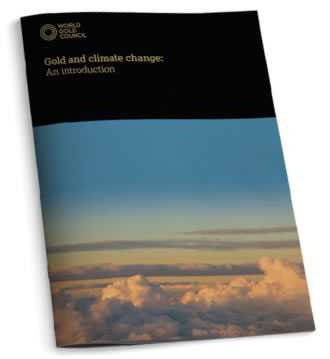
We also published our draft Responsible Gold Mining Principles following an extensive public consultation. Once finalised, the principles will set out clear expectations for all stakeholders as to what constitutes responsible gold mining. The responsible gold mining industry already operates under a large number of standards and codes that define specific aspects of good practice. The principles will consolidate and frame the multitude of existing approaches under a single framework, which will provide confidence to refiners, trading markets, investors and consumers that gold has been mined responsibly. Conformance with the principles will also demonstrate the continuing commitment of the responsible gold mining industry to operate to high ESG standards. Looking ahead, this will be an ongoing area of work that seeks to position our members as highly responsible corporate citizens.
Ensuring best practice in our standards
In 2013, we developed a Guidance note on non-GAAP metrics – all-in sustaining costs and all-in costs to provide further transparency and greater consistency in the way that mining organisations report their costs. Since then the metrics have been widely adopted by gold mining companies as part of their overall reporting disclosure. This year, we released an updated version of the Guidance Note, which included incremental enhancements in light of new accounting standards to support further consistency of application.
Increasing central bank appetite for gold
Demand for gold as a reserve asset strengthened considerably in 2018, rising by 74% compared to 2017, in response to the geopolitical and macro-economic environment. It also broadened. Our flagship training programme for reserve managers, held in conjunction with the National University of Singapore, received a record number of applications from central banks globally keen to learn how gold can help them meet their safety, liquidity and other objectives. Our mid-year central bank survey reported that one fifth of central banks surveyed intended to increase their gold holdings over the next 12 months, with none planning a decrease.
The Common Accounting Framework for Central Banks, which was launched early in 2018, was awarded Central Banking’s inaugural Professional Services Initiative Award.
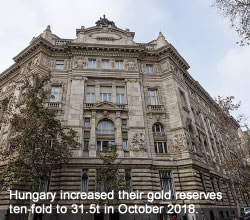
The Common Accounting Framework for Central Banks, which was launched early in 2018, was awarded Central Banking’s inaugural Professional Services Initiative Award for the concerted effort to support constant accounting of monetary gold in order to boost transparency and improve central bank gold reserve management. Looking ahead, we will be co-hosting our next executive training programme on reserve management with the PBoC’s prestigious school of finance: Tsinghua University.
Bringing Shari’ah compliant solutions to Islamic investors
Following the launch of the Shari’ah Standard on Gold, which was developed to open up a new asset class for Islamic investors, new Shari’ah compliant gold-backed products were launched in Dubai and Malaysia this year, catering to both the institutional and retail investment markets. To further facilitate the growth of the Islamic gold market we collaborated with the International Islamic Finance Market (IIFM) to develop standardised documentation for gold products and transactions.
To complement our marketing of the Shari’ah Standard on Gold to Islamic financial institutions, we provided them with research on consumer perceptions of gold and Islamic finance. This is being used by Islamic banks to better understand consumer preferences, inform product design, and support the growth of the Islamic finance sector currently valued in excess of US$1.5 trillion (tn).
Changing the global dialogue on gold
We held our inaugural Investment Summit on 25 April 2018 in conjunction with NYU Stern Business School. Aimed at raising the global conversation on gold, both in terms of its role in addressing critical long-term investment challenges, as well as its broader relevance in society, attendees included leading industry experts, asset owners, academics, official institutions and central banks, many of whom had no prior involvement in the gold investment markets.
The debate centred on the macro socio-economic changes ahead, including: the shift in economic power from West to East; the rise of fintech and cryptoassets; ESG issues and their implications for the gold market and the impact of rising emerging-market incomes and the widening deficit in pension funds in western markets. The macro-economic shift from a primarily dollar-based to a multi-currency-based reserve system was also considered. Following the success of our first summit, two will be held in 2019 in Beijing and New York.
Dr Alan Greenspan, former chair of the Federal Reserve, is an admirer of gold and the gold standard, however he did note that flexible exchange rates have a similar effect as the standard achieved in its day. Today, gold is perceived to have an intrinsic value, which is why the world’s central banks, the IMF and other financial institutions hold over US$1tn of gold.
Furthermore, Dr Greenspan pointed out that the change in the price of gold historically parallels the change in the general price level for goods and services; in other words, it has an inherent stability when looked at across decades or even centuries.
India’s evolving gold market
India holds a strategically important position as the second largest consumer of gold and the holder of the largest stock of gold, yet its policies on gold in the past have not kept pace with the needs of a dynamic industry. Over the last five years, we have been advocating the need for a comprehensive gold policy to make gold a mainstream financial asset and part of the organised sector of the Indian economy. As a consequence of our efforts, 2018 marked a significant shift in government policy.
India’s Finance Minister indicated the government’s commitment to define comprehensive gold policies that would establish gold as an asset class, together with the creation of a gold exchange.
In February’s Union Budget, India’s Finance Minister indicated the government’s commitment to define comprehensive gold policies that would establish gold as an asset class, together with the creation of a gold exchange. This reflected a profound change in approach. Leading on from this commitment, the government’s think-tank, NITI Aayog, released a gold policy report with 84 recommendations to transform the gold market over the coming years. We were a core member of this committee.
Transitioning from policy considerations to implementation, we established a steering committee made up of 27 participants from financial institutions and trade associations, to develop a blueprint for a spot gold exchange, which will reform current practices that include private bilateral transactions, fragmentation, opacity, lack of price transparency and inconsistent and unreliable quality standards. The blueprint has been completed following wide consultations with policymakers and regulators, giving specific recommendations on operating platforms and regulatory changes. During 2019, a syndicate will be established to work with the policymakers to drive implementation.
In November we launched India’s first assay institute, in collaboration with MMTC-PAMP.
Finally, in November we launched India’s first assay institute, in collaboration with MMTC-PAMP. To support and sustain this initiative, six large national trade associations came on board as patron members in an unprecedented fashion. The institute will be transformative for the industry, as a new generation of skilled assayers will help eliminate the systemic under caratage of gold jewellery and bring integrity to the gold market, thereby instilling trust and confidence in consumers.
The growing role of gold in China
In 2018, we presented policy recommendations to the Chinese government and the PBoC to help strengthen its domestic gold industry and enable it to take an increasingly international role.
As reported last year, a new paper, Recommendations for the further development of China’s gold market, was released at the 2018 China Gold Congress, which we co-hosted with the China Gold Association. This report set out a five-year plan to help the market drive efficiency, increase transparency and take a greater role in the global gold market. Since then, the PBoC has started working on guidance for three new areas of gold investment: internet investment businesses, asset management and GAP products, which should stimulate new markets for gold in China.
With the restructuring of the China Banking and Insurance Regulatory Commission (CBIRC) during the year, we have resumed our activities with IAMAC, SGE and leading insurance funds by submitting a proposal to CBIRC to enable insurance companies to make an allocation to gold. The assets currently held by insurance companies exceed US$3tn. If approved, it would open a new channel for demand in China.
We also began preparations to establish a new ‘China Gold 50’ group, which is made up of the key stakeholders in the gold industry in China, including regulators, the CGA, SGE, SHFE, top mining companies, bullion banks, leading jewellers and other associations. This group will gather on an annual basis to discuss issues facing the Chinese gold market and how to help it strengthen its international role.
Extending the gold ETF market
Since its inception nearly 15 years ago, the US physical gold-backed ETF industry continues to experience an average of 27.3% AUM growth per year in US$ terms. 1 This is driven by diverse factors including the rapid adoption of robo/self-directed solutions, a wide range of options for exposures, management fee compression, and ease of use relative to other investment vehicles.
In response to evolving market preferences SPDR® Gold MiniShares (GLDM) was launched in June in partnership with State Street Global Advisors (SSGA). Immediately embraced by key investor channels, including retail and platform driven models, GLDM grew rapidly, closing 2018 with US$397.4mn in assets. GLDM is currently the largest low-cost gold-backed ETF in the US market. SPDR® Gold Trust (GLD®) continues to be the market-leading gold-backed ETF, with US$32.5bn assets, representing approximately 70% of the US ETF market. Rounding out the GLD suite of ETFs is “SPDR® Long Dollar Gold Trust (GLDW), which offers investors an innovative way to access the gold market by removing the potential negative influence of a strong US dollar (USD) on the price of gold.
Fintech’s growing role in the gold industry
2018 saw a heightened level of interest in the gold market by the fintech community, with a myriad of different digital investment platforms and products having been launched worldwide and many more under development. Many of these seek to introduce new business models and disruptive solutions to redefine the current gold industry value streams and potentially significantly increase gold demand. In addition, blockchain has rapidly gained traction in the fintech space with a number of providers leveraging the technology in seeking to ensure provenance and integrity in the gold supply chain.
Given the profound impact of fintech on the mining industry and the potential new channels of gold demand this could create, we established a Fintech Gold Working Group with our members to explore these opportunities.
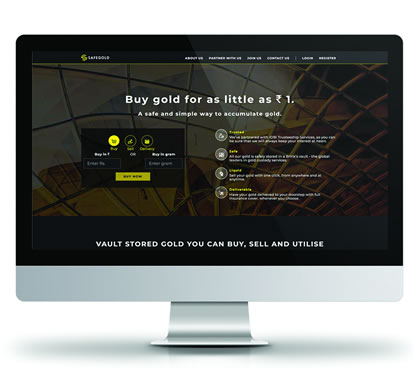
Subsequently, we decided to take tangible steps to help the gold market organise and advance initiatives in the space, and so we shifted our focus to honing our understanding of how technology and market infrastructure could be enhanced with improved process. One significant outcome was publishing the Internet Investment Gold (IIG) Investor Guidance document which highlights critical questions and structural requirements investors should be cognisant of and prioritise when evaluating online offerings of gold investment products. Since publication of the guidance, feedback has been overwhelmingly positive from the broad range of recipients including regulators, investors and product providers.
Looking ahead, fintech gold solutions are expected to become a significant market driver and one such example is Safegold, a digital platform in India that allows customers to buy, sell and receive vaulted gold. We made a minority investment in it in order to increase the breadth of vaulted digital gold products in India.
Money and Gold
Gold has always played an important role in the international monetary system. Gold coins were first struck on the order of King Croesus of Lydia (an area that is now part of Turkey), around 550 BC.
They circulated as currency in many countries before the introduction of paper money. Once paper money was introduced, currencies still maintained an explicit link to gold (the paper being exchangeable for gold on demand).
By the late 19th Century, many of the world’s major currencies were fixed to gold at a set price per ounce, under the ‘Gold Standard’ and this persisted in different forms for about one hundred years.
To aid further research by scholars, journalists and all those interested in gold’s monetary role, the World Gold Council commissioned a compilation of extracts from key historical documents from 1660 to 1999.
Citations are provided for every source so as to facilitate the reader’s further research. These documents are therefore a valuable resource for researchers who seek even more in-depth knowledge of the history of money and gold.
Approximately 150 documents are divided into three sections that correspond roughly with the changing position of gold in the international economic system.
Records 1660-1819
Covering the period from the mid-17th century through to the British Government’s decision to allow the free exchange of paper, money and gold, and presenting documents, primarily from the UK, that relate to the establishment of gold coinage as the centrepiece of the British financial system. The documents contained here address four themes: the legal position of gold coinage; popular views of gold; technologies of gold coinage; and early theoretical evaluations of the gold standard.
1662. Dec 20.
1663. May 19.
1663. Aug 1.
1664.
1666. Dec 20.
1667. Jun-Oct.
1672.
1674.
1676.
1690. Apr 9.
1690. May 8.
1690. Dec 6.
1691. Dec 30.
1692.
1694. Apr 25.
1695. Jan 8.
1695. Jul 3.
1695. Dec 10.
1695.
1696. Jan 17.
1696. Feb 15.
1696. Feb 24.
1696. Apr 10.
1696. Oct 23.
1698. Sep 19.
1698. Sep 22.
c.1700
1701. Jan 20.
1701. Sep 28.
1702. Jul 7.
1705.
1710. Dec 31.
1717. Sep 21.
1717. Dec 22.
1717. Dec 31.
1718. Oct 20.
1720. Mar-Nov
1730.
1734.
1735. various
1752.
1792. Apr 2.
1797. Feb 27.
1797. Feb 28.
1797. Feb 28
1810. Jun 8.
1811. Jul 9.
1812. Mar 20.
1816. May 31.
1819. Apr 5.
1819. May 19.
1819. May 21.
Records 1820-1930
Covering the period from the establishment of the UK gold standard in the early 19th century until the re-establishment of the gold standard after the First World War. Three themes are dealt with: the legal position of gold in the currency systems of the major western nations; political debates over the role of gold; and international agreements relating to gold. Continental European monetary arrangements are covered in this section, as are several major international agreements from the late 19th and early 20th centuries.
1834. Jun 27.
1834. Jun 28.
1844. Jul 19.
1849. Jul 13.
1866. Feb 6.
1866. Aug 6.
1868. Feb 18.
1869. Jun 28.
1870. Feb 10.
1873. Feb 12.
1875. Jan 14.
1876. Jul 5.
1878. Nov 27.
1884. May 2.
1885. Nov 6.
1886. Jan 7.
1888. Jan 30.
1888. Oct.
1889. Jul 9.
1889. Aug 30.
1896. Jul 9.
1900. Mar 14.
1914. Aug 6
1914. Aug 25.
1918. Aug 15.
1919. Jun 28.
1920. Nov 4.
1921. Apr 7.
1924. Aug 30.
1925. Apr 28.
1925. Apr 28.
1925. Jul.
1925. Aug 21.
1928. Jun 25.
1929. Dec 20.
1930. Mar 29.
Records 1931-1999
Covering the period commencing with the breakdown of the post-WW1 gold standard in the 1930s and concluding with the Central Banks’ Gold Agreement (Washington Agreement on Gold) of 1999. The documents follow four themes: the collapse of the gold standard; legislation, primarily from the US, relating to gold; the international gold market; and international agreements relating to gold. An account of some of the activities of the London gold market is included. The ultimate collapse of the Bretton Woods system is covered in great detail with numerous documents from various official sources.
Всемирный золотой совет

Штаб-квартира WGC располагается в Лондоне. В этом городе также проводится ежедневный золотой фиксинг, результаты которого используют банки десятков стран. Компании-члены Всемирного золотого совета добывают и производят примерно 60% золота по всему миру.
Всемирный золотой совет имеет свои представительства не только в Великобритании, но и в других странах: США (Нью-Йорк), Япония (Токио), Китай (Шанхай, Пекин), Турция (Стамбул), ОАЭ (Дубай), Индия (Ченнаи, Мумбаи), город-государство Сингапур. С 2008 года советом руководит Арам Шишманян.
World Gold Council влияет на структуру приобретения золота в различных формах:
По правилам, чтобы стать членом Всемирного золотого совета, организации необходимо добывать не менее 100 тысяч тройских унций золота в квартал (то есть около 1,04 тонны золота ежемесячно). До недавнего времени ни одно российское предприятие не занималось золотопроизводством в столь крупных масштабах, но в 2010 году компания «Полиметалл» сумела добыть за третий квартал 117 тыс. унций драгметалла. Теоретически она имеет право претендовать на членство в World Gold Council.
В настоящее время во Всемирный золотой совет входят 15 золотодобывающих предприятий, большая часть из которых находится в Канаде. Это объясняется лояльностью налогового законодательства страны к компаниям, которые занимаются добычей драгоценного металла.
Поскольку членами ВЗС являются предприятия по золотодобыче, они стремятся различными способами повышать инвестиционную привлекательность золота. Перспектива вложений в драгметалл подтверждается тем, что золото никогда не обесценится в отличие от бумажных купюр, которые часто становятся макулатурой. Золото доказало свою надёжность за несколько тысячелетий развития мира. Металл долгое время использовался в качестве денежной единицы, за которую приобретали и продавали различные товары. Многие аналитики считают, что у доллара нет дальнейших перспектив роста, и убеждают людей инвестировать сбережения в драгоценный металл.
Полный список членов World Gold Council:
Gold Demand Trends
Gold Demand Trends Q2 2022
Gold Demand Trends Q1 2022
Gold market sees solid start to 2022
Q1 gold demand was 34% above Q1 2021, driven by strong ETF inflows. In a quarter that saw the US dollar gold price rise by 8%, gold demand (excluding OTC) increased 34% y-o-y to 1,234t – the highest since Q4 2018 and 19% above the five-year average of 1,039t.
Gold Demand Trends Full Year 2021
Strong Q4 lifts full year demand 10%
Annual demand recovered across virtually all sectors – the notable exception being ETFs, which saw net annual outflows
28 January, 2022
Gold Demand Trends Q3 2021
Q3 gold demand down 7% to 831t
ETF outflows outweighed continued recovery in other sectors
28 October, 2021
Gold Demand Trends Q2 2021
Q2 gold demand flat, H1 down 10%
Strong consumer demand recovery and Q2 gold ETF inflows were not enough to offset heavy Q1 outflows.
Gold Demand Trends Q1 2021
Strengthening consumer demand mitigated the impact of ETF outflows as global economies continued to recover
Gold Demand Trends Full year and Q4 2020
Weak Q4 set the seal on an 11-year low for annual 2020 gold demand
28 January, 2021
Gold Demand Trends Q3 2020
Strong growth in global investment demand for gold in Q3 partly offset weakness elsewhere as COVID-19 remained in the driving seat.
29 October, 2020
Gold Demand Trends Q2 2020
Record H1 inflows into gold-backed ETFs offset weakness in all other sectors of the market, with demand hit by the ongoing global coronavirus pandemic.
Gold Demand Trends Q1 2020
The global COVID-19 pandemic fuelled safe-haven investment demand for gold, offsetting marked weakness in consumer-focused sectors of the market.
Gold Demand Trends Full year and Q4 2019
Gold demand fell 1% in 2019 as a huge rise in investment flows into ETFs and similar products was matched by the price-driven slump in consumer demand.
Insights
World Gold Council
The experts on gold
World Gold Council
The experts on gold
Webcast: James Grant on inflation, rates, and geopolitical uncertainty
Blog
James Grant, noted economic expert and Founder and Editor of Grant’s Interest Rate Observer, joined us to share timely insights on key topics. Watch the conversation!
Posted 1 month ago
World Gold Council
The experts on gold
Strategic Edge Video Series: Francisco Blanch, Bank of America
Blog
Francisco Blanch, Head of Commodities and Derivatives Research at BofA Global Research, joins us for this episode of our Strategic Edge series.
Posted 2 months 2 weeks ago
World Gold Council
The experts on gold
You asked, we answered: explaining gold’s recent performance
Blog
Gold has come under pressure since mid-March, when it was within touching distance of its previous record high.
Posted 3 months 1 week ago
World Gold Council
The experts on gold
How does gold respond when US credit spreads widen?
Blog
Authored by Johan Palmberg and Adam Perlaky:
Posted 4 months 4 weeks ago
World Gold Council
The experts on gold
Stagflation strikes back
Blog
Authored by Krishan Gopaul and Johan Palmberg
Posted 5 months ago
World Gold Council
The experts on gold
Stocks go down, bonds go. down?
Blog
Authored by Louise Street and Johan Palmberg: The conventional wisdom that stocks and bonds are negatively correlated is a central component of most asset allocation strategies. But the correlation hasn’t always been negative – far from it, in fact – and there are increasing signs of strain in the relationship, prompting investors to ask: could the stock-bond correlation flip? In this blog, we consider that possibility, what it might mean for the average portfolio, and how gold could help to protect portfolio performance.
Posted 5 months 1 week ago
World Gold Council
The experts on gold
Podcast: Exploring the link between gold and central bank digital currencies
Blog
What impact will the emergence of central bank digital currencies and cryptoassets have on the gold market? Find out in this podcast by OMFIF, featuring our Chief Market Strategist, John Reade.
Posted 5 months 3 weeks ago
World Gold Council
The experts on gold
Strategic Edge Video Series: Reid Steadman of S&P Dow Jones Indices
Blog
Reid Steadman, Head of ESG and Innovation at S&P Dow Jones Indices, joins us for this episode of our Strategic Edge series. Watch his discussion with our Head of ESG Initiatives, Terry Heymann.
Posted 7 months 2 weeks ago
World Gold Council
The experts on gold
EVOLVE Investment Summit 2021
Blog
On November 3rd, 2021, we hosted our fourth annual conference, the EVOLVE Investment Summit virtually.
Posted 9 months 2 weeks ago
World Gold Council
The experts on gold
Strategic Edge Video Series: Joyce Chang of J.P. Morgan
Blog
In this episode of our Strategic Edge series, Joyce Chang, Chair of Global Research at J.P. Morgan, discusses market and allocation strategy trends with our Global Head of Research, Juan Carlos Artigas.
Posted 9 months 3 weeks ago
World Gold Council
The experts on gold
Strategic Edge Video Series: Stéphane Monier, CIO at Lombard Odier
Blog
Listen as CIO of Lombard Odier, Stéphane Monier, discusses evolving macroeconomic trends, their impact on allocation and ESG strategy with World Gold Council’s Chief Market Strategist, John Reade.
Posted 10 months 2 weeks ago
World Gold Council
The experts on gold
Strategic Edge Video Series: Andrew McCollum of Coalition Greenwich
Blog
In this episode of our Strategic Edge series, Andrew McCollum, Head of Investment Management at Coalition Greenwich, discusses the findings of recent research on portfolio allocation trends with Matthew Mark, our Global Head of Institutional Sales.
Posted 11 months 1 week ago
World Gold Council
The experts on gold
Inflation Roundtable
Blog
During a virtual round table, in partnership with European Pensions, a panel of industry experts consider the medium and long-term prospects for inflation, its potential impact on portfolios and the hedging tools available for pension funds to prepare for whatever the future may hold.
Posted 11 months 2 weeks ago
World Gold Council
The experts on gold
Rethink, Rebalance, Reset: Mid-year outlook and post-pandemic portfolio allocation
Blog
Watch our webcast with Bridgewater and Coalition Greenwich for a timely and incisive discussion on post-pandemic portfolio allocation and looking ahead, the outlook for the second half of 2021.
Posted 1 year 1 month ago
World Gold Council
The experts on gold
Strategic Edge Video Series: Bob Haber of Proficio Capital Partners
Blog
Bob Haber, Founder, Partner and CIO at Proficio Capital Partners joins us for this edition of our Strategic Edge video series. Watch now for his investment insights, in conversation with Joe Cavatoni, our Head of Americas.
Posted 1 year 1 month ago
Receive the newest data and research in your inbox
Helping you stay informed about the gold industry’s latest news and updates.
Gold and cryptocurrencies
Published 2 February, 2021; revised 5 February 2021
How gold’s role in a portfolio differs from cryptocurrencies
The rapid ascent of cryptocurrencies over the past year has drawn the attention of investors. Often, investments in cryptocurrencies 1 are equated to investments in gold. Despite some apparent similarities, we believe that gold and cryptocurrencies stands apart fundamentally and practically.
Our analysis demonstrates that:
sources of gold demand are more diverse (p.3)
supply and ownership of cryptocurrencies are more concentrated (p.4)
cryptos have mostly contributed to portfolio performance through returns but have added significant risk (pp.5-6)
gold is a high-quality liquid asset and portfolios with cryptocurrencies may benefit from higher allocations to gold (pp.6-7)
evolving regulatory frameworks may change the value proposition of cryptocurrencies (p.8).
Gold and cryptocurrencies are fundamentally different
The advent of blockchain and cryptocurrencies has catalysed innovation in the financial industry. Their proliferation and recent exponential price increase have captured investors’ imaginations. However, the recent developments in blockchain and cryptocurrencies do not imply that cryptocurrencies are a substitute for gold.
The argument that gold and cryptocurrencies such as 2, 3 are similar appears to stem from perceptions of:
However, this comparison is simplistic and overlooks fundamental differences between gold and cryptocurrencies – not only in terms of their market dynamics but also in terms of their performance and the role they play in portfolios.
Gold has a dual nature
The sources of demand for gold and cryptocurrencies are very different. For more than 2,000 years, gold has served as means of exchange and been used as a store of value. 4 Gold is owned by institutional and individual investors, as well as by central banks (Figure 1).
Unlike cryptocurrencies, gold is also a consumer good.
Figure 1: Gold’s demand is linked to investment and consumption
Composition of average annual net demand*
*Based on 10-year average annual net demand estimates ending in 2020. It excludes over-the-counter demand.
**Net jewellery and technology demand computed assuming 90% of annual recycling comes from jewellery and 10% from technology.
Source: Metals Focus, Refinitiv GFMS, World Gold Council
Login or register to keep reading.
Login or register to read the text, view charts and download the files..
Registration is free, quick and easy. It gives you access to all downloads on this website.
Jewellery is an integral part of the gold market. A large portion of gold demand is deeply connected to cultural and religious beliefs, especially in India and China. Gold is also widely used in high-end electronics – including for components in computers, mobile phones and other technology (which, interestingly, are needed to ‘mine’ cryptocurrencies).
This sets gold apart from many assets, giving it a unique dual nature that historically has allowed it to perform well in times of economic stress as well as benefiting from long-term economic expansion. This underpins gold’s strategic role in portfolios as a source of returns as well as an effective diversifier. 5
In contrast, cryptocurrencies are digital (non-tangible) assets and, in our view, their current primary – if not only – source of demand is for investment (Table 1). For example, Bitcoin’s recent performance and volatile behaviour may suggest that it primarily responds to price momentum, which is usually linked to more speculative than strategic positioning.
Table 1: Gold has more diverse sources of demand than cryptocurrencies
Stylised overview of sectors of current demand for gold and cryptocurrencies*
| Jewellery | Technology | Investment | Central banks | |
|---|---|---|---|---|
| Gold | ✔ | ✔ | ✔ | ✔ |
| Cryptocurrencies | X | ** | ✔ | X |
*As of 30 December 2020.
**Some cryptocurrencies that can be used as ‘smart’ digital contracts may be purchased for applications in technology.
Source: World Gold Council
Chart 1: Growth in above-ground stocks of gold remains below the equivalent growth in Bitcoin
Growth in above-ground stocks of gold remains below the equivalent growth in Bitcoin
Annual rate of growth of gold and Bitcoin through mining*
Sources: Bloomberg, bitcoin.org, World Gold Council; Disclaimer
*As of 31 December 2020.
Gold is a unique and scarce natural element
One of the most referenced similarities between gold and cryptocurrencies is scarcity. Gold’s above-ground stocks grew at a rate of 1.7% through mine production in 2020 (Chart 1) – and that rate has not changed much over the past 20 years. 6 The stock of Bitcoin is currently increasing at an annual rate close to 3% and is engineered to slowly decline to zero growth around the year 2140.
While both gold and Bitcoin are finite, Bitcoin’s pre-determined number of units in existence may seemingly create an advantage. However, gold’s relevance has been cemented by a combination of elemental physical and chemical properties, as well as a good balance between availability and scarcity. Thus, while there exist other metals and precious metals, such as silver, palladium or platinum, gold was by far the preferred asset used in currency standards and has remained a key component in foreign reserves even after the end of the Bretton-Woods system.
In contrast, nothing prevents additional – and possibly more efficient 7 – cryptocurrencies from replacing existing ones or potentially adding to the overall total supply. The crypto space has exploded in recent years, and it is estimated that there are more than 10,000 cryptocurrencies available through various online platforms. 8
At present, Bitcoin has benefited from its name recognition and large network effect, but the space is highly competitive, and it is still too early to know how this issue may play out. For example, Bitcoin Cash, which follows the same structure but allows an increased block size to reduce costs and increase speed, was launched a few years ago. 9 Various other Bitcoin spinoffs (or ‘forks’) followed. 10 And while they are not always prevalent, they are more than just a proof of concept that could result in unforeseen expansions to supply.
Gold production and ownership is diverse
Gold mining is well distributed around the globe. The top five gold producing countries are China, Russia, Australia, the US, and Canada, with various Latin American and African countries not far behind. Average annual production is evenly distributed across regions, with Europe the only continent accounting for less than 10% and no continent capturing more than 25%. 11
Equally, ownership of above-ground stocks is widely distributed. The US Treasury is the largest known single holder of gold but only owns 4% of all above-ground stocks. Almost 50% exists in the form of jewellery (distributed globally), while 21% is owned by a large number of investors – individual and institutional – in the form of bars, coins and gold ETFs. 12
Concentration risk has been flagged as a key issue for cryptocurrencies. The number of Bitcoin ‘miners’ has been whittled down from thousands to just a handful of key participants. As reported by Bloomberg, “five mining entities – all of them based in China – control 49.9% of all computing power on the network, the highest concentration of mining power ever, a new analysis from TokenAnalyst found”, which, if increased, could pose severe risks to the network. 13, 14
Furthermore, while the number of Bitcoin holders has risen over the past year (Chart 2), ownership is very concentrated – just 2% of Bitcoin holders own 95% of all available Bitcoins. 15 As a counter-indicator of performance, perhaps as a by-product of the aforementioned concentration, large spikes in the number of unique addresses have historically coincided with significant pullbacks in price.
Chart 2: Sharp increases in Bitcoin ownership have coincided with significant selloffs in recent years
Sharp increases in Bitcoin ownership have coincided with significant selloffs in recent years
Price of Bitcoin compared to daily unique users*
Sources: Bloomberg, blockchain.com; Disclaimer
*Total number of unique active addresses, inclusive of senders and receivers.
Gold and crypto prices behave differently
High potential reward brings added risk
Cryptocurrencies have captured the imagination of investors with their exponential growth over the past few years, likely in part due to widespread asset price inflation on the back of ultra-low interest rates. Bitcoin quadrupled in price in 2020 alone and has increased ninefold over the past two years. 16 These gains have led some institutional investors to consider, or make some incremental level of investment in, Bitcoin over the past year. However, as with any other financial asset, reward does not come without risk. Not surprisingly, Bitcoin’s ascent has been accompanied by substantial volatility and drawdown risk (Table 2 and Chart 3).
Bitcoin has been three times more volatile than the S&P 500 or the NASDAQ composite over the past two years, and more than four and a half times more volatile than gold.
Table 2: Bitcoin is significantly more volatile than the S&P 500, the NASDAQ composite and gold
Summary of key risk metrics based on weekly returns*
*As of 25 January 2021.
**Bitcoin calculations starts 1 January 2009 due to data availability.
Source: Bloomberg, ICE Benchmark Administration, World Gold Council
Bitcoin has lost 2.5% or more once in four weeks on average compared to once in 12 weeks on average for the S&P 500 or NASDAQ, or once in 13 weeks on average for gold. Finally, Bitcoin’s Value-at-Risk (VaR) has also been considerably higher. On any given week over the past two years, investors had a 5% chance (95% VaR) of losing at least US$1,382 for every US$10,000 invested in Bitcoin – almost five times more than the VaR for an equivalent investment in gold. And while investors may choose to embrace high-reward tactical assets such as Bitcoin, they still need the appropriate tools to manage the additional risk. In our view, a higher exposure to cryptocurrencies warrants a higher allocation to gold.
Bitcoin’s Value-at-Risk is five times higher than
that for gold.
Chart 3: Bitcoin’s annual volatility is still multiple times higher than equities and bonds
Chart 3: Bitcoin’s annual volatility is still multiple times higher than equities and bonds
Annualised average daily volatility*
Sources: Datastream, World Gold Council; Disclaimer
*As of 25 January 2021.
Diversification is not just about low correlation
Furthermore, if Bitcoin were a replacement for gold, it would behave similarly to gold in terms of its reaction to the performance of other assets – in particular, equities. And while both gold and cryptos have generally had relatively low correlation to the equity indices such as the S&P 500 or the NASDAQ composite, it is the correlation when equities fall that matters most to investors as this is usually when diversifiers are most useful.
Chart 4: The correlation between gold and Bitcoin remains low despite an increase seen in 2020
The correlation between gold and Bitcoin remains low despite an increase seen in 2020
Rolling 90-day correlation between gold and Bitcoin*
Sources: Bloomberg, World Gold Council; Disclaimer
*As of 25 January 2021. Based on weekly returns of the LBMA Gold Price PM USD and Bitcoin spot (XBT).
Chart 5: Gold prices tend to increase when tech stocks fall but the same has not been true so far for Bitcoin
Gold prices tend to increase when tech stocks fall but the same has not been true so far for Bitcoin
(a) Scatterplot of gold and the NASDAQ composite when the composite falls by more than 2σ*
Sources: Bloomberg, ICE Benchmark Administration, World Gold Council; Disclaimer
*As of 25 January 2021. Based on 5-year daily returns using the LBMA Gold Price PM US and the NASDAQ composite.
Gold prices tend to increase when tech stocks fall but the same has not been true so far for Bitcoin
(b) Scatterplot of Bitcoin and the NASDAQ composite when the composite falls by more than 2σ*
Sources: Bloomberg, World Gold Council; Disclaimer
*As of 25 January 2021. Based on 5-year daily returns using Bitcoin spot prices given by XBT and the NASDAQ composite.
Here, gold and Bitcoin stand apart. Gold tends to show a negative correlation to equities during significant stock market falls – as seen by the behaviour between gold and NASDAQ (Chart 5a). In contrast, Bitcoin has been equally likely to rally or fall in periods when the NASDAQ tumbled (Chart 5b).
Bitcoin has yet to prove itself as a safe haven
Bitcoin trades like a ‘high-octane’ tactical asset. At times, market participants have noticed ‘safe haven-like’ behaviour in Bitcoin, as it has appeared to directionally move in a similar way to some traditional hedges, such as gold. However, there is no consistent trend.
For example, in March 2020, Bitcoin fell by more than 40% from peak to trough, ending the month down 25% and behaving more similarly to US technology stocks than gold. In contrast, while gold initially fell in March – by 8% from peak to trough – it quickly rebounded to end the month back to the level where it started, and then continued the upward trend as investors added hedges. 17
Improving risk-adjusted returns
Some studies have suggested that adding Bitcoin to a hypothetical portfolio would have increased risk-adjusted returns. 18 Our own equivalent analysis shows that over the past five years, a 1% to 5% allocation to Bitcoin would have increased the risk-adjusted return of a well-diversified hypothetical portfolio (Chart 6). 19 However, the improvement would have come from Bitcoin’s rapid price appreciation and not from a reduction of portfolio volatility, as one would expect from a diversifier or safe-haven asset. In contrast, gold’s portfolio impact over the same period would have come from both a contribution to portfolio returns as well as a reduction in volatility. This highlights gold’s relevance as a strategic risk-management tool in asset allocation.
Our analysis also shows that the same hypothetical portfolio with a 2.5% allocation 20 to Bitcoin and a 1% to 10% allocation to gold 21 would have improved risk-adjusted returns even further over the same period.
Chart 6: Gold improved risk-adjusted returns and reduced drawdown risk on a well-diversified portfolio containing Bitcoin
Gold improved risk-adjusted returns and reduced drawdown risk on a well-diversified portfolio containing Bitcoin
Performance of a hypothetical well-diversified investment portfolio with various allocations to Bitcoin and gold*
Sources: Bloomberg, ICE Benchmark Administration, World Gold Council; Disclaimer
*Based on performance between 31 December 2015 and 31 December 2020.The hypothetical average well-balanced portfolio (in US dollars) is based on the American Association of Individual Investors average allocations over the past 20 years, along with a combination of the 2019 US Trust High Net Worth allocation survey, and the 2020 MS GIC Capital Markets Update paper. It includes quarterly rebalanced total returns of a 47% allocation to equities (23% MSCI USA Net Total Return, 18% MSCI ACWI ex US, 6% MSCI Emerging Net Total Return), 36% allocation to fixed income (26% Barclays US Aggregate, 3% Barclays Global Aggregate ex US, 1% JPMorgan EM Global Bond Index and 6% short-term Treasuries), and 17% alternative assets (3% FTSE REITs Index, 11% HFRI Hedge Fund Index, and 3% Bloomberg Commodity Index). The allocation to gold and Bitcoin comes from proportionally reducing all assets. Bitcoin returns based on the Bitcoin price in US dollars aggregated by Bloomberg (XBT). Gold prices based on LBMA Gold PM. Risk-adjusted returns are calculated as the annualised return/annualised volatility. Maximum drawdown is calculated as the largest fall in a portfolio before the total value reaches a previous peak. See important disclaimers and disclosures at the end of this report.
Gold improved risk-adjusted returns and reduced drawdown risk on a well-diversified portfolio containing Bitcoin
Performance of a hypothetical well-diversified investment portfolio with various allocations to Bitcoin and gold*
Sources: Bloomberg, ICE Benchmark Administration, World Gold Council; Disclaimer
*Based on performance between 31 December 2015 and 31 December 2020.The hypothetical average well-balanced portfolio (in US dollars) is based on the American Association of Individual Investors average allocations over the past 20 years, along with a combination of the 2019 US Trust High Net Worth allocation survey, and the 2020 MS GIC Capital Markets Update paper. It includes quarterly rebalanced total returns of a 47% allocation to equities (23% MSCI USA Net Total Return, 18% MSCI ACWI ex US, 6% MSCI Emerging Net Total Return), 36% allocation to fixed income (26% Barclays US Aggregate, 3% Barclays Global Aggregate ex US, 1% JPMorgan EM Global Bond Index and 6% short-term Treasuries), and 17% alternative assets (3% FTSE REITs Index, 11% HFRI Hedge Fund Index, and 3% Bloomberg Commodity Index). The allocation to gold and Bitcoin comes from proportionally reducing all assets. Bitcoin returns based on the Bitcoin price in US dollars aggregated by Bloomberg (XBT). Gold prices based on LBMA Gold PM. Risk-adjusted returns are calculated as the annualised return/annualised volatility. Maximum drawdown is calculated as the largest fall in a portfolio before the total value reaches a previous peak. See important disclaimers and disclosures at the end of this report.
Furthermore, a 1% allocation to Bitcoin alongside a 10% allocation to gold resulted in risk-adjusted return equivalent to a 2.5% allocation to Bitcoin without gold, but the portfolio with gold would have had a significantly lower maximum drawdown. Overall, this not only suggests that Bitcoin fails to replace gold’s role in a portfolio, but also that adding Bitcoin to a portfolio may warrant a higher allocation to gold, likely as a way of managing the additional volatility.
Adding Bitcoin to a portfolio may warrant
a higher allocation to gold.
Interestingly, we also found that a 1% allocation to Bitcoin – often viewed as a tech investment – would have given the same risk-adjusted return as a 7.5% allocation to major US tech companies – in particular, the so-called FAANGs. 22 Yet, the allocation to FAANGs would have also resulted in a lower maximum drawdown.
Bitcoin has so far improved the efficiency of portfolios through extremely high returns, which are by no means guaranteed to continue at the same rate.
Gold’s liquidity helps investors manage risk
Gold trades in a well-established and liquid market. Collectively, gold trading volumes exceeded US$180bn a day on average in 2020 between over-the-counter transactions (primarily through spot), futures and gold ETFs. 23 This in turn helped keep bid-ask spreads of most gold-traded instruments quite tight – usually less than a couple of basis points – thus giving investors the ability to easily enter or exit their gold positions. 24
In contrast, Bitcoin spot trading volumes – which can vary widely from source to source and are not always easy to verify – were estimated to be less than US$2bn, on average, in 2020, with a range up to US$4bn. 25 And while volumes seem to have increased substantially so far in 2021 reaching levels close to US$10nb, 26 reporting in online platforms is not regulated and may not be homogeneous.
Additionally, the number of Bitcoin transactions as a function of its market cap has decreased to almost zero (Chart 7). We believe that this trend could indicate insufficient liquidity in the market if many investors, or even one large one, were to attempt to exit the market. And anecdotal evidence suggests that bid-ask spreads not only remain wide but vary substantially.
Chart 7: Bitcoin transaction velocity has waned, raising potential liquidity concerns
Bitcoin transaction velocity has waned, raising potential liquidity concerns
Transactions per second per US$1 million*
Sources: blockchain.com, blockchair.com, World Gold Council; Disclaimer
*As of 25 January 2021. Represents number of transactions per second divided by the total market capitalisation for Bitcoin in US-dollar millions.
An evolving regulatory environment
Some crypto enthusiasts have argued that Bitcoin could replace traditional currencies in transactions. 27 While some vendors do accept Bitcoin, on average only about 340,000 Bitcoin out of approximately 18 million in existence are used for daily transactions, which is less than 2%. 28 In comparison, the US dollar transacted nearly US$6trn per day on average in 2019. At the time, this represented 40% of the total M2. 29
Perhaps more importantly, widespread adoption of cryptocurrencies would likely result in more extensive government regulation. 33 We believe this may stem from two key considerations: consumer protection and policy efficacy. For example, effective monetary policy requires a central bank to be able to control money supply. At a hypothetical extreme, if individuals do not transact in an official currency but in an independent cryptocurrency, monetary policy becomes moot. Of course, government intervention would occur before that happened. And while regulation may not remove the viability of cryptocurrencies altogether, it may change their investment proposition, objectives and, likely, their performance.
In recent years, partly because of concerns surrounding ‘stablecoins’ such as Diem (formerly known as Libra), 34 governments have looked more closely at digital assets. Specifically, there has been growing interest in the development of digital versions of national currencies, also known as Central Bank Digital Currencies (Focus 1). This may, in turn, catalyse changes to the regulatory environment of cryptocurrencies. 35
Focus 1: Central Bank Digital Currencies
Central banks are establishing frameworks that would, at some point, allow them to develop digital versions of assets known as Central Bank Digital Currencies or CBDCs. These would likely be created as digital versions (either in public or private ledgers) of their own currencies, often to reduce costs, increase access, and improve their financial system infrastructure. 36 While many central banks are looking into this, emerging market central banks may be the ones to pioneer the use of CBDCs: their financial systems are less mature and CBDCs may allow them to improve their financial infrastructure. 37
Central banks often see cryptocurrencies, such as Bitcoin, as having a different value proposition to that of CBDCs. 38 But if the success of these types of cryptocurrencies were to limit the ability of governments and central banks to appropriately enact monetary or fiscal policy or undermine seigniorage revenue, it would likely result in a stricter regulatory environment for all crypto assets.
Gold is proven and established
Our analysis suggests that gold stands apart from cryptocurrencies in general and Bitcoin in particular. Gold is an effective, tried and tested investment tool in portfolios. It has been a source of returns rivalling that of the stock market over various time horizons; it has performed well during periods of inflation; it has been a highly liquid, established market; and it has acted as an important portfolio diversifier, exemplifying negative correlation to the market during downturns.
The recent performance of cryptocurrencies has been noteworthy, but their purpose as an investment seems quite different from gold. The crypto market is still in development, and liquidity is scarce. We believe that their price behaviour at this point, while still attractive to many investors, seems to be driven in large part by high return expectations – fuelled by momentum and aided by low interest rates.
Focus 2: Drivers of gold performance
Gold’s behaviour can be explained by four broad sets of drivers:
These, in turn, can be used to better understand the performance of gold through our Gold Valuation Framework (GVF). Further, investors can use Qaurum, a web-based quantitative tool powered by GVF, to calculate the hypothetical performance of gold implied under various available (user-customisable) macroeconomic scenarios provided by Oxford Economics. 39
Gold, too, is likely to perform well in a low-rate environment, but its behaviour responds to four key drivers that, based on our analysis, underpin the relevance of gold as a strategic asset (Focus 2).
This explains not only why gold is uncorrelated to all major assets held in the typical investor portfolio but also why – fundamentally – cryptocurrencies do not replace gold’s role in a portfolio. Indeed, our 2019 investor survey indicates that gold and Bitcoin can play different roles in portfolios: investors see Bitcoin more often as speculative while they see gold as a means to protect wealth (Chart 8). Similarly, our conversations with institutional investors seem to suggest that gold and Bitcoin are seen as having different value propositions.
As such, as financial markets continue to evolve and new technologies develop, we believe that gold’s unique attributes and its contribution to investment portfolios make it a relevant long-term strategic investment.
Chart 8: Individual investors more often view Bitcoin as speculative and gold as a means to protect wealth
Individual investors more often view Bitcoin as speculative and gold as a means to protect wealth
Individual investors’ views of the roles that gold and Bitcoin play in portfolios*
*As of August 2019. Results from a quantitative survey carried out by Hall & Partners of at least 2,000 men and women in China, India, Germany, the US, Canada and Russia each. The survey was online in all markets, except rural India where the agency conducted 1,000 face-to-face interviews. These were active retail investors – classified as people who had made at least one investment in the past 12 months, excluding those who had only added money to a savings account and had only ever invested in a defined list of non-core investment products. Fieldwork for both surveys took place in Q2 and Q3 2019. Results are global responses to the question ‘How would you describe the main role of this investment?’. The options were: To make a positive impact on society/the environment; Speculative/high risk with the potential for very high returns; To make good returns (in excess of inflation) in the short term; To protect my wealth; To make good returns (in excess of inflation) in the long term. Options also included ‘Don’t know’ and ‘Other’, but percentages are not significant enough to show in the chart. Respondents answered for each investment product that they owned at the time. For gold, these include coins, bars, gold ETFs, vaulted gold, as well as gold jewellery in the case of Indian and Chinese respondents. Base: Currently own both gold (in any of the above) and crypto investments (631). For more info see: Retail gold market analysis and insights.
Footnotes
1 We use cryptos interchangeably with cryptocurrencies through the note for stylistic purposes.
2 Bitcoin first appeared in the literature in late 2008 – likely due to the disenchantment many market participants had with the financial system during the Global Financial Crisis – with the open-source software released in early 2009. Bitcoin was initially viewed as a means to increase trust in transactions, reduce costs and bypass private ledgers. Since then, thousands of cryptocurrencies and, more generally, crypto assets have hit the market. While all these can vary in many ways, they are generally built based on blockchain technology – a type of database that allows “digital information to be recorded and distributed but not edited”. Investopedia, Blockchain explained, November 2020.
3 Throughout this report, we primarily use Bitcoin for comparison in terms of performance and other metrics as it the cryptocurrency with the largest market capitalisation and with the longest available historical data.
6 Source: Metals Focus, Refinitiv GFMS.
8 As of 25 January 2021. See CoinMarketCap.com.
11 As of June 2020. For a detailed breakdown of mine production by region and country, see Chart 12b in The relevance of gold as a strategic asset (US edition) as well as the mine production by country section in Goldhub.com.
16 As of 22 January 2020.
19 The selected allocation range is equivalent to the range used in the study cited in footnote 18.
20 This allocation represents the mid-range of the initial analysis under consideration.
21 This range is consistent with optimal allocations to gold based on previous studies. See The relevance of gold as a strategic asset, US edition, Section 4, February 2020.
22 FAANG is an acronym that refers to five major US technology companies: Facebook, Amazon, Apple, Netflix and Alphabet by its former name Google.
25 As of 31 December 2020. Calculated based on figures reported by coinmarketcap.com, cryptocompare.com, CryptoQuant and coindesk.com.
28 Source: CryptoQuant, bitcoin.com
29 M2 includes cash and checking deposits, as well as savings deposits, money market securities, mutual funds, and other time deposits. Transactions data sourced from the US Federal Reserve and the BIS.
32 While Bitcoin Cash was created to reduce costs and improve speed, it is still significantly below comparable levels of well-established platforms.
36 Should the Central Bank Issue E-Money? C. Khan et al, FRB St. Louis Working Paper No. 2019-3, January 2019; A Course on CBDCs, F. Rivadeneyra, Bank of Canada mimeo, 2020. For more information, see Digital Currencies and FinTech.
39 Oxford Economics is a leader in global forecasting and quantitative analysis and a specialist in modelling.
Important disclaimers and disclosures
© 2021 World Gold Council. All rights reserved. World Gold Council and the Circle device are trademarks of the World Gold Council or its affiliates.
All references to LBMA Gold Price are used with the permission of ICE Benchmark Administration Limited and have been provided for informational purposes only. ICE Benchmark Administration Limited accepts no liability or responsibility for the accuracy of the prices or the underlying product to which the prices may be referenced. Other content is the intellectual property of the respective third party and all rights are reserved to them.
Reproduction or redistribution of any of this information is expressly prohibited without the prior written consent of World Gold Council or the appropriate copyright owners, except as specifically provided below.
The use of the statistics in this information is permitted for the purposes of review and commentary (including media commentary) in line with fair industry practice, subject to the following two pre-conditions: (i) only limited extracts of data or analysis be used; and (ii) any and all use of these statistics is accompanied by a citation to World Gold Council and, where appropriate, to Metals Focus, Refinitiv GFMS or other identified copyright owners, as their source. World Gold Council is affiliated with Metals Focus.
Neither the World Gold Council nor any of its affiliates (collectively, “WGC”) guarantees the accuracy or completeness of any information. WGC does not accept responsibility for any losses or damages arising directly or indirectly from the use of this information.
This information is for educational purposes only. Nothing contained herein is intended to constitute a recommendation, investment advice, or offer for the purchase or sale of gold, any gold-related products or services or any other products, services, securities or financial instruments (collectively, “Services”). This information does not take into account any investment objectives, financial situation or particular needs of any particular person.
By receiving this information, you agree with the intended purpose of this information as being for educational purposes only. Diversification does not guarantee any investment returns and does not eliminate the risk of loss.
Investors should discuss their individual circumstances with their appropriate investment professionals before making any decision regarding any Services or investments.
This information contains forward-looking statements, such as statements which use the words “believes”, “expects”, “may”, or “suggests”, or similar terminology, which are based on current expectations and are subject to change. Forward-looking statements involve a number of risks and uncertainties. There can be no assurance that any forward-looking statements will be achieved. WGC assumes no responsibility for updating any forward-looking statements.
Information regarding Qaurum SM and the Gold Valuation Framework
Note that the resulting performance of various investment outcomes that can generated through use of Qaurum, the Gold Valuation Framework and other information are hypothetical in nature, may not reflect actual investment results and are not guarantees of future results. Diversification does not guarantee investment returns and does not eliminate the risk of loss. World Gold Council and its affiliates and subsidiaries (collectively, “WGC”) provide no warranty or guarantee regarding the functionality of the tool, including without limitation any projections, estimates or calculations.
Источники:
- http://www.gold.org/goldhub/data
- http://www.gold.org/news-and-events/press-releases
- http://www.gold.org/about-us/governance
- http://www.gold.org/goldhub/research/gold-outlook-2022-mid-year
- http://www.gold.org/our-history
- http://www.gold.org/about-us/our-members
- http://www.gold.org/central-banks
- http://www.gold.org/about-gold
- http://www.gold.org/goldhub/data#demand-and-supply
- http://www.gold.org/goldhub
- http://www.gold.org/gold-and-esg
- http://www.gold.org/goldhub/research/library
- http://www.gold.org/about-gold/about-gold-jewellery
- http://www.zolotoy-zapas.ru/why-gold-coins/useful/chto-takoe-vsemirnyy-sovet-po-zolotu/
- http://www.gold.org/goldhub/research/outlook-2021
- http://www.gold.org/history-gold/the-classical-gold-standard
- http://www.gold.org/goldhub/data/gold-prices
- http://www.gold.org/goldhub/esg
- http://www.gold.org/terms-and-conditions
- http://www.gold.org/history-gold
- http://www.gold.org/about-us/our-leadership/our-chairs
- http://www.gold.org/goldhub/research/gold-outlook-2022
- http://www.gold.org/about-gold/gold-demand
- http://www.gold.org/goldhub/data/how-much-gold
- http://www.gold.org/goldhub/data/gold-reserves-by-country
- http://zolotodb.ru/article/10284
- http://gold.ru/news/vsemirnyj-sovet-po-zolotu.html
- http://nesrakonk.ru/worldgoldcouncil/
- http://www.kurszolota.ru/world-gold-council.html
- http://uvelir.info/digest/world-gold-council-padeniya-dobyichi-zolota-v-2020-godu-ne-izbezhat/
- http://www.investopedia.com/terms/w/worldgoldcouncil.asp
- http://www.bullionstar.com/gold-university/world-gold-council
- http://www.gold.org/goldhub/research/2019-annual-review
- http://www.gold.org/about-gold/gold-demand/geographical-diversity
- http://www.gold.org/gold-supply/gold-mining
- http://www.marketswiki.com/wiki/World_Gold_Council
- http://www.gold.org/goldhub/research/gold-demand-trends/gold-demand-trends-q2-2020
- http://www.gold.org/goldhub/research/2018-annual-review
- http://www.gold.org/history-gold/gold-as-currency
- http://metall-discont.ru/informacziya-o-zolote/vsemirnyij-zolotoj-sovet.html
- http://www.gold.org/goldhub/research/gold-demand-trends
- http://www.gold.org/goldhub/gold-focus/author/world-gold-council
- http://www.gold.org/goldhub/research/gold-and-cryptocurrencies



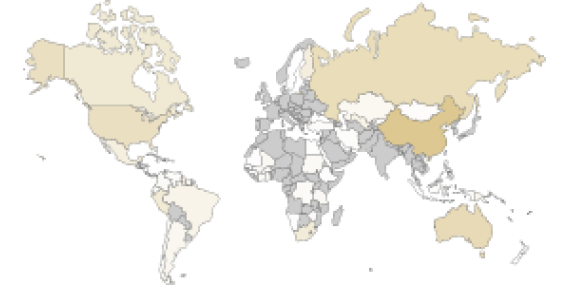
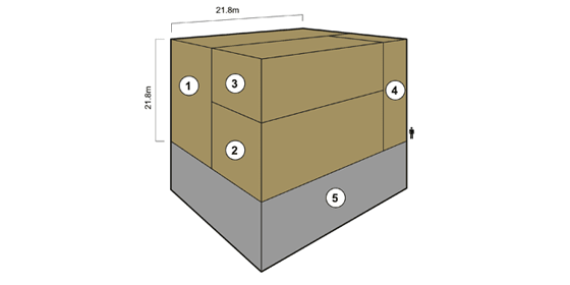
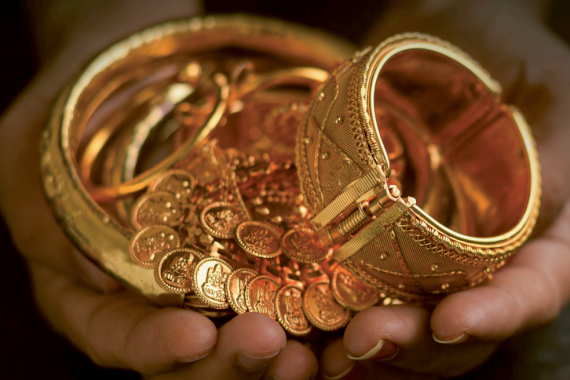


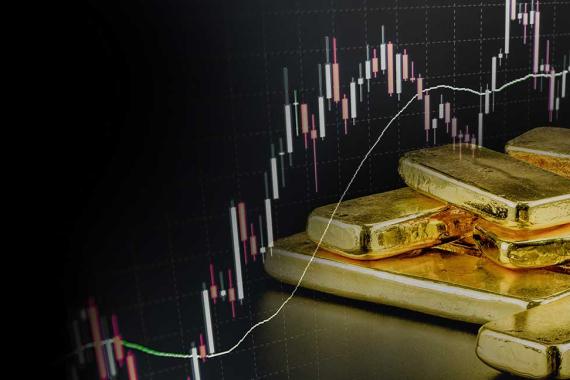
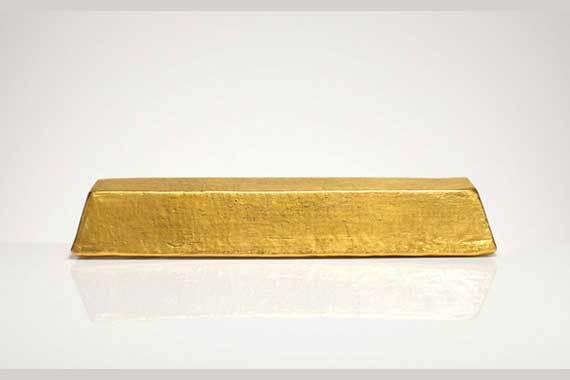
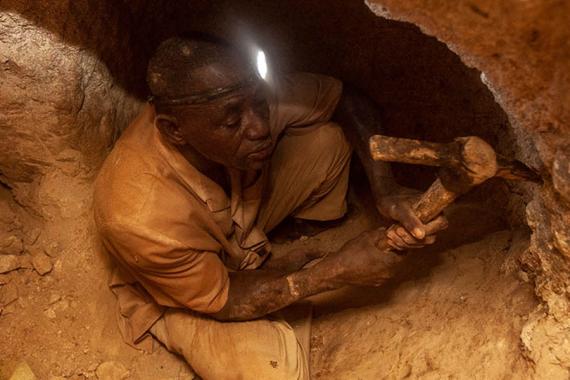
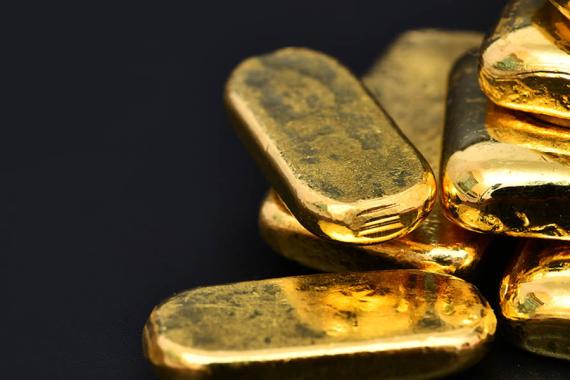
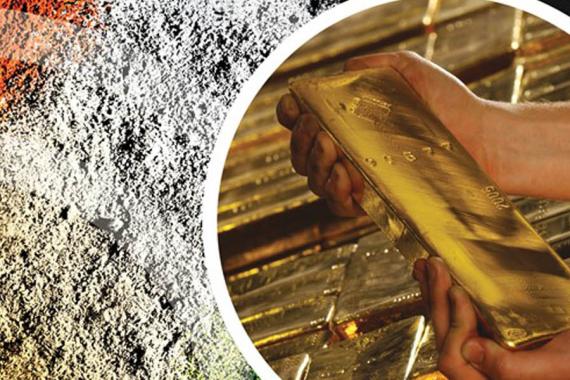

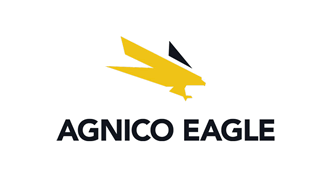
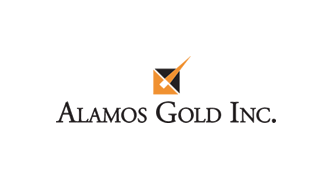
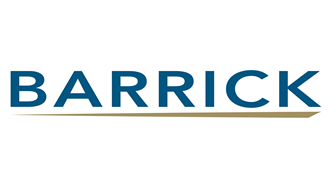
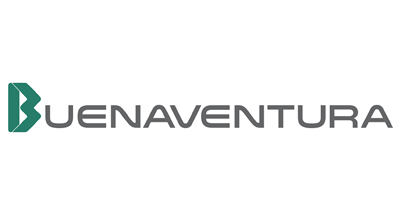
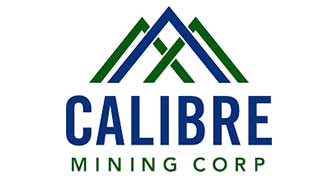
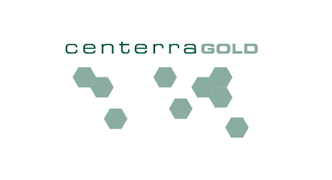
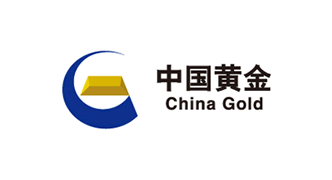
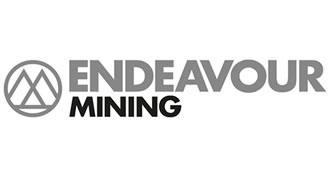
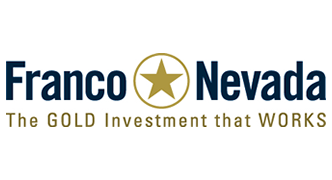
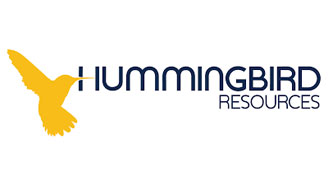
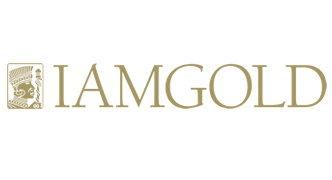
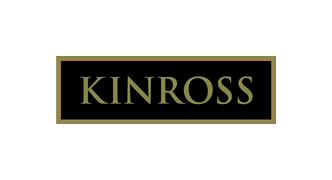
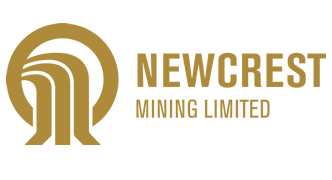
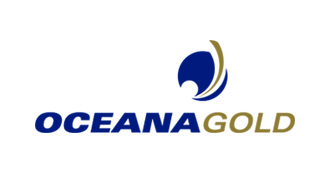
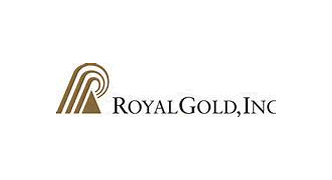


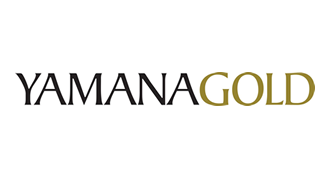
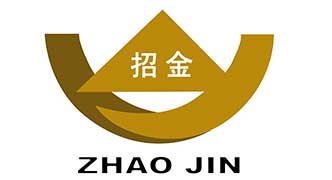
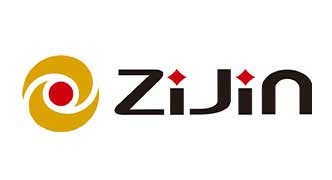
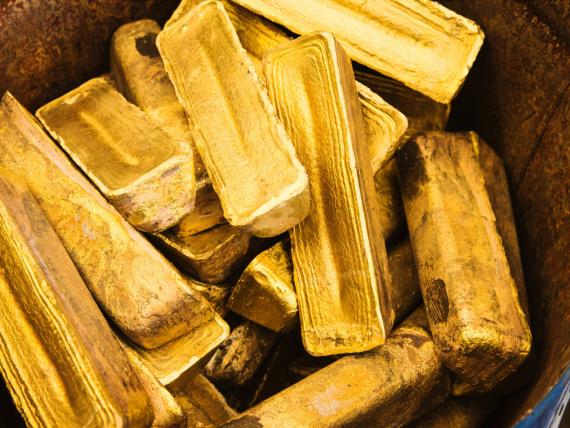

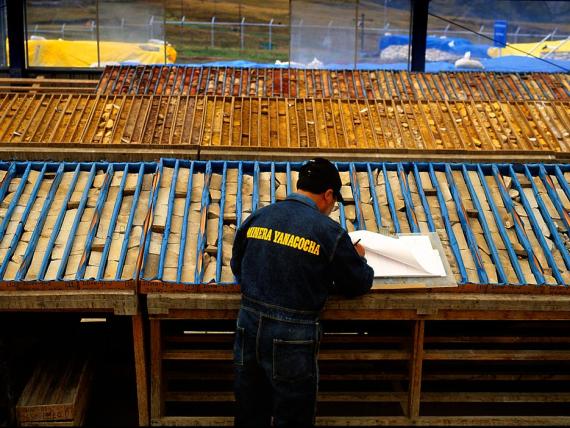

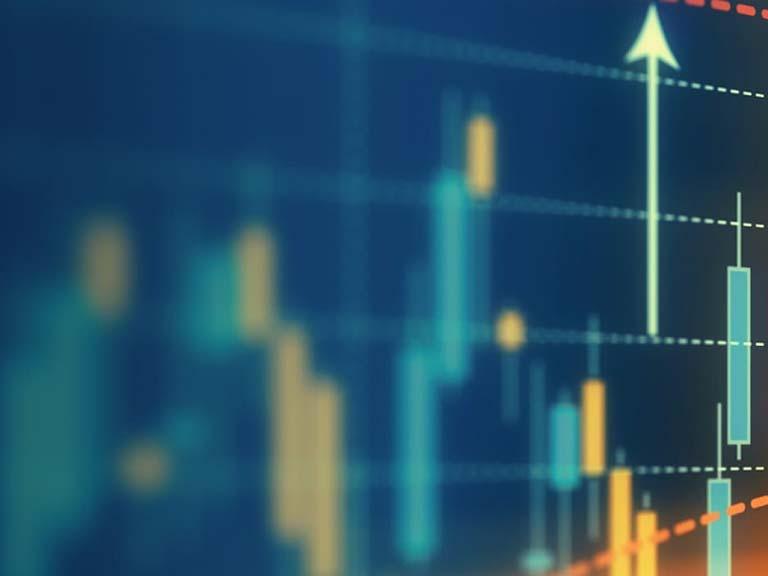
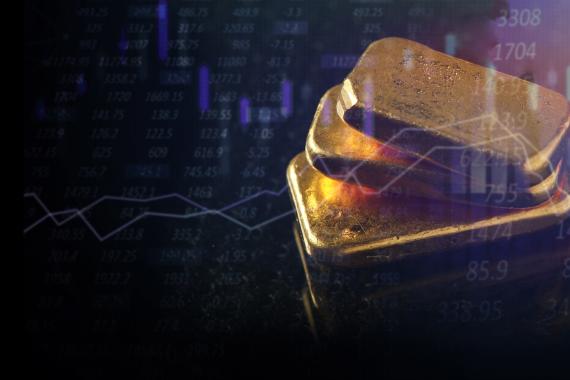
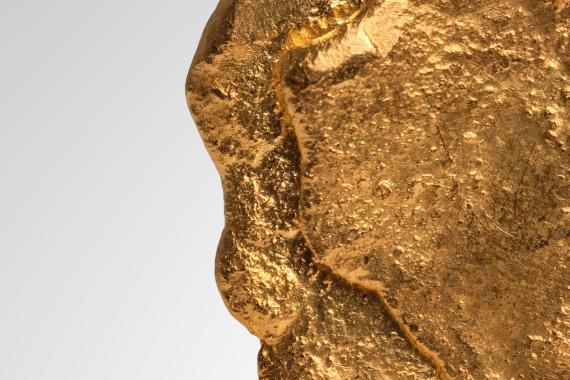
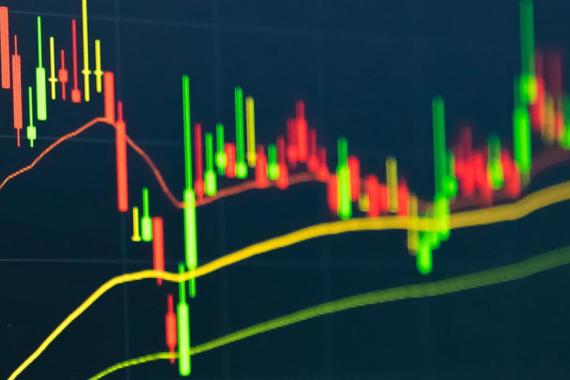



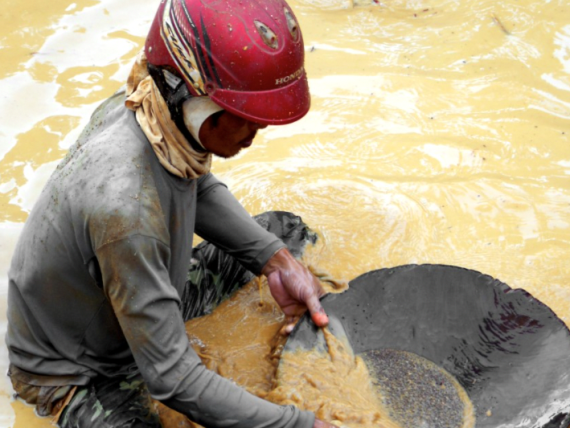
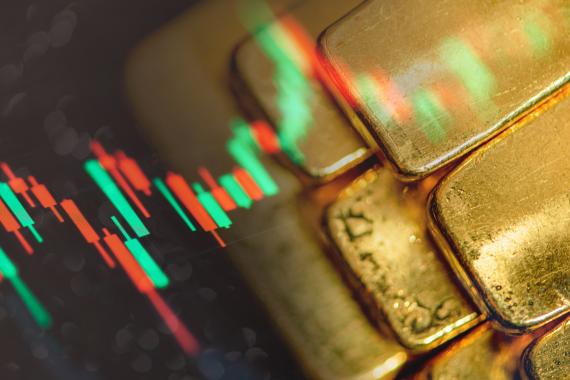






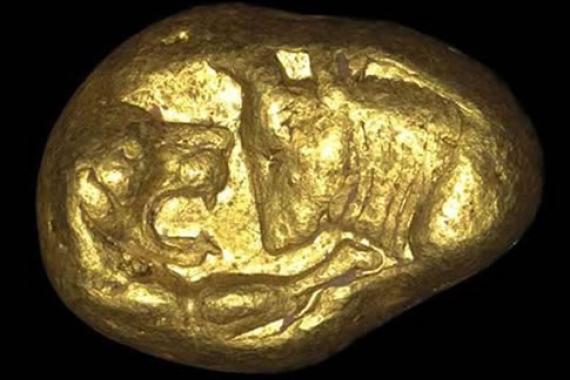

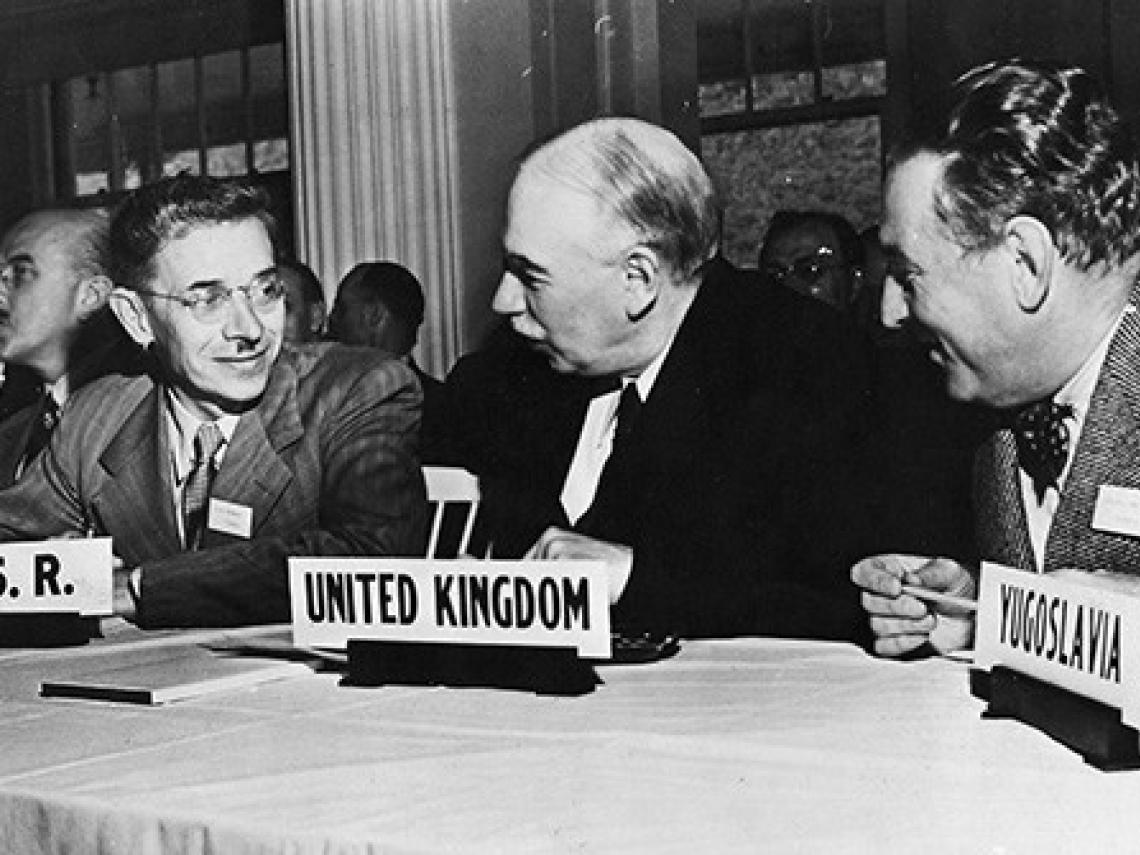

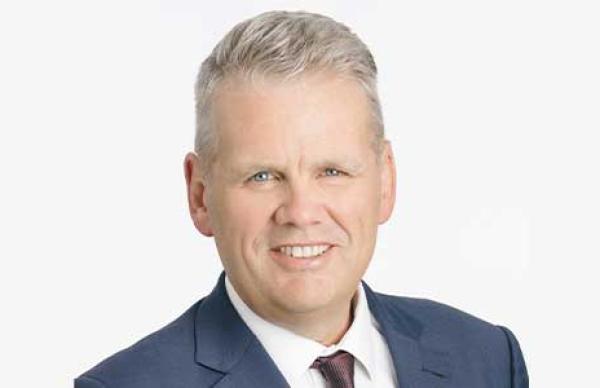
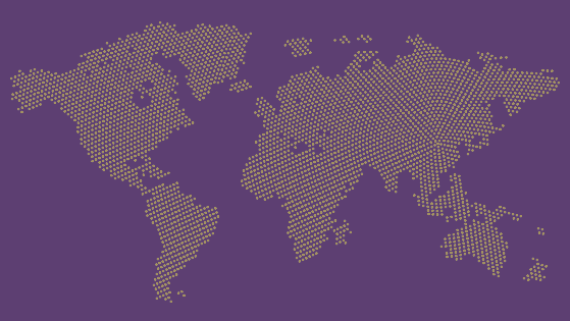
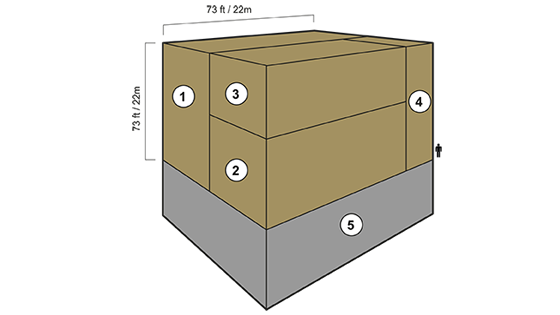
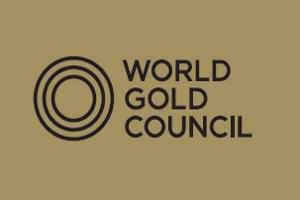
:max_bytes(150000):strip_icc()/photo__james_chen-5bfc26144cedfd0026c00af8.jpeg)
:max_bytes(150000):strip_icc()/ScreenShot2021-11-19at10.19.47AM-f4c32b98185a44faa52a810e41088308.png)
:max_bytes(150000):strip_icc()/KSchmitt2019Color-67b7647ab8114851ab0fd161242d5f89.jpg)
